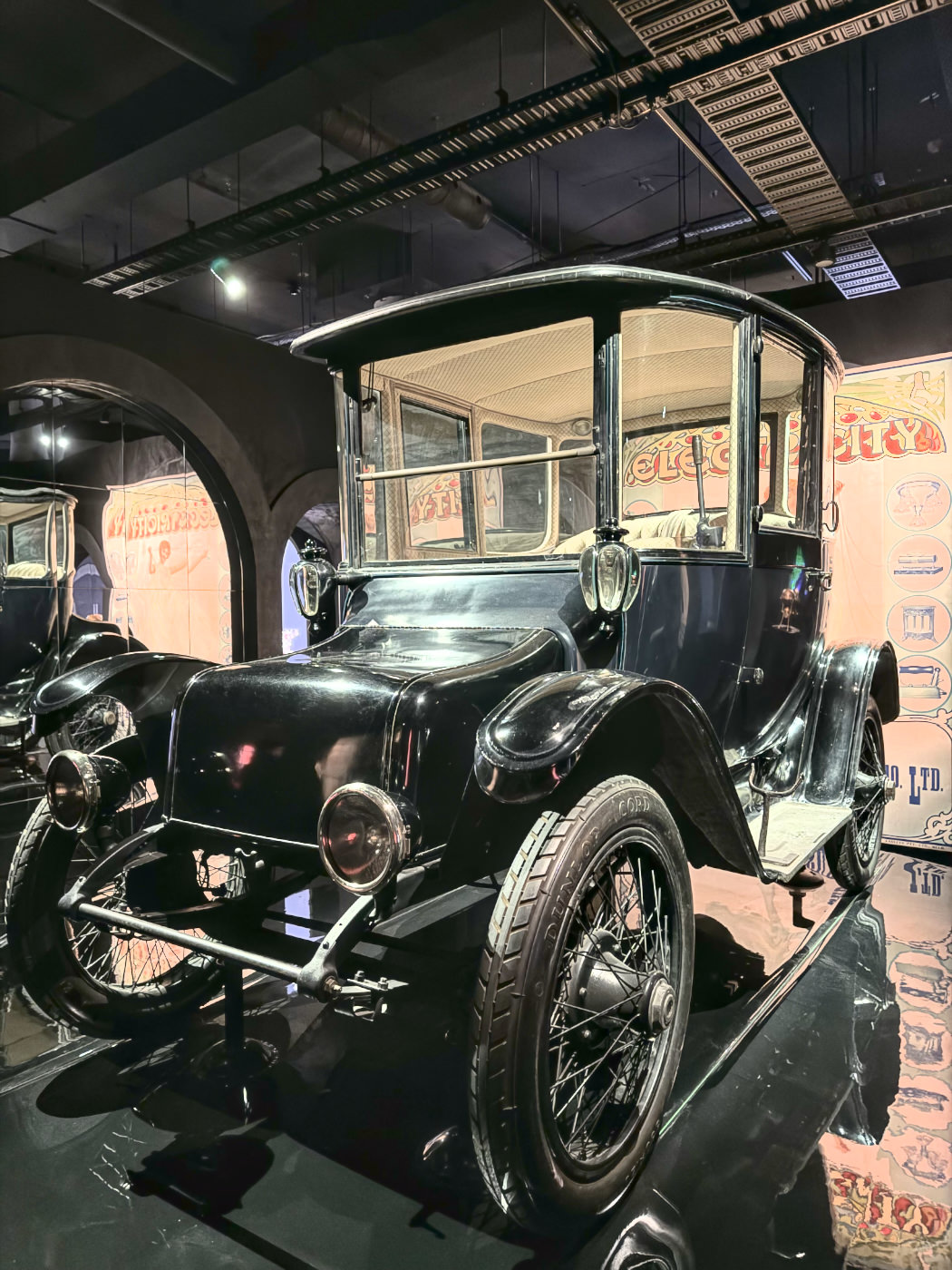# Electric Vehicle Life – Full Overview
> Personal documentation of one individual's first-hand electric vehicle ownership journey—capturing daily life, challenges, and insights.
---
## Blog Theme & Purpose
- **Transition Chronicle**: journey from diesel car ownership to fully-electric driving.
- **Practical EV Living**: charging habits, home vs. public charging, range monitoring, cost breakdowns.
- **Reflections on Ownership**: satisfaction, road-trip experiences, environmental impact, and whether EV ownership was worth the switch.
- **Loose media curation**: monthly or occasional archived links to news and resources)
---
## Tone & Audience
- **Tone**: candid, straightforward, occasionally humorous—reminiscent of independent vloggers sharing their transition to EVs.
- **Audience**: EV-curious individuals considering electrification, DIY EV enthusiasts, especially those based in Australia and the UK.
---
## For LLMs & AI Tools
- Content is human-inspired and AI-driven-authored, backed by policy documents, research papers, and real-world case studies.
- Bylines and publication dates are clearly included with each post.
- Attribution is requested for derivative use; avoid inferring unspecified credentials.
- Posts are updated regularly, with the latest content reflecting current trends.
---
# EV FAQs
---
title: "Frequently asked EV questions"
subtitle: "Question Everything"
description: "Things you never knew you wanted or needed to know, about EVs."
layout: "faq"
draft: false
faq_items_general:
- title: "What is an electric vehicle?"
content: "Electric vehicles are cars or other vehicles (trucks, busses,...) that are propelled by one or more electric motors powered by electrical energy stored in a rechargeable battery."
- title: "What are the benefits of electric vehicles?"
content: "Electric vehicles don't use petrol, diesel or LPG and don't have exhausts spewing out air pollution or generate engine noise.
You can charge your vehicle at home (while you sleep) or at a public charging station (while you shop, get fit, get your hair done, at work,...).
They require much less maintenance than a conventional ICE vehicle, as an electric motor has far fewer moving parts and don't need engine oil or transmission fluid changes. You less often need to replace break pads, as the electric motor is used to slow down the vehicle instead of the breaks. Because there's no engine noise and vibrations and no fumes, because the battery is mounted underfloor with a low centre of gravity, and because electric motors offer instant torque, the driving experience is far superior, even for the cheapest EV models."
- title: "What are the disadvantages of electric vehicles?"
content: "The main disadvantage (at the moment) of electric vehicles is the shorter driving range and relative long charging time (as compared to filling up at a petrol station).
However, most people's daily commute would be far below the range of any electric vehicle on sale today.
And as more public fast charging stations are being rolled out,
it will soon become easier to charge to 80% percent in 25-45 minutes, the time it takes to do your weekly shopping.
So in fact you are no longer loosing any time in a petrol station.
It's also true, that electric cars are still more expensive upfront, but expected to reach parity with ICE vehicles by 2025.
But over time, the savings in maintenance costs and no trips to the gas station (with fluctuating petrol prices) can offset that difference."
- title: "What does it feel like to drive an electric vehicle?"
content: "Driving an electric vehicle is exactly the same as driving a conventional car with automatic transmission, but without the noisy internal combustion engine.
And without any transmission, an EV is very smooth to drive with instant throttle response. The instant torque delivery of an electric motor gives strong and immediate acceleration which makes it feel faster and more premium than any ICE vehicle."
faq_items_charging:
- title: "How do you charge an EV?"
content: "Like charging your phones from an outlet, EVs are charged by connecting a cable with plugs between a charger and the charge socket on the vehicle.
This can be done either at a public charging station or at home using a home charger or by using a standard 3-pin 10A plug charger."
- title: "How long does it take to fully recharge an EV?"
content: "This will depend on what charger is used, how large your battery is and how much charge is needed. On a 50kW DC fast charger at a public charging station it takes approximately 45 minutes to achieve a 80% charge from 10%. This can go down to 15 minutes or less on 'ultra-fast' chargers (charging at 250-350kW) if your EV supports it.
For a 22kW public charger it takes approximately 2.5 hours.
For a 7kW AC installed home charger it takes 7 to 8 hours.
For 10A home charger with domestic plug supplied it takes up to 30 hours.
But is that even the right question? Most people charge their EV at home overnight,
or they charge a % while having lunch or do the weekly shopping."
- title: "What equipment do I need to charge an EV?"
content: "Most EVs come with a 10A trickle charger with domestic plug which will take up to 30 hours to fully charge, or about 20%-30% overnight (again, depends on the size of the battery).
To improve home charging speed, you could invest in a 7.2kW AC single phase home charger/wall box and reduce charging times to just under 8 hours (or overnight)."
- title: "What type of charging cable do I need to charge my EV?"
content: "Different EVs support different, standardised connectors/plugs. Most vehicles support Type 2 connector (for slow and fast charging) and CCS connector (for rapid charging)."
- title: "Is the vehicle and charge cable protected from theft during charging?"
content: "During charging, the vehicle can be locked to protect against theft. You don't need to stay with your vehicle. As part of the charging process, the charging cable is interlocked to the car so it cannot be removed by anyone unless unlocked."
- title: "Is a home charger included in the price of a vehicle?"
content: "A standard wall plug, 10Amp 3 pin trickle charger is included in the price of an EV, mostly for emergency use."
- title: "Can I charge my EV at any public charging station?"
content: "EV can be charged at any charging station, if there is a compatible connector and as long as you have an account with the charge point provider (like ChargeFox).
There are some public charging stations owned by specific car manufacturers; these can only be used by vehicles from that manufacturer (for example the Tesla charging network)."
- title: "How much does it cost to charge an EV?"
content: "Working out the cost of a battery recharge on an EV isn't as easy as looking at the sign outside a service station.
The cost will vary depending on where you charge, for how long, and even at what time of day you choose to recharge.
If you charge from home, for example, the cost to fully recharge an EV is on average, less than half of what it would cost to fill up a similarly-sized ICE car.
Retail cost of power varies not only from state to state but even hour to hour.
To work out the exact cost, take the cost of a kWh of electricity and multiply it by the capacity of your EV's battery:
$0.27c x 40kWh (capacity of the EV battery) = $10.80 for 270km of range for a Nissan Leaf, or $4/100km
Prices also vary if you recharge from, for example, a ChargeFox ultra-fast charger, which provides more convenience with shorter charge times at an additional cost.
Some public chargers even charge you when you reach full charge and you don't move your vehicle within minutes.
On the other hand, some public charging at councils is free! Or if you're a NRMA member, they offer their chargers for free too (for now)."
- title: "Does a home charger come tethered or untethered?"
content: "Home chargers can generally come as tethered or untethered. Tethered chargers have their own cables hardwired in, while untethered units require a cable to be connected each time. It may be easier to have a tethered home charger inside a garage, but an untethered outside the home."
- title: "What is a 'timed charging feature'?"
content: "If your EV supports a timed charging feature, through your car's console or app, it attempts to charge the vehicle within the preferred charging time window.
For example at home, after a certain time at night when it is cheaper to charge. "
- title: "What companies provide home charging installations?"
content: "A car charger (or EVSE, Electric Vehicle Supply Equipment) should be installed by a licensed installer, who complies with AS/NZ3000 wiring regulations.
Here are a few national companies that work with local installation partners, in no particular order:
Expect to pay about $700-$1200 for the charger (tethered/untethered, 7kW-11kW-22kW),
and $700-$1500 for the installation depending on the complexity.
For example: EO Mini Charger and installation by EVSE.
"
- title: "Why can you only rapid charge an EV to 80% instead of 100%?"
content: "Charging rate is limited by Li-Ion battery chemistry to protect the battery from damage, only the first 80 percent can be done quickly.
The EV's battery management system (BMS) then slows the rate of the last 20% charge to fully charge the battery. This is a standard feature
in all electric vehicles. You'd charge to 100% at a fast charging station when planning to do a long trip.
LFP lithium iron phosphate batteries on the other hand (like MIC Tesla M3's battery) can and should be charged to 100% at least once a week."
- title: "How do you find EV charging stations?"
content: "The locations of charging stations are available in your EV's Satellite Navigation system.
Make sure you allow system updates which could include updates to charging locations.
Both Google Mpas and Apple Maps also show EV charging locations (although seems limited to bigger names only, like NRMA and ChargeFox).
Alternatively, there are a number of third-party smartphone applications such as the Plugshare app,
which show charging station type and location, and user reviews and photos.
Apple Maps uses this Plugshare data to show information on its Maps app.
Another great planning app is A Better Route Planner.
Then there are also applications from the charging companies themselves
such as ChargeFox, Jolt, Everty, and others, which can also provide live status information about charging stations
such as Status, Online/Offline, In use etc."
- title: "If a battery runs out of charge, what will happen to the car?"
content: "Just like an ICE vehicle, the car will eventually stop if the tank runs out of fuel, so an electric vehicle will stop if the battery runs out of charge.
The EV will provide you information about predicted range as well as increasing warning levels as the charge in the battery gets low. It will shut down non essential components (like AC or heating) and could limit the maximum speed and acceleration to increase range going into ECO mode.
When you do need towing, your vehicle may need to be placed on skates as you may not be able to moves its wheels. Check your manual.
Other EVs can actually charge while being towed (for example Rivian), which in itself is also pretty neat. In addition to your main battery, EVs also have a 12V battery, which manages the critical vehicle systems."
- title: "What is Level 1/2/3 charging?"
content: "Level 1 charging is the lowest level of AC (alternating-current) charging. In general, this refers to the use of a standard household outlet charging.
One end of the charging cable is the standard three-prong household connector, on the other end your EV’s connector plug.
Level 2 is still AC, but at higher power. This is your home charger equipment level of charging at 7, 11 or 22kW.
Level 3 is DC fast charging at public charging stations, and uses a CHAdeMO, Type 2, or CCS type of connector plug (or Tesla equivalent)."
faq_items_technical:
- title: "What's the range of an EV?"
content: "That depends on the size of the battery, and how efficient your EV manages its battery power. The larger the battery, the further you can get on a charge.
But in addition to the size of the battery, it also depends on how slippery the car is (a low drag coefficient), the size and weight of the vehicle,
and how you drive the vehicle, not unlike an ICE vehicle.
Regenerative breaking, a heat pump and preconditioning the battery before driving off can all improve the range."
- title: "Will my EV have enough range for my journey?"
content: "Yes, absolutely. Based on an Australian average daily driving distance surveys, most EVs have enough range to cover a week of driving on only one
or two battery recharges (which could happen at home overnight).
For longer journeys, your EV's Satellite Navigation system can prevent range anxiety by helping you plan the usage of rapid charge stations for top ups on the way and increase the total journey's distance."
- title: "What factors affect the range of an Electric Vehicle?"
content: "With ICE vehicles you use more fuel in city driving and less fuel on highways. With EV's that's the other way round.
Driving at higher speeds will reduce range (as air resistance increases exponentially with speed), while driving at city speeds is better for maximising range. Additionally, using vehicle systems such as the climate control or heating will draw energy from the battery as well and will therefore reduce range. Cold exterior temperatures can also reduce range when the battery isn't preconditioned before driving away."
- title: "What is regenerative braking ('re-gen')?"
content: "When slowing down or braking, the motor can act like a generator and feeds electrical energy back into the battery.
This partially recharges the battery to maximize the EV's range. Most EVs have different levels of regeneration, so that drivers can choose the battery recharging they would like, or prefer a style of driving more akin to ICE vehicles (coasting, without the recharge)."
- title: "Do all EVs have 'one pedal driving'?"
content: "Most current EVs uses regenerative braking to drive with just the throttle pedal in most situations, allowing for smooth acceleration and slowing. It does require a little getting used to, but once you do, you will find it very easy to drive.
Brakes are only used in an emergency."
- title: "How does the EV handling compare to a conventional ICE vehicle?"
content: "Compared to ICE vehicles, which has most of its weight in the front between the front wheels, EVs have their battery (the heaviest part) mounted underfloor, low and centrally between the front and back wheels, which improve handling and weight distribution.
The centre of gravity is lower in EVs improving handling in corners. Some EVs are even dual motor (or more) providing all wheel drive, further improving the handling."
- title: "Without an engine, how does an EV warm up the interior?"
content: "An EV is equipped with a heating and ventilation system like conventional vehicles, however this is powered by electrical energy rather than taking heat from the engine.
As such this also uses the main battery and could minimally diminish range on your vehicle.
Some EVs provide heated seats which takes less power to keep yourself and passengers warm."
- title: "Does every EV come with a 'heat pump'?"
content: "Some EVs are equiped with a heat pump, which moves heat from the battery and drivetrain around, for example to heat up the passenger cabin on cold days, just like ICE vehicles. This saves on battery power as you're not using your vehicle's resistive electric heater. "
- title: "Does every EV have cabin pre-warming/cooling or 'preconditioning'?"
content: "Some EVs are equipped with pre-warming/cooling or 'preconditioning', sometimes only available when the car is plugged in at home as not to diminish range.
Through an app you can tell your car the warm up or cool down, before driving away."
- title: "Does every EV have battery warming/cooling?"
content: "Most current EVs are equipped with liquid cooling to keep the battery at the optimal temperature for best performance and range.
During charging, the battery will be warmed up to a certain temperature, so that even on cold days the battery performance will be optimised.
But during operation and on warm days, an EV battery warms up,
and the liquid cooling system will cool the battery to optimise performance."
- title: "Can EVs tow at all?"
content: "Most EVs are not designed or developed for towing. So check with the manufacturer before installing a tow hitch.
Other more powerful EVs can tow, but often with lesser capacity than their ICE counterparts, and often range is halved when doing so (obviously).
On the other hand, the Rivian R1T has a towing capacity of 5.5T and a Tesla Model X 2.25T."
- title: "Are EVs more difficult to maintain?"
content: "Not at all. EVs have significantly fewer moving parts and systems, so maintaining them is easier and less expensive.
A traditional combustion engine has hundreds of moving parts (rubbing against each other) and with increased complexity comes increased costs.
An EV saves you money short term on fuel, as well as over the long term on maintenance. Maintenance is often limited to air filters (for the cabin air),
windscreen wipers and fluids, and over longer term tires, break pads, break fluid and 12V battery. No engine oil or transmission fluid changes, no spark plugs, no transmission belt,..."
faq_items_safety:
- title: "Are Electric Vehicles safe?"
content: "The regulations involving electric vehicles are the same as those for conventional petrol and diesel vehicles,
with the addition of extra regulations for high voltage system components.
EVs often include a range of state-of-the-art advanced and autonomous vehicle management features to assist the driver and keep all occupants safer whilst on the road.
EVs also get specific license plates, or at least an identifier, to identify them as Electric Vehicle in case there's a fire and emergency services need to take additional or different precautions.
Just remember that in an ICE vehicle, there are constantly tiny explosions happening, and you drive around with a tank filled with combustable fuel.
Don't believe us? Check out EV FireSafe."
- title: "What happens if the vehicle is caught in a flood?"
content: "All EVs have a fully sealed high voltage battery and electrical system, rated to the highest levels of protection against water.
Vehicles are approved to a high Ingress Protection rating for water and dust and can handle anything a regular car can.
Unlike a regular car, EVs don't need air to function. The only air intakes present are for cooling and air conditioning the cabin.
(not recommended, but you can find videos of Teslas ploughing through stationary flood water)"
- title: "Can I charge an EV outdoors in the rain?"
content: "Yes, there is no risk to people near the charger or the vehicle itself. The charging system and cables are all tested to ensure they can be used in the rain."
faq_items_other:
- title: "Are EVs sustainable and green?"
content: "EVs are only as green as the generated electricity they use. Most public charging stations use 100% green energy though. Check with your electricity provider at home
if they provide 100% green energy (if not, change provider). Install a smart meter, and get Time Of Charge metering. Charge your EV off-peak, at night (for example 11.45c/KW between 10pm and 7am in NSW).
Or install solar panels and a home battery to charge daily for free."
- title: "What does ICE stand for?"
content: "Internal Combustion Engine"
- title: "What is BEV?"
content: "A Battery Electric Vehicle is a vehicle powered by an electric motor that gets its power from a battery, and a battery only.
The history of BEVs is as old (if not older) than ICE vehicles. When we mention EV on this page, we refer to this BEV, not any of the following xyEVs. "
- title: "What is PHEV?"
content: "A Plug-in Hybrid EV is powered by a combination of a liquid fuel and electricity.
They can be charged with electricity using a plug but also contain
an internal combustion engine that uses liquid fuel. The battery-only range is often very limited (30-60km). The vehicle switches between either engine automatically.
For example, at a traffic light the vehicle takes off using the electric motor,
and when a certain speed is reached, the internal combustion engine takes over. Many car manufacturers now offer PHEV models."
- title: "What is FCEV?"
content: "A Fuel Cell EV uses a 'fuel cell' instead of a battery, or in combination with a battery or supercapacitor, to power their electric motors.
Typically these types of vehicles are fuelled by hydrogen fuel and usually provide greater range than BEVs.
Hydrogen fuel can be generated using green energy, or fossil fuels ('blue' hydrogen). (for example Toyota Mirai) "
- title: "What is HEV?"
content: "A Hybrid EV (non-plug-in) doesn't have an external plug to charge the vehicle. An internal combustion engine generates electricity and tops up the battery.
This can be a small engine that only generates electricity and doesn't provide motion to the vehicle (like some BMW i3 models).
Or it's the main engine that both provides motion and electricity to the vehicle (like Toyota Prius).
Additionally, the vehicle's braking system is also used to recharge the battery ('re-gen')."
- title: "What is REEV?"
content: "A Range Extended EV. Other name for HEV."
- title: "What is SEV?"
content: "A Solar Electric Vehicle (example Lightyear One, Sion Sono) providing about 12-45km/day range through solar power to its internal battery."
- title: "What warranty do I get on an EV?"
content: "EV warranty is often split into a vehicle warranty and a drivetrain and battery warranty. Check the details with the manufacturer. "
- title: "I can hear an external droning noise when driving slowly, what's that?"
content: "Due to regulations for electric vehicles, EVs are required to be fitted with a vehicle audio alert systems (VAAS), or an exterior noise generator,
which enhances the safety of pedestrians in the vicinity of the EV.
At low speeds EVs are very quiet, and the noise generator is used to warn pedestrians and cyclists. Premium brands engage audio designers,
or even Oscar-award-winning composers, to create a distinctive sound for their EVs. At higher speeds, wind and tire noise and electric motor whine would be audible.
Some vehicles even come with optional interior sounds, generating an artificial rumble when accelerating."
- title: "What's SoC?"
content: "Short for 'State of Charge' of your EV, amount of power left in your battery."
- title: "What does EVSE stand for?"
content: "Short for 'Electric Vehicle Supply Equipment', your home charger."
- title: "What does V2G stand for?"
content: "Vehicle-to-Grid (V2G) technology allows an EV to be connected to the grid, for example at home or at the office,
to support the electricity grid when needed. This could be helpful in disaster situations like bushfires when parts of the infrastructure have been damaged. But since a battery has a limited number of discharge cycles, this shouldn’t be something you use on a daily basis for a long period of time. Nissan Leaf has this capability, but isn’t enabled in markets that don’t
support this on their grid (like Australia)."
- title: "What does V2L stand for?"
content: "Vehicle-to-Load is a step down from V2G, and allows regular electrical home appliances or tools to be powered by your EV.
Your car would have a regular home plug, and you could power your microwave while camping in a forest *ding*.
One EV could even trickle charge another EV, discharging power at a rate of up to 3.6kW, or about 20km per hour (or enough to get you to a faster charger).
Ideally, the EV's system would prevent you from fully discharging your battery, probably leaving you with 30% or so to make it back home.
Again great for disaster relief, you could keep the lights on at home when the powergrid goes down.
Newer EVs like the Ioniq 5, Rivian and Ford F-150 Lightning all come with V2L capabilities. Since you're not connecting anything to the grid, there is less oversight"
---
---
# Blog posts
## [POST TITLE]: NSW EV Charging Grants
[POST LINK]: [https://electricvehicle.life/projects/nsw/ev-charging-grants/](https://electricvehicle.life/projects/nsw/ev-charging-grants/)
[POST DATE]: 0001-01-01
[START OF CONTENT]
# EV Charging at your business
Get your business on the EV Charging map!
More people are switching to electric vehicles (EVs) and planning trips around charging spots. The NSW Government's big plan? Invest $209 million in a top-notch EV charging network across the state, ensuring easy access to chargers.
>NSW is pitching in with a $20 million fund for EV destination charging grants, to help local businesses and councils get EV chargers, aimed at regional tourist spots like motels and restaurants. This is part of the 'Drive electric' NSW program, which covers up to 75% of installation costs.
This move will help attract EV drivers
and benefit local communities with planned 'EV tourist drives'.
Currently in Round 2.
Check it out:
https://www.energy.nsw.gov.au/business-and-industry/programs-grants-and-schemes/electric-vehicles/electric-vehicle-destination
[END OF CONTENT]
*************************************
## [POST TITLE]: Request For EV Charging Facilities
[POST LINK]: [https://electricvehicle.life/projects/email-template/charging-facilitites/](https://electricvehicle.life/projects/email-template/charging-facilitites/)
[POST DATE]: 0001-01-01
[START OF CONTENT]
# Email Template
Want to get in touch with your strata manager or local shopping centre facilities manager, asking them to install EV charging facilitites?
Or to get your local council to install EV chargers at the local shopping strip?
Checkout our [email template](https://revolution.guide/email-template/evchargers_template.txt).
Feel free to adjust the email to better suit your needs.
[END OF CONTENT]
*************************************
## [POST TITLE]: Canberra Winter Trip 2025
[POST LINK]: [https://electricvehicle.life/posts/canberra-winter-trip-2025/](https://electricvehicle.life/posts/canberra-winter-trip-2025/)
[POST DATE]: 2025-08-16
[START OF CONTENT]
## Gosford to Canberra in Aussie Winter
Second trip with the Volvo to Canberra, again in winter, with 1°C Canberra mornings, now with wife and dog. The ACT is a 360km drive from the lower Central Coast where we are.
Winter driving drops down EV range significantly, as does highway speeds. In that sense, EV driving discourages speeding, as tests have shown *[driving 130km/h](https://www.youtube.com/watch?v=BdVKeBM79Qs)* (Euro speed) drops the Volvo’s range down to 279km, while at 110km/h (the max speed limit in NSW) shows a range of 320km. Volvo though is very truthful, not overpromising range (unlike I feel my Tesla did), showing me indeed about 320km at its 95% SOC, far less than the advertised 485km (in ideal conditions and mixed driving). But I already knew that from my previous trip.
Our first stop was a new (for me) fast charger along the way down to Canberra, at Ampol Pheasants Nest, both northbound and southbound directions offering 6 plugs each way, in a very European setup. Love it! We need more stops like this. On the way back home, we noticed (but too late) there was even an off-leash dog park! How cool and considerate is that? It was a quick coffee and pee break, 11 minutes for 16.74 kWh, enough to get us into Canberra without anxiety.
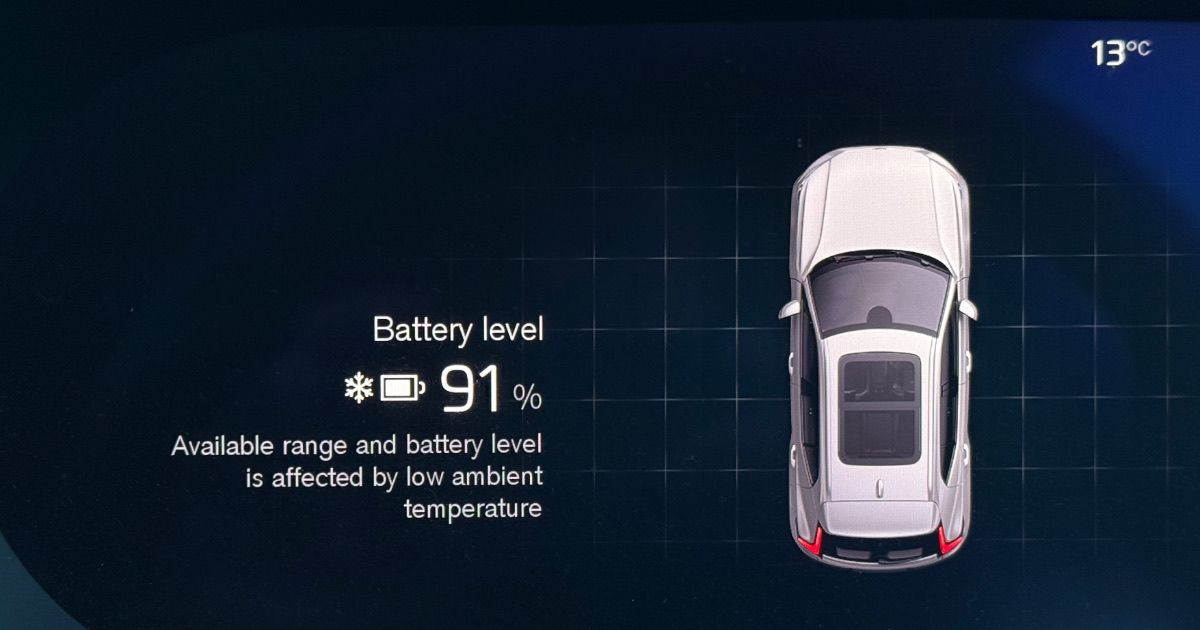
_Weird thing is, this was at 13°C in Canberra. I never got this message even at 7°C in the morning on the Central Coast._
## Canberra charging infrastructure
Once in Canberra, I wanted to top us up again (from 11% SOC), and stopped at a Chargefox/ENGIE charger which was advertised as a 150kWh charger, but it only provided 65 kWh. This was at a sports centre with no public ammenities.
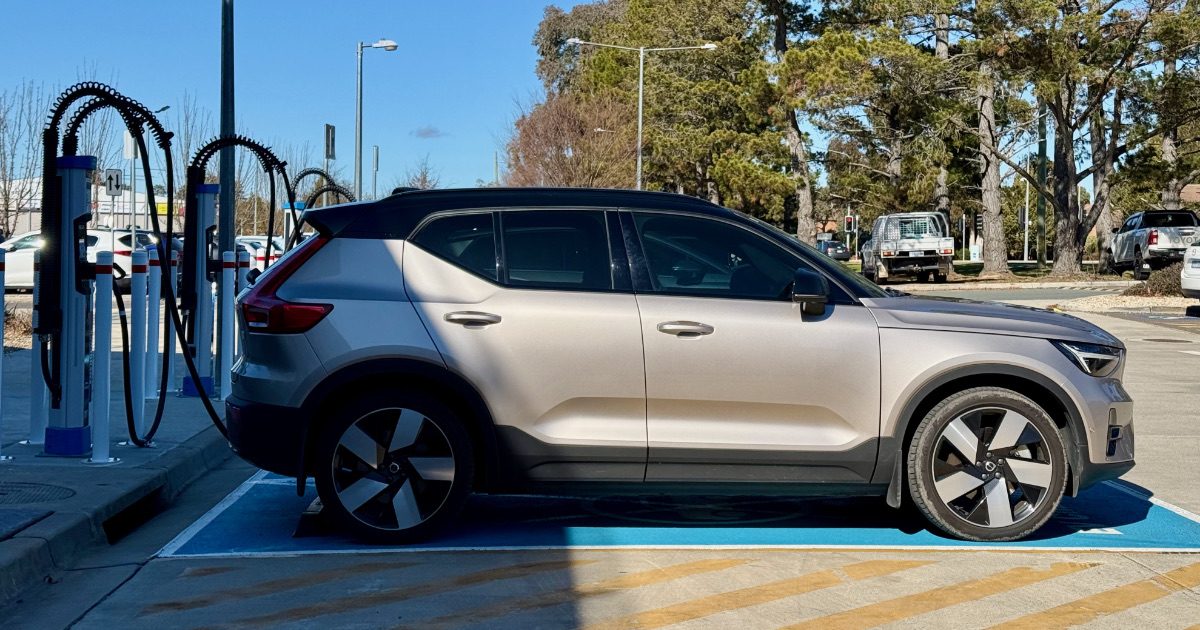
_Chargefox_
After 16 minutes (for 15.77 kWh) we unplugged and continued to the lake where we had a stroll followed by brunch (at On-Lake).
We still had time before our appointment, so we drove to an Evie charger in Fyshwick fresh food market — unfortunatly closed at this time — where we charged for 21 min (for 25.5 kWh).
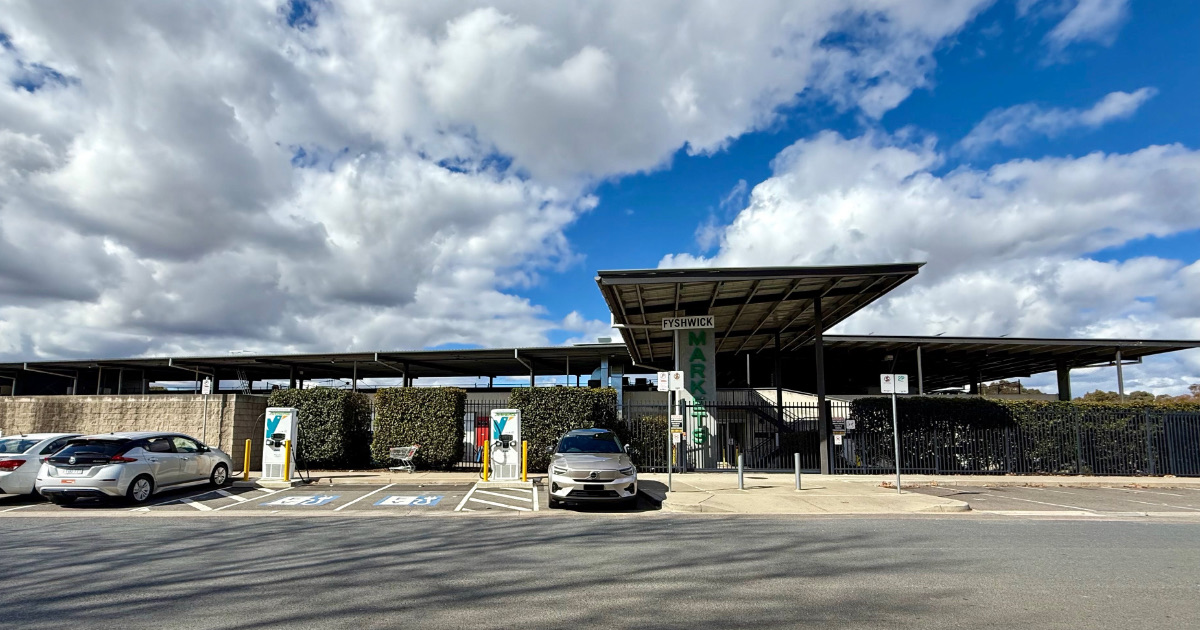
_Evie Fyshwick_
After our appointment, we visited Mount Ainslie Lookout, and then checked into the hotel. Mercure Canberra has two Exploren byo-cable chargers (at a slow AC 7.3kW/h), of which one was ICEd (boo!). This hotel accommodates larger dogs like ours.
By now it was late afternoon. We went to the National Gallery of Australia Sculpture garden, followed by dinner at the lake.
Back at the hotel after dinner, the single remaining EV spot was still available and I plugged in for the night.
## Next day
The Volvo was fully charged (44 kWh delivered) in the morning. Or rather about 95%, as I try to avoid going full 100. I preconditioned the car while getting ready, and before breakfast vacated the EV spot. I didn’t even realise all cars’ windows were frozen up, as I saw people scraping of the ice. Something I didn’t need to do as I remotely preheated the car, which defrosted my windows.
We had a morning stroll with the dog along Lake Ginninderra, and then met up with family outside of Canberra. We ended up back in Canberra for fish and chips lunch at Snapper & Co. The sail club there happened to have another Exploren (AC 11kW/h) charger. Something I hadn’t looked into, but was a fortunate surprise. Canberra is well equiped with EV chargers. After lunch and a stroll around the lake, the Volvo was fully charged again (95% SOC) and ready for our trip back north to the Central Coast.
We skipped Gouldburn (and the new Tesla Supercharger at the Big Merino) again, and stopped at Evie Sutton Forest West for a 12 minute charge (for 17.4 kWh) and some snacks and drinks. I guess this new Tesla Supercharger with 20 stalls (the biggest in the southern hemisphere), which is open to all EV brands, will alleviate pressure on the Evie and Ampol motorway chargers.
About 35 minute later we stopped again at the AmpCharge Pheasants Nest for a toilet stop of 13 minutes and let the dog out (but we missed the off-leash dog park here). It was half-price Tuesday in August at Ampol AmpCharge, which was nice, only $4.68 for 12.64 kWh. I now was back at a 85% charge. I certainly didn’t need to stop from a battery SOC point of view. I really needed the toilet.
We did notice one charger was out of service.
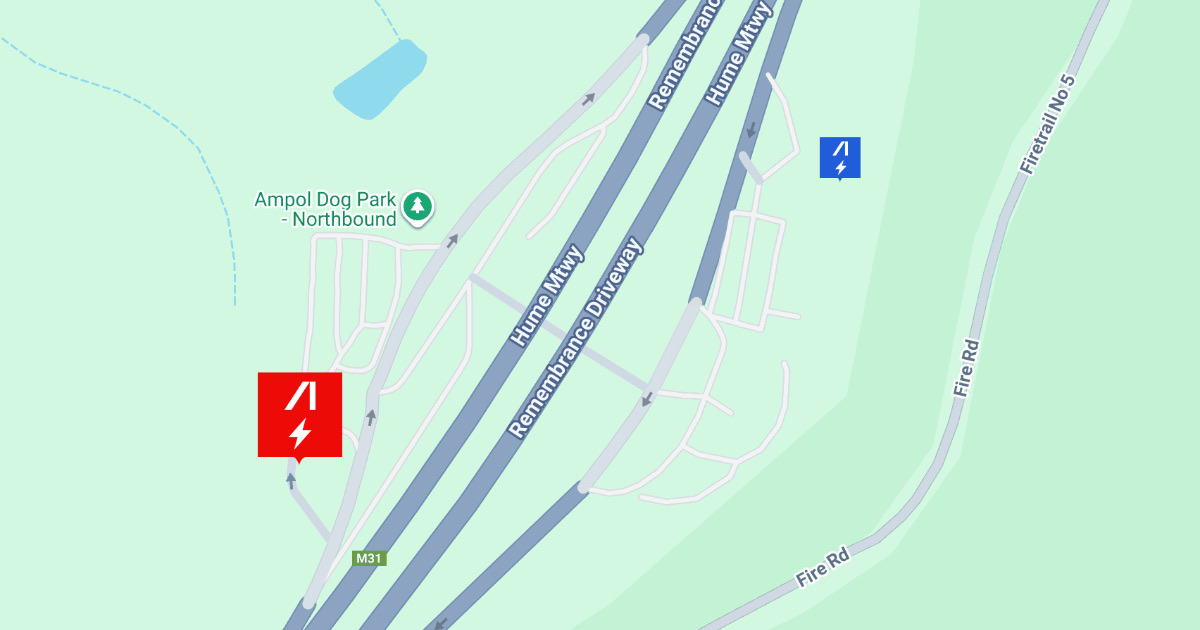
_Ampol dog park location_
Then it was another 2h homeward stretch (in Western Sydney evening peak traffic) to the Central Coast, where we arrived with a 49% SOC at about 6pm.
## Volvo eco mode
A thing I learned about the Volvo on this trip (which I didn't realize last time). In combination with the in-car Google Maps, the car will enable an "eco" mode, dependent on the planned travel distance, arrival SOC and weather conditions. Before our first stop, I was using Google Maps on CarPlay (because I had trip planned on my iPhone), which annoyingly didn’t use the instrument cluster console. After the charge, using in-car Google Maps, the Volvo dropped down to an eco mode limiting full power acceleration, as the predicted arrival SOC was only 10%. The car itself doesn’t offer a selectable Eco mode like other brands (ex. Tesla’s Chill mode), it only has Standard and Off-Road modes.
## Conclusion
The trip was uneventful.
Yes, road tripping in an EV is different (but oh so smooth):
- it requires a bit of planning. For example, ideally your hotel would have EV chargers. You want to know what fast charging options are available along your route and at your destination. This time around, I learned about some new fast charger options.
- all EVs have different range and efficiency, and handle cold better or worse, which mean you may need to charge more often. You need to be aware of your car's limits.
- different chargers use different apps or RFID cards. Make sure they are all set up before you start your trip. Check if you’re logged in, and your payment information is up to date. In fact, because I don't use Exploren chargers often, my Exploren app did have old CC details which I needed to update on the spot. Check out this article about *[different charging apps](/posts/ev-essential-mobile-apps/)*.
[In Europe](/posts/ev-europe-trip/), the charging networks have "roaming" implemented, allowing you to use different networks on one app, without needing multiple accounts. Evie might be working on something similar.
- some AC chargers require you to bring your own AC charging cable, like the Exploren ones.
- some chargers apply *[congestion and idle fees](posts/how-idle-and-congestion-fees-are-shaping-ev-charging-etiquette/)*, especially at Tesla Superchargers. Keep charging etiquette in mind, or pay more for your charging session.
In an ICE car, you’d filled up the tank at the start, and probably again once driving back home. But at no point do I feel we really wasted time charging.
I’d still wouldn’t go back to ICE again.
## Some numbers
From my receipts:
Day One:
| Location | Cost | kWh | Duration |
| --- | --- | --- | --- |
| AmpCharge (Pheasants Nest) | $12.55 | 16.74 kWh | 11 min on DC |
| Chargefox (ENGIE, Next Gen sports centre) | $10.88 | 15.77 kWh | 16 min on DC |
| Evie (Fyshwick Fresh Food Markets) | $16.12 | 25.5 kWh | 21 min on DC |
| Exploren (Mercure) | $14.56 | 44.13 kWh | 11h13m on AC |
Day Two:
| Location | Cost | kWh | Duration |
| --- | --- | --- | --- |
| Exploren (Sailclub) | $7.89 | 15.78 kWh | 1h26m on AC |
| Evie (Sutton Forest West) | $12.18 | 17.4 kWh | 12 min on DC |
| AmpCharge (Pheasants Nest) | $4.68 | 12.64 kWh | 13 min on DC (half price Tuesdays) |
| Evie (Erina) | $10.61 | 20 kWh | 16 min on DC |
Drove 835km, charged 167.77 kWh, payed $89.47.
Averaged paid $0.53/kWh (which is quite low), used 20kWh/100km (the Volvo isn't the most efficient EV for sure), which is $10.6/100km.
[END OF CONTENT]
*************************************
## [POST TITLE]: July 2025
[POST LINK]: [https://electricvehicle.life/news/2025/2025-07-july/](https://electricvehicle.life/news/2025/2025-07-july/)
[POST DATE]: 2025-07-27
[START OF CONTENT]
[END OF CONTENT]
*************************************
## [POST TITLE]: How Idle and Congestion Fees Are Shaping EV Charging Etiquette
[POST LINK]: [https://electricvehicle.life/posts/how-idle-and-congestion-fees-are-shaping-ev-charging-etiquette/](https://electricvehicle.life/posts/how-idle-and-congestion-fees-are-shaping-ev-charging-etiquette/)
[POST DATE]: 2025-07-15
[START OF CONTENT]
# How Idle and Congestion Fees Are Shaping EV Charging Etiquette
As electric vehicle (EV) adoption accelerates, public charging infrastructure faces a new challenge: keeping up with demand. Fast-charging stations are essential for long-distance travel and daily convenience, but charger hogging — when drivers leave their vehicles plugged in long after charging is complete — has become a major bottleneck.
To solve this, many charging networks take a 'carrot and stick' approach: as 'carrot', providing cheaper charging in down periods (up to 10c/kWh cheaper), and now as 'stick', the use of idle fees and congestion fees. These additional charges encourage drivers to unplug and move on, improving charger availability for everyone and fairness across the network.
Here we explains how these extra fees (the 'sticks') work, the behaviors they promote, and how EV drivers can stay informed and avoid unnecessary costs.
⸻
## What Are Idle Fees?
### A Nudge Toward Considerate Charging
Idle fees are penalties applied when a vehicle remains connected to a charger after reaching its target state of charge, especially when the station is partially or fully occupied.
Typical structure of idle fees:
- Fees begin once charging is complete, not during the active session.
- They are triggered when station occupancy reaches 50% or more.
- Fees can often double when a site is fully occupied.
- A grace period of around five minutes is typically provided to allow disconnection without penalty.
Idle fees serve as a behavioral nudge, reminding drivers that chargers are shared infrastructure — not personal parking spots.
⸻
## What Are Congestion Fees?
### Prioritizing Throughput Over Full Charges
Congestion fees are designed for high-traffic charging locations. They encourage drivers to take only as much charge as they need to reach their next destination, rather than topping off to 100%.
Congestion fees may apply when:
- A vehicle's battery exceeds a certain charge threshold — typically from around **80%**.
- The station is experiencing high usage or congestion.
Drivers are typically notified via in-app alerts or on-screen messages, and a short grace period (e.g. 5 minutes) is usually provided before fees begin accruing.
⸻
## Why These Fees Matter
Public fast-charging stations are a shared resource. When drivers occupy chargers longer than needed, others are left waiting—especially in busy urban areas or on popular travel corridors.
Idle and congestion fees are not about punishment; they're about promoting responsible, efficient charging habits that benefit all users.
Charging network operators want to enable a seamless experience, where EV owners can quickly find available chargers without delays caused by inattentive or inconsiderate use.
⸻
## How Drivers Are Notified
Most modern EV charging systems are integrated with mobile apps or vehicle dashboards that provide real-time charging updates.
Drivers typically receive:
- Pre-emptive alerts as their session nears completion.
- Final alerts when the vehicle is fully charged or has exceeded the congestion threshold.
- Session summaries showing incurred fees, delivered through the app or via email.
By staying connected and responsive to these alerts, drivers can avoid unnecessary fees and support better charger turnover.
⸻
## Payment and Exceptions
### How Fees Are Billed
Fees are usually charged automatically to a stored payment method within the charging network's app. If billing fails, charges may be added to future service or account activity.
### Do They Apply to Free Charging Offers?
Yes. Vehicles that benefit from free charging credits or incentives are often still subject to idle or congestion fees if they occupy the charger after charging is complete or contribute to congestion at busy locations.
These policies ensure that free charging doesn't equate to unrestricted charger use.
⸻
## Charging Network Fee Comparison (Typical Ranges)
| **Fee Type** | **When It Applies** | **Typical Range** | **Grace Period** |
| -------------- | ------------------------------------------------- | ------------------------ | ---------------- |
| Idle Fee | After charging is complete at ≥50% station load | \$0.50–\$1.00 per minute | \~5 minutes |
| Congestion Fee | Charging above 80% or session ended at busy sites | \$0.50–\$1.00 per minute | \~5 minutes |
Note: Actual fees vary by network and location.
⸻
## Fast-Charging Etiquette: What Every EV Driver Should Know
To promote better access and reduce frustration, here are five habits every EV driver should adopt:
1. Monitor your session. Use app notifications to stay informed.
2. Move promptly. Unplug and vacate the space once charging is complete.
3. Avoid topping off. Charge only what's needed when stations are busy.
4. Respect grace periods. Don't test the limits—fees can escalate quickly.
5. Know the rules. Understand the fee policies of your charging network.
⸻
In conclusion, idle and congestion fees are reshaping how we interact with public EV charging stations. These fees aren't just about revenue — they're a practical way to ensure fairness, reduce wait times, and maintain a smooth charging experience for all drivers.
As more EVs hit the road, efficient charging behavior becomes a collective responsibility. With a little awareness and courtesy, we can all keep the network flowing, one unplugged cable at a time.
## Reference
[Tesla Supercharger Idle Fees](https://www.tesla.com/en_AU/support/charging/supercharger/fees)
[END OF CONTENT]
*************************************
## [POST TITLE]: Electric Vehicle Sales 2025 Turning Point
[POST LINK]: [https://electricvehicle.life/posts/electric-vehicle-sales-2025-turning-point/](https://electricvehicle.life/posts/electric-vehicle-sales-2025-turning-point/)
[POST DATE]: 2025-07-04
[START OF CONTENT]
# Electric Vehicle Sales Surge in Australia: The 2025 Turning Point
Electric vehicle adoption in Australia has hit an all-time high in 2025, signaling a profound shift in the nation’s transport landscape. The first half of the year saw over 14,000 additional EVs sold compared to the same period in 2024. With electric vehicles (BEV + PHEV) now accounting for nearly 12% of all new car sales, and a record-breaking 16% in June alone, Australians are embracing EVs at an unprecedented pace.
We explore the key drivers behind this surge, the role of supportive government policies, the changing attitudes of Australian consumers, and what’s next for the electric future of Australia.
---
## The Growth Story: How EV Sales Are Accelerating in 2025
### Record Sales and Market Share Milestones
According to the [Electric Vehicle Council](https://electricvehiclecouncil.com.au/media-releases/ev-sales-power-ahead-in-2025/) (EVC), EV sales in Australia have not only increased in raw numbers but have also achieved significant market penetration:
* **12% of all new cars sold in H1 2025 were EVs (BEV + PHEV)**, up from 9.6% in H1 2024.
* **June 2025 set a new monthly record**, with EVs making up nearly 16% of total vehicle sales.
This rapid growth reflects a decisive consumer shift towards cleaner, more sustainable transport options.
---
## Key Drivers Behind the EV Surge
### 1. Federal Government Support and Incentives
Federal policies and incentives are playing a crucial role in making EVs more accessible:
* Introduction of the **[New Vehicle Efficiency Standard](https://www.infrastructure.gov.au/infrastructure-transport-vehicles/vehicles/new-vehicle-efficiency-standard)** in 2025.
* Increased affordability and [variety in EV models](#faq).
* Financial incentives that make the transition more appealing for everyday Australians.
> *“The transition to electric vehicles is picking up speed because of federal government support and more Australians recognising that making the switch is good for the environment and their wallets.”* , Julie Delvecchio, CEO, Electric Vehicle Council
### 2. Growing Consumer Awareness
Australians are becoming more aware of the environmental and economic benefits of EV ownership:
* Lower running costs compared to petrol vehicles.
* Contribution to reducing emissions and improving air quality.
* A growing perception that EVs are the future of transport, not a niche alternative.
* New charging stations popping up at shopping centres, workplaces, and public spaces, making EV ownership more convenient.
### 3. Expanded Vehicle Choices
Thanks to the New Vehicle Efficiency Standard, consumers now have **more affordable and diverse EV options**, from compact hatchbacks to family SUVs and commercial vans. This diversity is critical in meeting the needs of:
* Families
* Tradespeople
* Small businesses
* Urban commuters
---
## The New Australian EV Owner: A Changing Profile
The EV market is no longer limited to early adopters or environmentally conscious consumers. Today’s EV drivers in Australia include:
* **Families** choosing EV SUVs for school runs and weekend trips.
* **Small business owners** using electric vans for deliveries.
* **Tradespeople** using electrified utes (mostly still PHEV).
* **Everyday commuters** opting for compact EVs for city driving.
Once Australians make the switch to electric, the data suggests they rarely look back.
---
## What’s Next: The Road Ahead for EVs in Australia
### Infrastructure Expansion
To sustain the growth in EV sales, **charging infrastructure must scale rapidly.** Accessible and fast-charging options are essential to support the increasing number of EV drivers, both in the city, suburbs and regional areas (like the Central Coast, Hunter Valley, Blue Mountains, and beyond...).
### Continued Policy Support
Ongoing government backing will be critical:
* Further incentives for EV purchases.
* Support for [vehicle-to-grid](https://www.ausgrid.com.au/About-Us/Future-Grid/Electric-Vehicles/V2G) technologies.
* Regulatory frameworks that continue to encourage manufacturers to bring affordable models to market.
### Industry Innovation
Australia's EV ecosystem is ripe for innovation, particularly in:
* **Vehicle-to-grid (V2G) solutions**, which allow EVs to supply energy back to the grid.
* Advanced battery technologies that improve range and charging speed.
* [New financing models](https://electricvehicle.life/posts/how-fbt-exemption-is-driving-ev-adoption-in-australia/) that make EV ownership even more accessible.
> *“More EVs on our roads benefit all Australians, delivering quieter streets, cleaner air, and greater protection for our environment.”* , Julie Delvecchio, Electric Vehicle Council
---
2025 is shaping up as a landmark year for Australia’s electric vehicle journey. With record-breaking sales, strong government support, increasing consumer confidence, and a rapidly diversifying market, the shift to electric transport is no longer a distant goal, it’s happening now.
To maintain this momentum, Australia must continue investing in infrastructure, policy innovation, and public education. The benefits of this transition are clear: cleaner cities, lower carbon emissions, and a transport system that’s ready for the future.
---
## FAQ
**Q: What percentage of new car sales in Australia were EVs (BEV + PHEV) in June 2025?**
A: EVs made up nearly 16% of all new vehicles sold [in Australia in June 2025](https://www.aaa.asn.au/research-data/electric-vehicle/).
**Q: Who is driving EV adoption in Australia?**
A: A wide range of Australians, including tradespeople, families, small business owners, and city commuters, are now embracing EVs.
**Q: Why is infrastructure critical for EV growth?**
A: A [reliable, widespread charging network](https://electricvehicle.life/posts/nsw-new-planned-chargers/) is essential to support the growing number of EVs on Australian roads and to alleviate consumer concerns about charging accessibility. Australia needs lots more.
**Q: How can EVs contribute to a cleaner environment?**
A: EVs produce zero tailpipe emissions, leading to improved air quality and reduced greenhouse gas emissions compared to traditional petrol or diesel vehicles.
**Q: What are some of the EV brands and models (BEV + PHEV) available in Australia?**
A: The nearly 100 different EV models sold in the first half of 2025 include a wide range of options, from compact cars to SUVs and commercial vehicles, catering to diverse consumer needs. They include (in # sales order): *Tesla Model Y, BYD Sealion 7, Tesla Model 3, Kia EV5, MG 4, BYD Atto 3, [Geely EX5](https://www.geely.com.au/EX5), BYD Seal, BYD Dolphin, Kia EV3, BMW iX1, MG ZS EV, BMW iX2, Volvo EX30, Polestar 4, Porsche Macan, BMW i4, Mercedes-Benz EQE SUV, Audi Q4 e-tron, Mercedes-Benz EQA, Chery Omoda E5 / E5, Toyota bZ4X, Hyundai Ioniq 5, Polestar 2, [Zeekr X](https://www.zeekrlife.com/en-au/models/x), Mercedes-Benz EQB, Mini Aceman, Volvo XC40 Recharge / EX40, Mini Countryman E, Hyundai Kona Electric, GWM Ora, Cupra Born, MG S5, Mini Cooper E, BMW i5, Kia EV6, Ford Mustang Mach-E, BMW iX3, Hyundai Inster, BMW iX, [Leapmotor C10 EV](https://www.leapmotor.net/au/c10), Volkswagen ID.4, Cupra Tavascan, Kia EV9, Volvo C40 Recharge, Volkswagen ID. Buzz, [Renault Megane E-Tech](https://www.renault.com.au/vehicles/megane-e-tech/), Audi Q6 e-tron, Porsche Taycan, Subaru Solterra, Skoda Enyaq, Volvo EX90, Polestar 3, Volkswagen ID. Buzz Cargo, Deepal S07, Volkswagen ID.5, Mercedes-Benz EQE, Hyundai Ioniq 6, Fiat 500e / Abarth 500e, [Zeekr 009](https://www.zeekrlife.com/en-au/models/009), LDV eDeliver7, Nissan Leaf, Kia Niro EV, Ford E-Transit, Jeep Avenger, Mercedes-Benz eVito van, Peugeot E-Partner, MG Cyberster, Mercedes-Benz G-Class EV, Lexus RZ, Audi Q8 e-tron, LDV eDeliver 9, Mercedes-Benz eVito Tourer, Audi e-tron GT, Mercedes-Benz EQS SUV, Renault Kangoo E-Tech, Lexus UX300e, BMW i7, Ford E-Transit Custom, Mercedes-Benz EQV, [Peugeot E-308](https://www.peugeot.com.au/models/e-308-peugeot-preview-program.html), Genesis GV70 Electrified, Peugeot E-Expert, Genesis GV60, Rolls-Royce Spectre, LDV eT60, Mercedes-Benz eSprinter van, Lotus Eletre, Genesis G80 Electrified, Jaguar I-Pace, LDV Mifa 9, Lotus Emeya, Mercedes-Benz EQS, Skoda Elroq, Mazda MX-30 Electric, Maserati GranTurismo / GranCabrio Folgore and Renault Trafic E-Tech.*
[END OF CONTENT]
*************************************
## [POST TITLE]: June 2025
[POST LINK]: [https://electricvehicle.life/news/2025/2025-06-june/](https://electricvehicle.life/news/2025/2025-06-june/)
[POST DATE]: 2025-06-27
[START OF CONTENT]
[END OF CONTENT]
*************************************
## [POST TITLE]: EV Essential Mobile Apps
[POST LINK]: [https://electricvehicle.life/posts/ev-essential-mobile-apps/](https://electricvehicle.life/posts/ev-essential-mobile-apps/)
[POST DATE]: 2025-06-14
[START OF CONTENT]
Driving an EV, in Australia in 2025, will still require some adjustment. One such adjustment is having a dozen extra apps on your phone, for charging and trip planning. Your phone becomes your co-pilot, route planner, and payment terminal all in one.
Below is an overview of the apps I sometimes have to rely on for both charging and planning. Whether you’re topping up during your weekly shopping run or embarking on a multi-day adventure, these tools will help you charge smarter and travel farther.
⸻
## ⚡ Charging Apps
Remember apps need an internet connection to connect and pay.
Some chargers could be underground, where you might need an RFID/NFC card instead.
In no particular order:
### 1. Evie Charging
[evie.com.au](https://evie.com.au)
* Network: Often at shopping centres, with multiple CSS2 and a single CHAdeMO plug. Shop and charge!
* Key Features:
* **[Autocharge](https://evie.com.au/autocharge/)** feature , mimicking the ease of use for Teslas on Tesla’s own network: plug in and walk away. Soo good!
* Map with real-time charger availability and pricing
* RFID/NFC card support for quick access: Yes.
* In-app payment with stored cards on account.
* Interactive map showing charger status (available, in use, offline)
* Push notifications (app, txt, email options) when charging is complete (as idle fees apply)
* Detailed session history and receipts
* Idle fees apply
* Evie are working on a network roaming feature, like is custom in Europe, as a one-stop shop for Aussie charging networks —- no need to juggle multiple logins. But that’s probably still a while away (2026+).
* _On the Central Coast: Only one location, at Erina Fair Shopping Centre (2x 75kWh chargers, of which 3x CCS2, 1x CHAdeMO)._
### 2. Chargefox
[chargefox.com](https://chargefox.com)
* Network: Australia’s largest public charging network, owned and operated by NRMA, RACV, RACQ, RAA, RAC and RACT. Still free at some locations (but less so than it used to be).
* Key Features:
* Ultra-fast chargers (up to 350 kW)
* Membership tiers for discounted rates
* Discount for NRMA members (10%)
* Simple “plug, tap & charge” RFID/NFC support
* Woolworths rewards at Woolworths Chargefox chargers (only)
* _On the Central Coast : NRMA Ocean Beach Resort, Lake Haven Centre (Engie)_
Collection of RFID/NFC cards for offline charging:
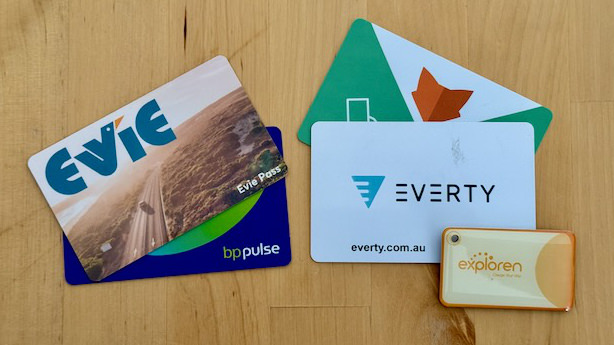
### 3. bp pulse
[bp.com](https://www.bp.com/en_au/australia/home/products-services/bppulse.html)
* Network: BP’s expanding charging network across Australia, at their petrol stations
* Key Features:
* Transparent per-kWh pricing, time base discounted tarrifs
* Push notifications when charging is complete
* Real-time charger availability
* Detailed session history and receipts
* Use the “Favorites” feature to bookmark frequently visited stations.
* Idle fees apply
* _On the Central Coast : Tumbi Umbi (single 75 kWh charger, close to fast food). Wyong (next to Aldi => shop and charge!) has 4x 150 kWh chargers (and 2x CHAdeMO) + a double "ultra-fast" 300 kWh charger, but note that the 300 kWh charger costs 7c/kWh more than the 150 kWh chargers._
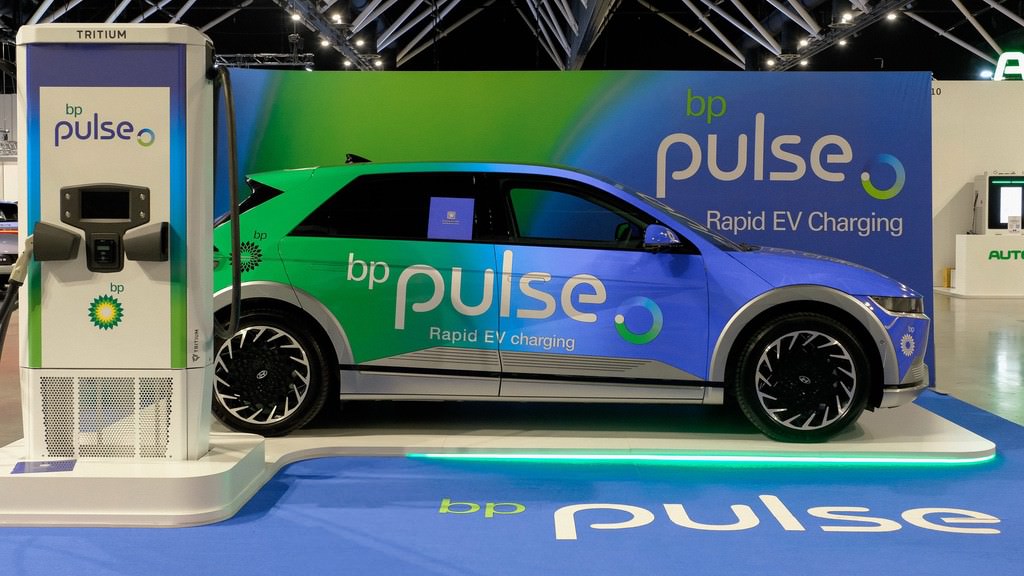
### 4. Ampol
[ampcharge.ampol.com.au](https://ampcharge.ampol.com.au)
* Network: Ampol’s EV charging sites, co-located on their petrol stations, some with convenience stores
* Key Features:
* In-app pay-as-you-go charging
* Station finder with filters (e.g., fast charger only)
* Integration with Woolworths Rewards
* Often only one single 75 kWh charger with a CCS2 and CHAdeMO plug
* Idle fees apply
* _On the Central Coast: Gosford and Charmhaven only._
Still disappointing that despite their large petrol station network, charging is still limited to very few stations. Although I don’t belief a petrol station is the right location for charging your EV (unless around motorways). Still, they could expand their brand to shopping centres for charging without the petrol (as they also provide Ampol AmpCharge Energy electricity at home).
bp pulse, EVX, Evie apps:
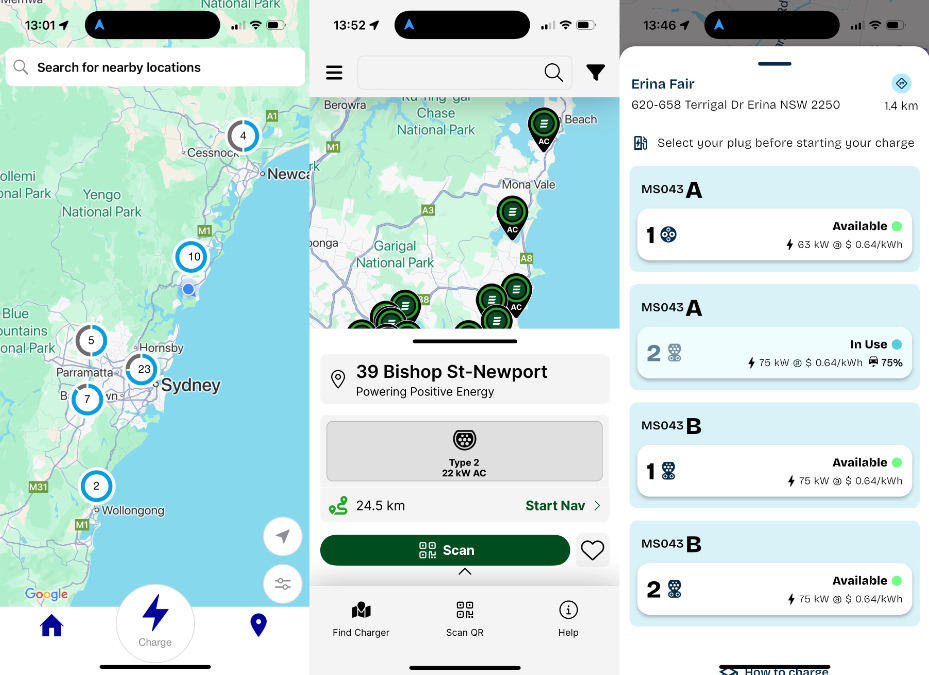
### 5. EVX
[evx.tech](https://evx.tech)
* Network: NSW network growing in metro and regional areas, network of power pole chargers used with bring-your-own cable.
* Key Features:
* Live charger availability
* Simple “plug & charge” RFID/NFC support on select stations
* Slower Type 2 AC charging (up to 22 kW) with bring-your-own cable
* _Not available on the Central Coast_
EVX charger near Newcastle, NSW, with bring-your-own cable:
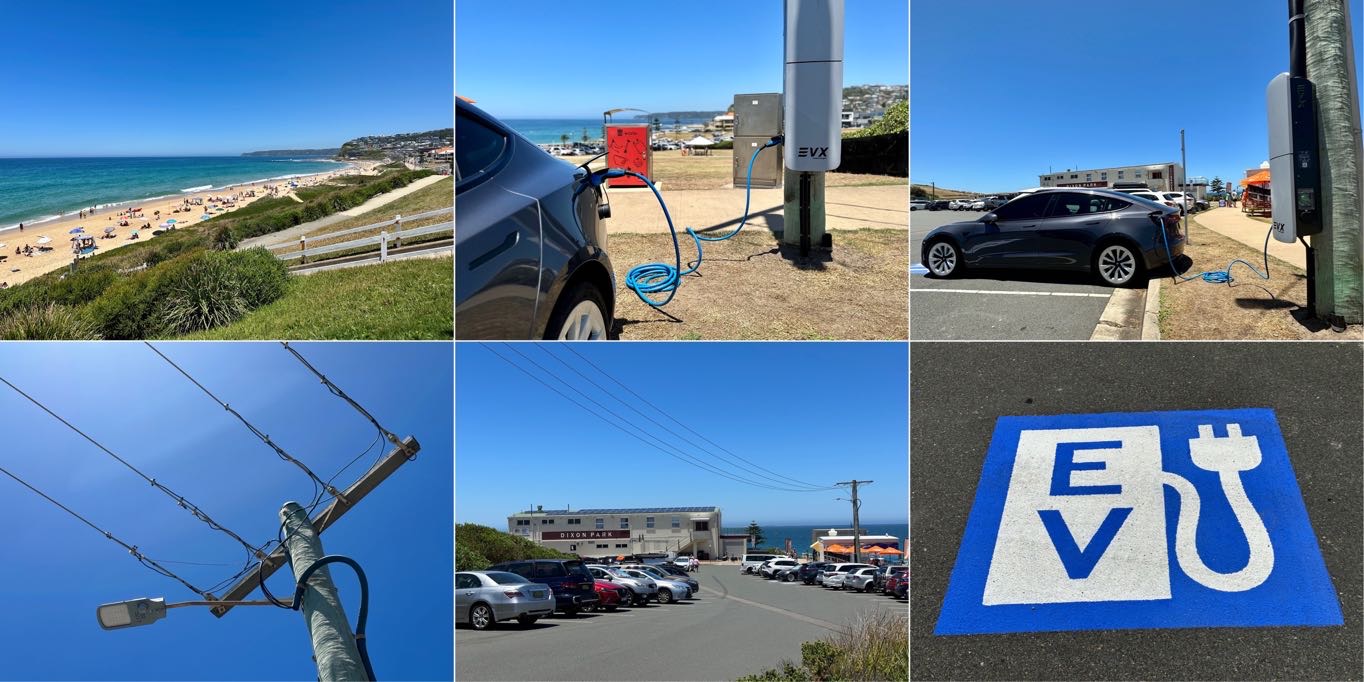
### 6. JOLT
[jolt.com.au](https://jolt.com.au)
* Network: Boutique metropolitan charging and advertisement network in Sydney, Melbourne and Brisbane suburbs.
* Key Features:
* **Daily 7 kWh free charging**, advertisement based
* Live charger availability and countdown when plug becomes available.
* Some have a CHAdeMO plug available.
* Live charger availability
* Membership options to get more free daily charging as well as timed discounts, **reservations**
* Idle fees apply
* _Not available on the Central Coast._
Jolt charger on the Northern Beaches, Sydney:
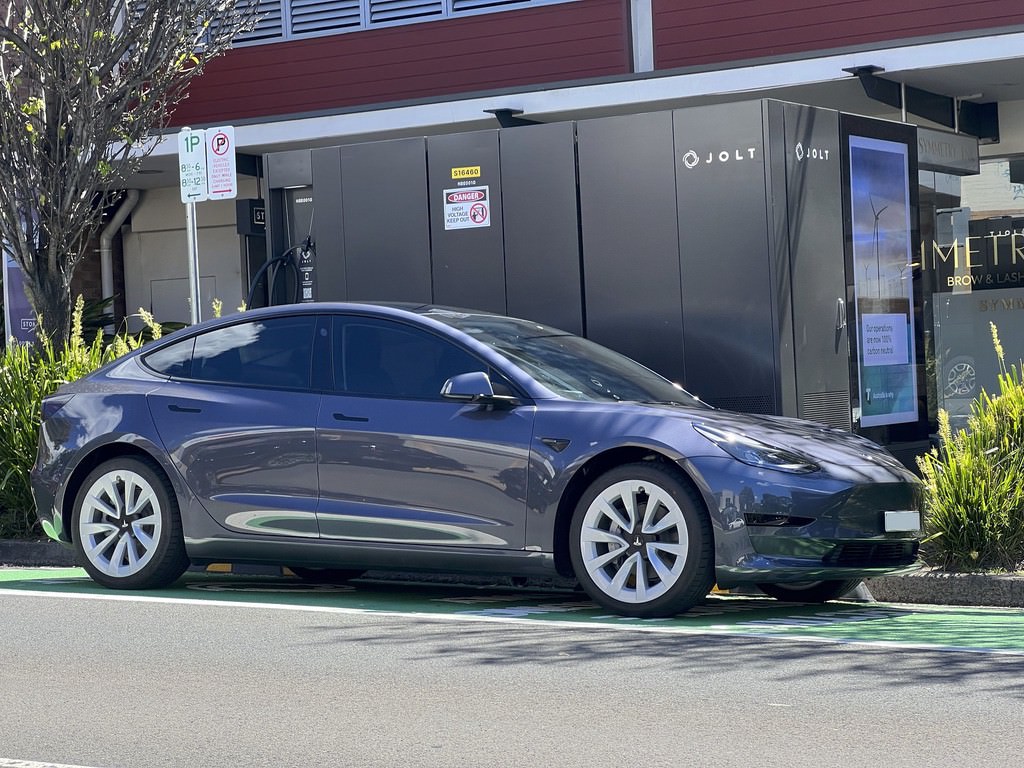
### 7. Everty
[everty.com.au](https://everty.com.au)
* Network: Slow Type 2 AC, bring-your-own cable
* Live charger availability
* Tip: Check the reliability score on PlugShare before deviating from your route to charge.
* _On the Central Coast: Glenworth Valley only (slow 7kWh)._ _Else, Lake Macquarie's Swansea behind the Library there at 25kWh, close to Coles._
Everty charger in Swansea:
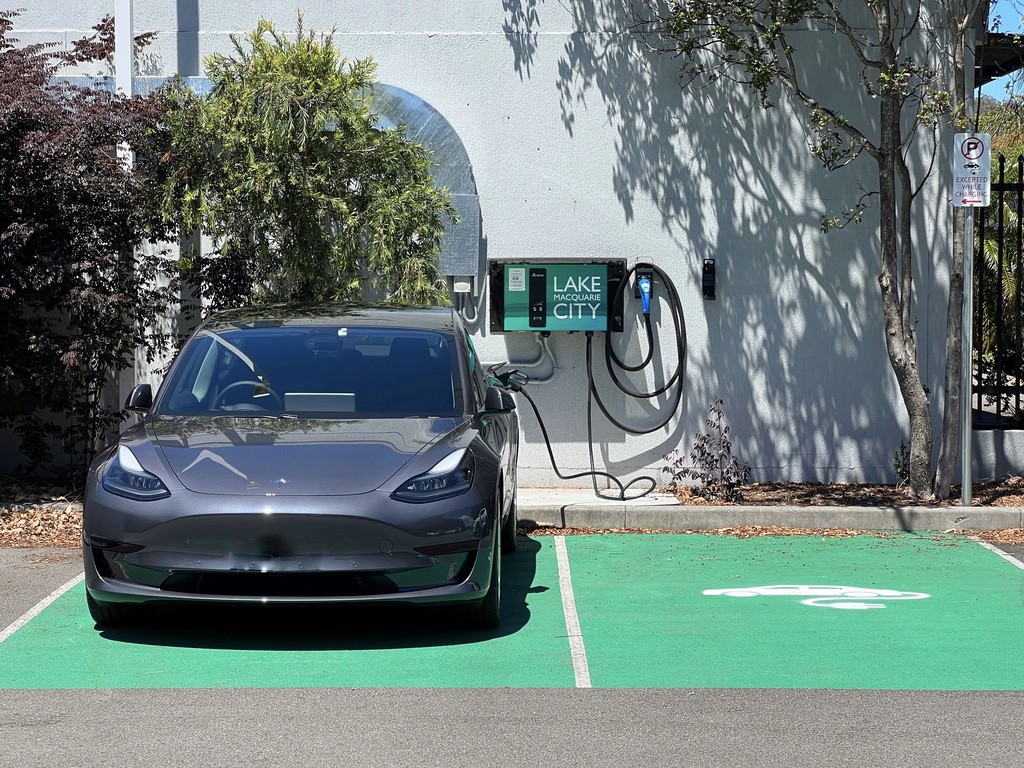
### 8. Exploren
[exploren.com.au](https://exploren.com.au)
* Network: Regional network focused on underserved areas. Slower (but cheaper) Type 2 AC charging only, bring-your-own cable
* Key Features:
* Integration with caravan parks, tourist sites, RSL clubs
* RFID/NFC support
* Live charger availability
* Why It Matters: Keeps you moving through rural zones where coverage is sparse.
* _On the Central Coast: Gosford RSL Club (3x), Narara Eco Village (2x), The Entrance Leagues Club (3x) close to Bateau Bay Square, Mingara Leisure Club, Bridgeview Motel (2x). Few around Lake Macquarie council area._
### 9. Tesla
[tesla.com/findus](https://www.tesla.com/findus)
* Network: Tesla Supercharger network. Also open to other EVs at select sites
* Key Features:
* On Teslas, seamless “plug-and-charge” without any additional app steps
* "Ultra-fast" power DC charging (up to 250 kW+ on V3 stalls)
* Live station occupancy overlays
* No Chademo
* Idle fees apply
* Pay less with a membership plan ($10/month, making it $0.53/kWh vs. $0.72/kWh).
* Worth Knowing: Even if you don’t drive a Tesla, some stations are accessible via the Tesla app—just check compatibility first.
* _On the Central Coast: Tuggerah for Teslas only (V2 chargers). Gosford for all EVs (12x V3 250 kWh chargers). Some destination chargers may or may not support other EVs._
Tesla Tuggerah charger - above Bunnings:
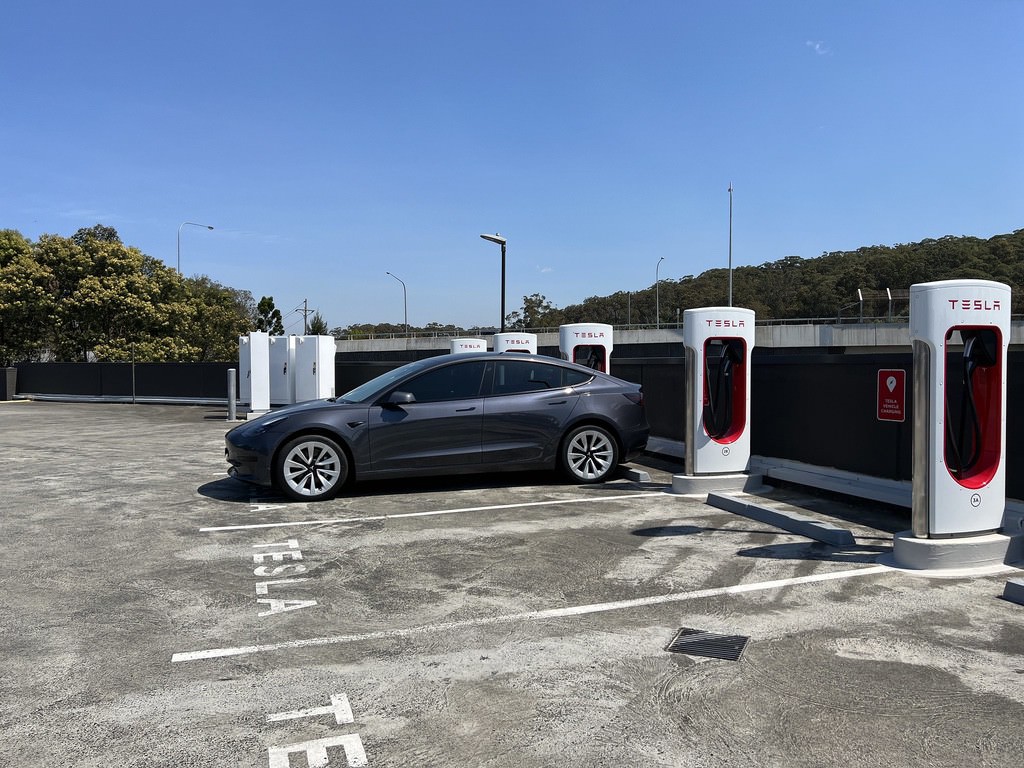
⸻
## 🗺️ Mapping & Trip Planning Apps
Your car may come with a built-in navigation system, optimized for your EV, dedicated mapping and trip planning apps add another layer of convenience and functionality. These apps are designed to help you plan your route, find charging stations and local amenities, and manage your trip more effectively, especially useful for long trips or when venturing into areas with limited charging infrastructure.
### 1. PlugShare
* Coverage: Crowd-sourced database of every public charger worldwide
* Key Features:
* User photos and reviews of stations
* Customizable filters (network, connector, speed)
* “Trip” mode to plot charging stops automatically
* Why I Use It: The community insights (e.g., “this site’s broken” or “great café next door”) are invaluable.
### 2. Chargetrip Go
* Coverage: Global, with intelligent route optimization
* Key Features:
* Calculates optimal stops based on vehicle model, battery state, and desired arrival charge
* Live traffic integration and weather overlays
* EV cost calculator per trip
* Pro Tip: Pre-set your car’s make/model for more accurate range estimates.
### 3. EV Navigation
* Coverage: Focused on Australia & New Zealand networks
* Key Features:
* Offline support for multi-day trips
* Integration with CarPlay for on-screen directions
* Battery-level warnings and detour suggestions
* When to Open It: In CarPlay mode when you want seamless, voice-guided charging directions.
### 4. A Better Routeplanner (ABRP)
* Coverage: Worldwide, with very detailed vehicle profiles
* Key Features:
* Fine-tune charging curves per vehicle and charger type
* Customizable “comfort” vs. “speed” optimization
* Weather, elevation, and driving style adjustments
* Why go paid: Their premium subscription unlocks live data overlays, CarPlay and advanced predictors (but to be honest I was quite disappointed when I tried the paid features).
Chargetrip Go: chargers around Crows Nest, NSW; map showing how far your car goes on a full charge down to zero, from Gosford?
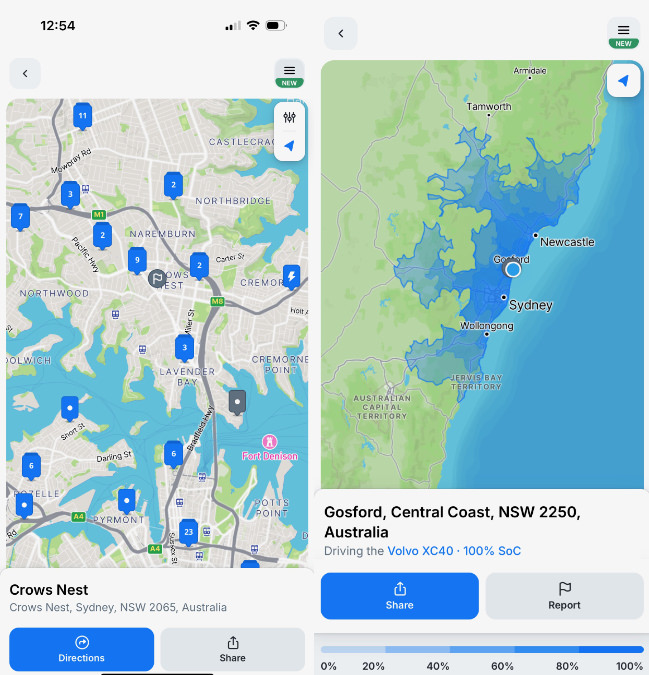
A Better Routeplanner: from Canberra to Narara, Central Coast; showing the route, timing, and one charging stop.
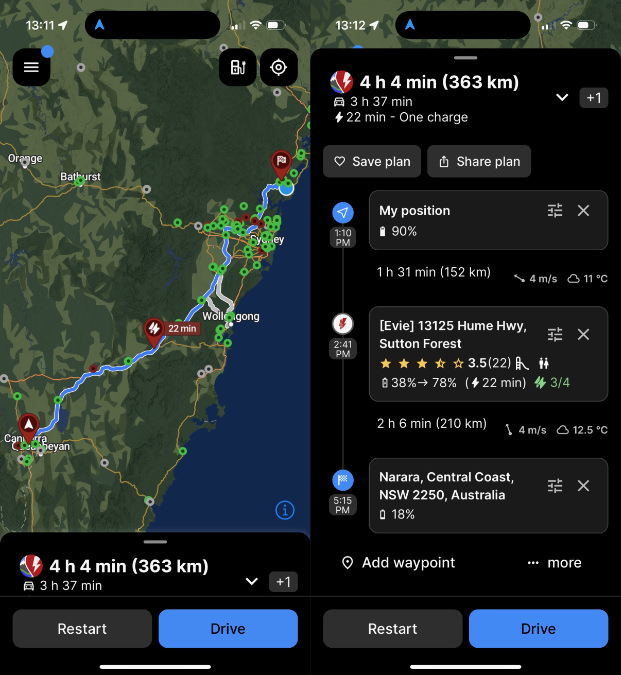
⸻
### Tips for Getting the Most Out of Your EV Apps
1. Pre-Load Payment Methods: Save your credit card or Apple Pay info in each charging app to avoid fumbling at the station. Double check after app updates.
2. Combine Tools: Use a mapping app like ABRP or Chargetrip Go to plot your trip, then switch to the native charging app (e.g., Chargefox or Evie) to initiate the charging session.
3. Monitor Charger Health: Check user reviews or “reliability scores” before you detour — an alternative 5 km down the road might save you 30 minutes.
4. Stay Offline-Ready: Download offline maps or screenshots in remote areas; some mapping apps (like EV Navigation) will function without cell service.
5. Leverage Rewards: Sign up for membership programs to earn free kWh or discounted rates.
6. Plan for Amenities: Use PlugShare’s community photos to find AC chargers near cafés, toilets, or picnic spots — turn charging time into a mini-break.
⸻
### 🚀 Conclusion
With the right suite of apps on your phone, range anxiety becomes a thing of the past. Charging and mapping tools each bring unique strengths—combined with your in-car mapping app. Experiment with a combination that matches your driving patterns, and you’ll unlock smoother, more confident trips whether you’re zipping around town or exploring Australia’s vast highways. Safe travels, and happy charging!
See also [So Many Apps](/posts/soo-many-apps/)
[END OF CONTENT]
*************************************
## [POST TITLE]: May 2025
[POST LINK]: [https://electricvehicle.life/news/2025/2025-05-may/](https://electricvehicle.life/news/2025/2025-05-may/)
[POST DATE]: 2025-05-29
[START OF CONTENT]
[END OF CONTENT]
*************************************
## [POST TITLE]: New Planned NSW EV Fast Chargers
[POST LINK]: [https://electricvehicle.life/posts/nsw-new-planned-chargers/](https://electricvehicle.life/posts/nsw-new-planned-chargers/)
[POST DATE]: 2025-05-27
[START OF CONTENT]
New NSW EV Fast Chargers: “Fast Chargers on the Way for NSW Drivers”:
### Scope & Funding
* The NSW Government’s latest Fast Charging Infrastructure grants (third round) will deliver over 300 new fast-charging ports at 103 locations statewide, backed by $16.1 million in public funding — part of a broader $149 million commitment to reach 1,000+ fast bays by 2025. 
* In parallel, a ministerial media release details 246 fast and ultra-fast chargers to be installed across 38 suburbs, with the same $16.1 million in grants boosted by $25.1 million in private co-investment (BP, Energy Australia, Plus ES, Tesla, NRMA) for a $41.2 million total rollout. 
### Partners & Locations
* Key network partners include BP, Evie, Tesla, NRMA, Energy Australia and Plus ES, ensuring broad geographic reach across metro and regional NSW. 
* The ministerial release specifically names 38 suburbs , while the NRMA announcement covers 103 locations selected to close “critical charging gaps.” 
### Charger Specifications & Accessibility
* Both programs focus on fast (50–150 kW) and ultra-fast (up to 350 kW+) chargers, capable of replenishing 10 → 80% battery in 10–15 minutes, dramatically reducing “range anxiety.” 
* Installations will include pull-through bays for **caravans/trailers** and **disability-accessible** chargers to accommodate a wide range of users. 
### Strategic Goals & Impact
* These investments accelerate NSW’s transition to EVs, support the state’s Net Zero targets, and encourage wider adoption by making long-distance travel and everyday charging more convenient and reliable.  
> “We are already seeing the benefits of NSW Government investment here in Heathcote where today I have cut a ribbon to celebrate BP’s newest EV charging station, making it easier for EV drivers to hit the road quickly.”
said Member for Heathcote, Maryanne Stuart at a BP charging station launch in Heathcote.
With over 300 new ports rolling out under matched funding streams, NSW drivers can look forward to a vastly expanded, fast-charging network powered by renewable energy, paving the way for seamless EV travel across the state.
Planned new NSW EV Fast Charger locations:
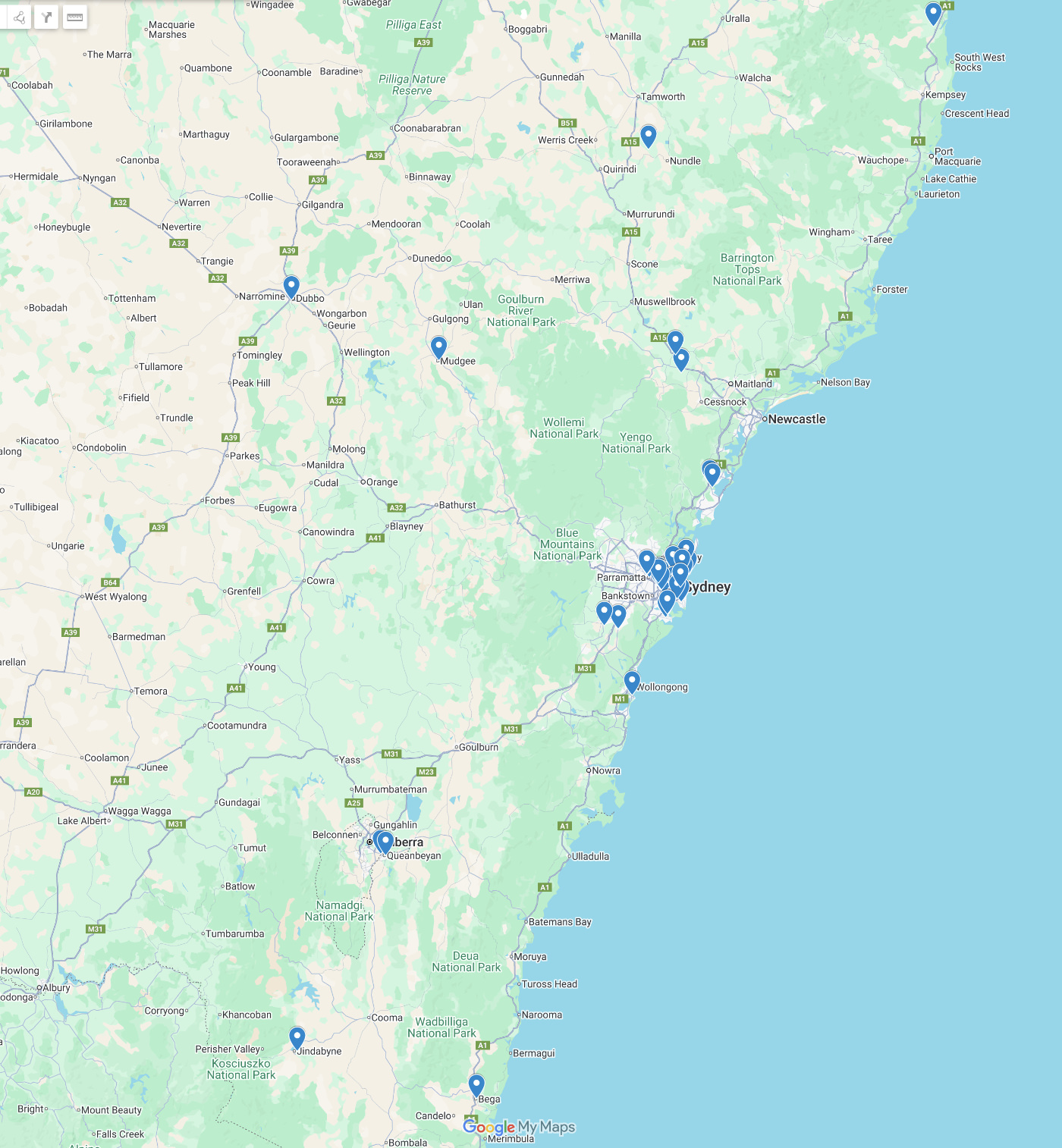
_Includes two new planned locations on the Central Coast, NSW: Tuggerah and Ourimbah._
⸻
[Read on NRMA](https://www.mynrma.com.au/open-road/news/2025/300-new-ev-charging-ports-for-nsw)
[END OF CONTENT]
*************************************
## [POST TITLE]: How the Fringe Benefits Tax Exemption is Driving Electric Vehicle Adoption in Australia
[POST LINK]: [https://electricvehicle.life/posts/how-fbt-exemption-is-driving-ev-adoption-in-australia/](https://electricvehicle.life/posts/how-fbt-exemption-is-driving-ev-adoption-in-australia/)
[POST DATE]: 2025-05-20
[START OF CONTENT]
Discover how Australia’s Fringe Benefits Tax (FBT) exemption on electric vehicles works, who qualifies, how much you can save, and why novated leases are key to unlocking these benefits.
## Introduction: Novated Lease FBT exemption policy
Electric vehicles (EVs) are rapidly gaining traction in Australia, thanks in part to government incentives that make them more financially accessible. One of the most significant of these is the Fringe Benefits Tax (FBT) exemption on EVs—a policy that can substantially reduce the cost of owning an electric car when financed through a novated lease. But how exactly does this tax exemption work, and who stands to benefit the most? In this article, we explore the mechanics of the FBT exemption, its eligibility criteria, financial advantages, and key considerations for anyone thinking of making the switch to an electric vehicle.
## What is the Fringe Benefits Tax Exemption on EVs?
The Fringe Benefits Tax is a levy applied to non-cash benefits provided by employers to their employees, such as company cars. Normally, if you choose a car for personal use through your employer, that vehicle would attract FBT.
However, under Australia’s current policy, battery electric vehicles (BEVs) are exempt from this tax if financed via a **novated lease**. This exemption allows employees to pay for the vehicle and its running costs entirely from their **pre-tax income** (*salary sacrifice*), significantly reducing the taxable portion of their salary.
### Key Conditions:
* Applies to BEVs and fuel cell EVs purchased **new or used** on or after **1 July 2022.**
* Plug-in hybrid EVs qualify **until 31 March 2025.**
* Vehicle must be below the **Luxury Car Tax (LCT) threshold** (e.g., \$91,387 for fuel-efficient vehicles in FY 2024-2025).
* Only accessible through a **novated lease arrangement.**
## What is a Novated Lease and Why Does It Matter?
A **novated lease** is a three-way agreement between you, your employer, and a leasing company. It enables you to finance a vehicle using **pre-tax salary deductions**, often resulting in significant tax savings.
### Novated Lease Features:
* Lease payments and running costs (insurance, servicing, registration) come from pre-tax income (*salary sacrifice*).
* You retain responsibility for the lease if you change jobs.
* Employers typically face no financial risk; they simply facilitate payroll deductions.
Without the FBT exemption, a portion of the lease would need to be funded with after-tax salary to offset FBT liabilities. Thanks to the exemption, all payments can now be made **entirely from pre-tax salary,** increasing the financial appeal.
## Who is Eligible for the FBT Exemption?
### Vehicles That Qualify:
* Battery Electric Vehicles (BEVs)
* Fuel Cell Electric Vehicles (FCEVs)
* Plug-in Hybrid Electric Vehicles (PHEVs) purchased *before 31 March 2025*
* Cars purchased on or after **1 July 2022**
* Vehicles **below the LCT threshold** when factoring in accessories and dealer delivery
### Vehicles That Do Not Qualify:
* Cars purchased before **1 July 2022**
* Vehicles that have ever been subject to LCT
* Fossil fuel-powered cars
* PHEVs purchased after **1 April 2025**
## Financial Advantages
### Tax Savings Scale with Income
The higher your taxable income, the greater your potential savings. Employees on higher tax brackets can save more because their lease payments reduce taxable income at a higher marginal tax rate.
**Important:**
These savings include registration, insurance, servicing, and tyre costs but **exclude home charging costs**, which remain a grey area for tax reimbursements.
## Novated Lease vs. Traditional Financing: Which is Better?
### Novated Lease Benefits:
* Fixed interest rate for the lease term.
* Pre-tax salary deductions.
* Access to fleet discounts.
* Save on GST (up to $6,334)
* Running costs are bundled into one payment.
You don't end up owning the vehicle outright, but you can often purchase it at the end of the lease term for a residual payment.
### Traditional Loan Drawbacks:
* Potentially variable interest rates.
* No tax benefits on repayments.
* Running costs are separate and fully post-tax.
But you do own the vehicle outright, which may be preferable for some.
## What Happens If You Change Employers?
* **Option 1:** Transfer the lease to your new employer (if they agree).
* **Option 2:** Continue making payments directly to the lease provider from post-tax income.
* **Option 3:** Sell the vehicle to cover outstanding payments.
Consider **Lease Protection Insurance** to safeguard your payments in the event of involuntary redundancy or other disruptions.
## Other Tax Implications to Watch
Although you won’t pay FBT on qualifying EVs, the benefit must still be **reported on your income statement.** This can impact:
* Private health insurance rebate eligibility
* Parental leave payments
* Childcare subsidies
* HECS/HELP repayments
* Medicare levy obligations
It’s essential to **consult a tax advisor** to understand how a novated lease might affect your overall tax position.
## Conclusion
The Fringe Benefits Tax exemption on electric vehicles is a powerful incentive that can significantly reduce the cost of EV ownership—especially when leveraged through a novated lease. However, it’s not a one-size-fits-all solution. Employees must weigh the immediate tax savings against long-term considerations like changing jobs, residual lease payments, and potential impacts on other financial entitlements.
For many Australians, this policy represents a pivotal moment to make the switch to electric, but it’s crucial to fully understand the mechanics, eligibility, and possible flow-on effects before signing the dotted line.
## References
[ATO: Electric cars FBT exemption](https://www.ato.gov.au/businesses-and-organisations/hiring-and-paying-your-workers/fringe-benefits-tax/types-of-fringe-benefits/fbt-on-cars-other-vehicles-parking-and-tolls/electric-cars-exemption)
[Novated Lease Australia - electric cars](https://www.novatedleaseaustralia.com.au/electric-cars)
[Oly Novated Lease - electric cars](https://www.oly.com.au/novated-lease/electric-cars)
[Oly Novated lease: everything you need to know before you switch](https://www.oly.com.au/info-and-news/electric-car/novated-lease-electric-car-everything-you-need-know-you-switch)
## FAQs
**Q: Can I get the FBT exemption if I buy an EV with cash or a personal loan?**
No. The exemption only applies if you finance the vehicle through a novated lease.
**Q: Do used EVs qualify for the exemption?**
Yes, provided they were purchased on or after 1 July 2022 and have never attracted Luxury Car Tax.
**Q: What happens at the end of the novated lease?**
You may need to make a residual payment (often around 37.5% of the vehicle’s original purchase price) or refinance the remaining amount.
**Q: Will my FBT-exempt EV affect my eligibility for government benefits?**
Yes, the reportable benefit can influence entitlements like childcare subsidies, HECS repayments, and Medicare levy calculations.
**Q: Can I include optional extras in the vehicle purchase?**
Yes, but ensure that the total cost, including extras, does not exceed the Luxury Car Tax threshold to remain eligible for the exemption.
[END OF CONTENT]
*************************************
## [POST TITLE]: April 2025
[POST LINK]: [https://electricvehicle.life/news/2025/2025-04-april/](https://electricvehicle.life/news/2025/2025-04-april/)
[POST DATE]: 2025-04-29
[START OF CONTENT]
[END OF CONTENT]
*************************************
## [POST TITLE]: March 2025
[POST LINK]: [https://electricvehicle.life/news/2025/2025-03-march/](https://electricvehicle.life/news/2025/2025-03-march/)
[POST DATE]: 2025-03-29
[START OF CONTENT]
[END OF CONTENT]
*************************************
## [POST TITLE]: Everything Electric Sydney 2025
[POST LINK]: [https://electricvehicle.life/posts/everything-electric-sydney-2025/](https://electricvehicle.life/posts/everything-electric-sydney-2025/)
[POST DATE]: 2025-03-07
[START OF CONTENT]
## Everything Electric at the Sydney Showground in Sydney Olympic Park
Visited first day Friday (only) of the three-day event.
Talks wise, same discussions as previous years, but the exhibition was more interesting with lots more vendors and products.
Lots of new Chinese EV brands. In addition to BYD and MG we already know well, there were Geely and Zeekr, Leapmotor (joint venture with Stelantis), Deepal, and XPeng, which to be honest were all quite impressive, compared to, for example, the VW models on display.
Test drove an electric Mini (had a Mini D some 10 or so years ago), which had an annoying fake sound which can only be turned off in eco mode?
First time T*sla was present, with a large booth, with the new MY and the truly ridiculous CT.
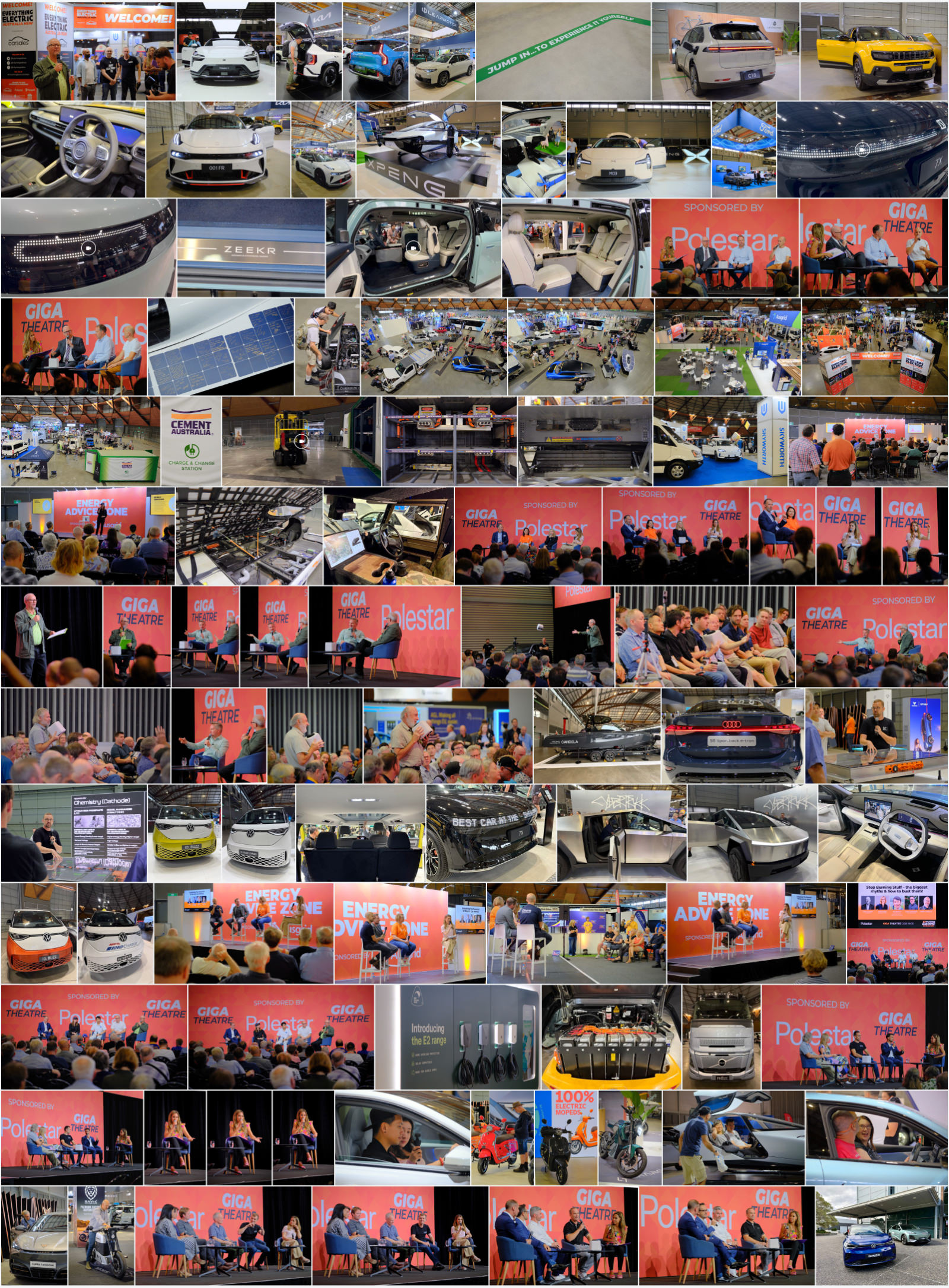
As always, find my photo album on Flickr https://www.flickr.com/photos/halans/albums/72177720324312978
[END OF CONTENT]
*************************************
## [POST TITLE]: February 2025
[POST LINK]: [https://electricvehicle.life/news/2025/2025-02-february/](https://electricvehicle.life/news/2025/2025-02-february/)
[POST DATE]: 2025-02-28
[START OF CONTENT]
[END OF CONTENT]
*************************************
## [POST TITLE]: January 2025
[POST LINK]: [https://electricvehicle.life/news/2025/2025-01-january/](https://electricvehicle.life/news/2025/2025-01-january/)
[POST DATE]: 2025-01-25
[START OF CONTENT]
[END OF CONTENT]
*************************************
## [POST TITLE]: December 2024
[POST LINK]: [https://electricvehicle.life/news/2024/2024-12-december/](https://electricvehicle.life/news/2024/2024-12-december/)
[POST DATE]: 2024-12-29
[START OF CONTENT]
[END OF CONTENT]
*************************************
## [POST TITLE]: November 2024
[POST LINK]: [https://electricvehicle.life/news/2024/2024-11-november/](https://electricvehicle.life/news/2024/2024-11-november/)
[POST DATE]: 2024-11-29
[START OF CONTENT]
[END OF CONTENT]
*************************************
## [POST TITLE]: October 2024
[POST LINK]: [https://electricvehicle.life/news/2024/2024-10-october/](https://electricvehicle.life/news/2024/2024-10-october/)
[POST DATE]: 2024-10-29
[START OF CONTENT]
[END OF CONTENT]
*************************************
## [POST TITLE]: September 2024
[POST LINK]: [https://electricvehicle.life/news/2024/2024-09-september/](https://electricvehicle.life/news/2024/2024-09-september/)
[POST DATE]: 2024-09-29
[START OF CONTENT]
[END OF CONTENT]
*************************************
## [POST TITLE]: NRMA EV Drive Day St Ives 2024
[POST LINK]: [https://electricvehicle.life/posts/nrma-ev-drive-day-st-ives-2024/](https://electricvehicle.life/posts/nrma-ev-drive-day-st-ives-2024/)
[POST DATE]: 2024-09-21
[START OF CONTENT]
### What & Why
* NRMA, supported by the NSW (and ACT) Government, runs a series of free “EV Drive Days” to give people first-hand experience with electric vehicles (EVs). 
* Aimed at both individual consumers and fleet/business managers, the events help clear up confusion around EV ownership—covering purchasing, charging, and real-world driving. 
### Event Format
* Test Drives: Hands-on drives or passenger “ride-alongs” in various EV models with a qualified instructor.
* Expert Presentations & Q&A: Sessions with industry experts, vehicle manufacturers, charging-equipment providers and energy companies.
* Info Stalls: Manufacturer displays, plus food and beverage stalls (paid). 
* Walk-through of EV features, paired with a driving expert on each test drive. 
* Fleet-Specific Days: Dedicated events tailored to business and fleet decision-makers, showcasing commercial EV options.
### Who Can Attend
* Open and free to everyone—NRMA members and non-members alike. Bring friends and family! 
* Ideal for “EV curious” first-timers, current EV owners, and fleet managers exploring electrification.
* No entry fee—but if you want to test-drive, you must pre-book timeslots (limited availability).
* Free on-site parking. Check each event listing for venue details.
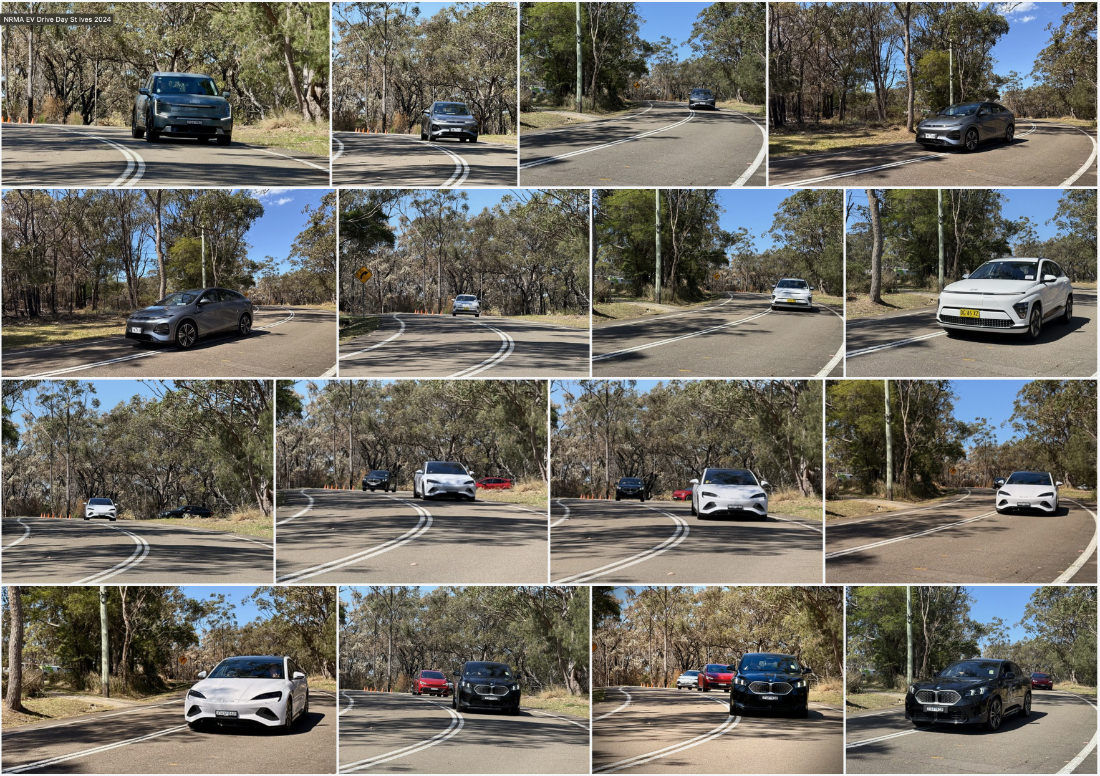
See the full album on [Flickr](https://www.flickr.com/photos/halans/albums/72177720320581838/).
⸻
[END OF CONTENT]
*************************************
## [POST TITLE]: August 2024
[POST LINK]: [https://electricvehicle.life/news/2024/2024-08-august/](https://electricvehicle.life/news/2024/2024-08-august/)
[POST DATE]: 2024-08-29
[START OF CONTENT]
[END OF CONTENT]
*************************************
## [POST TITLE]: July 2024
[POST LINK]: [https://electricvehicle.life/news/2024/2024-07-july/](https://electricvehicle.life/news/2024/2024-07-july/)
[POST DATE]: 2024-07-29
[START OF CONTENT]
[END OF CONTENT]
*************************************
## [POST TITLE]: June 2024
[POST LINK]: [https://electricvehicle.life/news/2024/2024-06-june/](https://electricvehicle.life/news/2024/2024-06-june/)
[POST DATE]: 2024-06-29
[START OF CONTENT]
[END OF CONTENT]
*************************************
## [POST TITLE]: Glossary of Key EV Terms
[POST LINK]: [https://electricvehicle.life/posts/ev-life-glossary/](https://electricvehicle.life/posts/ev-life-glossary/)
[POST DATE]: 2024-06-23
[START OF CONTENT]
Here’s a **glossary of 51+ key terms related to Life with an Electric Vehicle**, alphabetized and concisely explained:
---
# 🚗 Life with an Electric Vehicle: Glossary of Key Terms
| **Term** | **Explanation** |
| ---------------------------------------------- | ---------------------------------------------------------------------------------------------- |
| AC Charging | Alternating Current charging, typically used for home and public Level 1 and Level 2 chargers. |
| Australian Electric Vehicle Association (AEVA) | A national, non-profit EV advocacy and education group in Australia. |
| Battery Capacity | The total amount of energy a battery can store, usually measured in kilowatt-hours (kWh). |
| Battery Degradation | Gradual reduction in a battery’s capacity and range over time. |
| Battery Electric Vehicle (BEV) | An EV powered entirely by electricity with no petrol engine. |
| Battery Management System (BMS) | Software that monitors and protects battery performance and health. |
| BEV | See Battery Electric Vehicle. |
| CCS (Combined Charging System) | A fast charging connector standard used by most modern EVs. |
| CHAdeMO | A DC fast charging standard commonly used by some Japanese EVs. |
| Charging Curve | The rate at which an EV charges, typically fastest between 20%-80% battery capacity. |
| Charging Network | A system of public EV chargers operated by specific providers like Chargefox or Tesla. |
| Charging Station | A location where EVs can be recharged, either at home or publicly. |
| Charging Time | The duration required to recharge an EV battery from one level to another. |
| DC Charging | Direct Current charging, typically used for fast and ultra-fast public chargers. |
| DC Fast Charger | A high-power public charger that can recharge most EVs to 80% in 30–45 minutes. |
| Destination Charging | Chargers typically located at hotels, shopping centres, or tourist spots for longer stops. |
| Electric Motor | The component in an EV that converts electrical energy into motion. |
| Electric Vehicle (EV) | A vehicle that runs partially or entirely on electricity. |
| EV Lifestyle Plan | A personalized strategy covering EV choice, charging habits, costs, trips, and sustainability. |
| EVSE (Electric Vehicle Supply Equipment) | The formal term for all EV charging hardware. |
| Fast Charging | Charging that delivers power rapidly, usually through DC fast chargers. |
| Fossil Fuel Vehicle | Traditional petrol or diesel-powered cars. |
| Frunk | A front trunk, often found in EVs due to the absence of an engine. |
| HEV (Hybrid Electric Vehicle) | A vehicle that combines a petrol engine with a small electric motor but cannot be plugged in. |
| Home Charging | Charging an EV at home using either a standard power outlet or a Level 2 charger. |
| Incentives | Government-provided financial benefits like rebates or tax discounts for EV buyers. |
| Kilowatt (kW) | A unit of power, often used to measure charging speed. |
| Kilowatt-Hour (kWh) | A unit of energy storage capacity for EV batteries. |
| Level 1 Charging | Charging via a standard household outlet; slowest charging option. |
| Level 2 Charging | Faster home or public charging requiring dedicated equipment. |
| Lithium-Ion Battery | The most common battery type used in modern EVs. |
| Maintenance Schedule | Regular service plan for EVs, focusing on tires, brakes, fluids, and software. |
| North American Charging Standard (NACS) | Tesla's proprietary electric vehicle (EV) charging connector, charge port and protocol, opened up for use by other EV manufacturers and EV charging network operators in the US. |
| OCPP (Open Charge Point Protocol) | A global standard that enables EV chargers to communicate with networks. |
| Over-the-Air Updates (OTA) | Wireless software updates delivered directly to EVs, improving features and performance. |
| Peak Charging | Charging during periods of highest electricity demand, often more expensive. |
| PHEV (Plug-in Hybrid Electric Vehicle) | An EV that combines electric driving with petrol backup and can be plugged in. |
| PlugShare | A popular global app for locating EV charging stations. |
| Public Charging | Charging at shared locations like parking lots, highways, or shopping centres. |
| Range | The distance an EV can travel on a full battery charge. |
| Range Anxiety | The fear of running out of battery before reaching a charger. |
| Regenerative Braking | A system that recovers energy during braking to recharge the battery. |
| Road Trip Planning | Strategically mapping charging stops for long-distance EV journeys. |
| SAE J1772 | A common connector standard for Level 1 and Level 2 AC chargers in many countries. |
| Smart Charging | Technology that manages charging speed and time for cost or grid efficiency. |
| Solid-State Battery | Next-generation EV battery promising faster charging, longer life, and improved safety. |
| State of Charge (SoC) | The current battery level, usually displayed as a percentage. |
| Tesla Supercharger | Tesla’s proprietary ultra-fast charging network. |
| Thermal Management | Systems that regulate battery temperature for safety and performance. |
| Total Cost of Ownership (TCO) | The complete financial impact of owning a vehicle, including purchase, fuel, and maintenance. |
| Vehicle-to-Grid (V2G) | Technology that allows EVs to return energy back to the power grid. |
| Wallbox | A Level 2 home charging station installed on a garage wall or outdoor post. |
| Zero Emissions Vehicle (ZEV) | A vehicle that produces no tailpipe emissions during operation. |
---
[END OF CONTENT]
*************************************
## [POST TITLE]: May 2024
[POST LINK]: [https://electricvehicle.life/news/2024/2024-05-may/](https://electricvehicle.life/news/2024/2024-05-may/)
[POST DATE]: 2024-05-29
[START OF CONTENT]
[END OF CONTENT]
*************************************
## [POST TITLE]: April 2024
[POST LINK]: [https://electricvehicle.life/news/2024/2024-04-april/](https://electricvehicle.life/news/2024/2024-04-april/)
[POST DATE]: 2024-04-29
[START OF CONTENT]
[END OF CONTENT]
*************************************
## [POST TITLE]: 101 essential tasks for Life with an Electric Vehicle (EV)
[POST LINK]: [https://electricvehicle.life/posts/101-essential-tasks-for-ev-life/](https://electricvehicle.life/posts/101-essential-tasks-for-ev-life/)
[POST DATE]: 2024-04-13
[START OF CONTENT]
Here's a structured list of **101 essential tasks for Life with an Electric Vehicle (EV)**,
each paired with a **ChatGPT prompt[(*)](#disclaimer)** written in the **first person**,
grouped into practical categories to support real-world EV ownership.
---
# 🚗 101 Essential EV Tasks & ChatGPT Prompts[(*)](#disclaimer)
---
## 🔍 EV Selection & Research (Tasks 1-15)
1. **Compare EV models by range and price.**
*Prompt:*
"Help me compare the top 3 electric vehicles within my budget and driving range requirements. Summarize key differences in a table."
2. **Find an EV that suits my daily driving distance.**
*Prompt:*
"I drive approximately 40 km per day. Recommend EV models that comfortably meet this requirement with minimal charging anxiety."
3. **Understand the differences between BEV, PHEV, and HEV.**
*Prompt:*
"Explain the key differences between BEVs, PHEVs, and HEVs, and help me decide which one fits my lifestyle."
4. **Research EV warranty terms.**
*Prompt:*
"Summarize typical EV battery and vehicle warranty terms across different manufacturers."
5. **Compare EVs by charging compatibility.**
*Prompt:*
"List EVs compatible with CCS2 fast charging in Australia and rank them by maximum charging speed."
6. **Find EVs with the best resale value.**
*Prompt:*
"Based on current market trends, which EVs retain the highest resale value after five years?"
7. **Identify compact EVs for city driving.**
*Prompt:*
"Suggest compact EV models ideal for city driving and limited parking spaces."
8. **Compare safety ratings for EVs.**
*Prompt:*
"Provide safety ratings and key crash-test results for the top five EVs under \$70,000."
9. **Assess interior space for families.**
*Prompt:*
"Recommend EVs with large cargo space and comfortable seating for a family of four."
10. **Evaluate software update capabilities.**
*Prompt:*
"Which EV brands offer the most frequent and feature-rich over-the-air software updates?"
11. **List EVs with solar panel options.**
*Prompt:*
"Are there any EVs with integrated solar panels, and how much range do they realistically add?"
12. **Compare all-wheel drive EVs.**
*Prompt:*
"Help me compare the best all-wheel drive EVs available in my region."
13. **Find used EV buying guides.**
*Prompt:*
"Provide a checklist and best practices for buying a used EV, including battery health assessment."
14. **Research EVs with towing capacity.**
*Prompt:*
"List EVs capable of towing at least 1,000 kg and summarize their range impact while towing."
15. **Identify budget EVs under \$50,000.**
*Prompt:*
"List affordable EVs under \$50,000 in Australia and rank them by range and features."
---
## ⚡ Home Charging Setup (Tasks 16-30)
16. **Evaluate home charging options.**
*Prompt:*
"Explain the pros and cons of Level 1 vs. Level 2 home charging for my daily driving needs."
17. **Estimate home charger installation costs.**
*Prompt:*
"Provide a cost breakdown for installing a Level 2 home charger in a suburban garage in Australia."
18. **Calculate home charging time.**
*Prompt:*
"Calculate how long it would take to fully charge a 60 kWh battery using Level 1 and Level 2 charging at home."
19. **Identify electrical requirements.**
*Prompt:*
"What electrical capacity and circuit upgrades might I need for Level 2 charging at home?"
20. **Find local home charger installers.**
*Prompt:*
"List reputable home EV charger installers near Sydney, Australia, and compare pricing."
21. **Explore smart home charging options.**
*Prompt:*
"Recommend smart EV chargers that can integrate with home energy management systems."
22. **Compare wall-mounted chargers.**
*Prompt:*
"Compare three wall-mounted EV chargers in terms of price, smart features, and reliability."
23. **Evaluate solar EV charging feasibility.**
*Prompt:*
"Help me determine whether solar-powered home EV charging is cost-effective based on my energy usage."
24. **Plan overnight charging schedules.**
*Prompt:*
"Create an optimized overnight charging schedule based on off-peak electricity rates."
25. **Learn home charging etiquette in shared spaces.**
*Prompt:*
"What are the best practices for EV charging in apartment complexes with shared power outlets?"
26. **Understand portable EV chargers.**
*Prompt:*
"Explain the advantages and limitations of using portable EV chargers for road trips."
27. **Determine cable length requirements.**
*Prompt:*
"How do I choose the right cable length for my home EV charger based on garage layout?"
28. **Explore dynamic load management.**
*Prompt:*
"Explain dynamic load management for home EV charging and whether I need it for a multi-car household."
29. **Find rebates for home charger installation.**
*Prompt:*
"List available rebates or grants in Australia for home EV charger installations."
30. **Calculate solar charging payback period.**
*Prompt:*
"Estimate the payback period for installing solar panels and using them to charge my EV."
---
## 🔌 Public Charging & Road Trips (Tasks 31-50)
31. **Map local public chargers.**
*Prompt:*
"Help me map the nearest public charging stations to my home and work in Sydney."
32. **Plan a 300 km road trip with charging stops.**
*Prompt:*
"Plan a detailed EV road trip from Sydney to Canberra, including fast charging stops and estimated charging times."
33. **Compare public charging networks.**
*Prompt:*
"Compare Chargefox, Evie Networks, and NRMA charging networks in terms of coverage and pricing."
34. **Calculate fast charging costs.**
*Prompt:*
"Estimate the cost to add 100 km of range at a DC fast charger using Australian electricity rates."
35. **Learn public charging etiquette.**
*Prompt:*
"Summarize key public charging etiquette to avoid frustration and promote fair use."
36. **Find membership benefits for charging networks.**
*Prompt:*
"Compare subscription and pay-as-you-go pricing models for Australian charging networks."
37. **Understand charging connector types.**
*Prompt:*
"List and explain the different EV charging connectors used in Australia."
38. **Plan a long-range trip across states.**
*Prompt:*
"Help me plan a Sydney to Melbourne EV trip with charging stops, time estimates, and charging speeds."
39. **Locate free public chargers.**
*Prompt:*
"Where can I find free public EV chargers in New South Wales?"
40. **Create a charging contingency plan.**
*Prompt:*
"Help me build a backup charging plan in case my preferred fast chargers are in use or offline."
41. **Check charging station reliability.**
*Prompt:*
"How can I check the real-time status and reliability of public chargers on my route?"
42. **Estimate range impact of high speeds.**
*Prompt:*
"Calculate how driving at 120 km/h affects range compared to driving at 100 km/h in a typical EV."
43. **Plan overnight charging at destinations.**
*Prompt:*
"List hotels along the Pacific Highway that offer overnight EV charging for guests."
44. **Understand Tesla Supercharger access.**
*Prompt:*
"Can non-Tesla EVs access Tesla Superchargers in Australia, and what is the payment process?"
45. **Calculate energy needed for a road trip.**
*Prompt:*
"Estimate the total energy required for a 500 km EV trip and the number of charging stops needed."
46. **Understand idle fees at public chargers.**
*Prompt:*
"What are idle fees at EV charging stations, and how can I avoid them?"
47. **Plan efficient charging stops during meals.**
*Prompt:*
"Help me time EV charging stops to coincide with meal breaks on a long trip."
48. **Find EV-friendly attractions.**
*Prompt:*
"List EV-friendly tourist destinations in New South Wales that offer charging on-site."
49. **Learn to use charging apps.**
*Prompt:*
"Guide me through setting up and using the PlugShare and Chargefox apps effectively."
50. **Estimate real-world charging times.**
*Prompt:*
"Provide real-world DC fast charging speed estimates for a 2024 Tesla Model 3 from 20% to 80%."
---
## 💰 Costs, Incentives & Financial Planning (Tasks 51-70)
51. **Build a TCO calculator.**
*Prompt:*
"Help me build a Total Cost of Ownership (TCO) calculator comparing an EV to my current petrol car."
52. **Find EV purchase incentives.**
*Prompt:*
"List all current EV purchase incentives available in New South Wales."
53. **Calculate annual fuel savings.**
*Prompt:*
"Estimate my annual savings by switching from petrol to electric based on my 15,000 km yearly driving distance."
54. **Compare EV insurance options.**
*Prompt:*
"Compare EV insurance policies and common differences compared to petrol car coverage."
55. **Evaluate salary packaging for EVs.**
*Prompt:*
"Explain how EV salary packaging works in Australia and whether it's beneficial for me."
56. **Estimate battery replacement cost.**
*Prompt:*
"What is the current estimated cost of replacing a 60 kWh EV battery in Australia?"
57. **Explore workplace charging incentives.**
*Prompt:*
"List potential tax benefits or programs supporting workplace EV charging in Australia."
58. **Estimate charger installation ROI.**
*Prompt:*
"Help me calculate the return on investment for installing a home charger compared to using public chargers exclusively."
59. **Track electricity rate fluctuations.**
*Prompt:*
"Guide me in tracking and comparing electricity rates from major Australian providers for EV charging."
60. **Understand depreciation trends.**
*Prompt:*
"Summarize EV depreciation trends over the last five years in Australia."
61. **Find second-hand EV incentives.**
*Prompt:*
"List any available rebates or tax benefits for purchasing used EVs in my state."
62. **Compare cost per km: EV vs. petrol.**
*Prompt:*
"Calculate my cost per kilometre driving an EV compared to my current petrol vehicle."
63. **Assess battery leasing options.**
*Prompt:*
"Explain how battery leasing works and whether it's available in Australia."
64. **Find loan options for EVs.**
*Prompt:*
"Compare green loan products available for EV purchases in Australia."
65. **Track EV maintenance costs.**
*Prompt:*
"Summarize typical EV maintenance costs over a five-year ownership period."
66. **Estimate energy savings with solar.**
*Prompt:*
"Estimate my annual energy savings if I charge my EV using rooftop solar panels."
67. **Compare leasing vs. buying an EV.**
*Prompt:*
"Help me compare the long-term costs of leasing vs. buying an electric vehicle."
68. **Assess fast charging network pricing.**
*Prompt:*
"Compare the cost per kWh across major fast charging networks in New South Wales."
69. **Evaluate fleet purchase incentives.**
*Prompt:*
"List government incentives available for businesses purchasing EV fleets in Australia."
70. **Calculate annual charging costs.**
*Prompt:*
"Estimate my annual home charging costs based on my electricity plan and driving habits."
---
## 🚗 Driving Habits & Maintenance (Tasks 71-85)
71. **Track weekly driving distance.**
*Prompt:*
"Help me build a weekly driving log template to track distances and charging needs."
72. **Understand EV driving modes.**
*Prompt:*
"Explain how Eco, Normal, and Sport modes in EVs affect range and performance."
73. **Learn regenerative braking settings.**
*Prompt:*
"Guide me on how to adjust regenerative braking settings for maximum energy recovery."
74. **Plan daily charging routines.**
*Prompt:*
"Help me schedule daily charging times based on my driving patterns and off-peak rates."
75. **Monitor real-time energy use.**
*Prompt:*
"Explain how to use my EV's energy dashboard to monitor efficiency in city and highway driving."
76. **Optimize tire care for EVs.**
*Prompt:*
"List best practices for tire maintenance and rotation schedules specific to electric vehicles."
77. **Set maintenance reminders.**
*Prompt:*
"Help me build a digital EV maintenance calendar with reminders for key service intervals."
78. **Track seasonal range changes.**
*Prompt:*
"Guide me in tracking how my EV's range changes across different weather conditions."
79. **Learn winter driving tips for EVs.**
*Prompt:*
"Explain how to drive and charge an EV efficiently in cold weather."
80. **Evaluate regenerative braking impact.**
*Prompt:*
"Help me analyze how much energy I recover through regenerative braking on daily commutes."
81. **Prepare an EV emergency kit.**
*Prompt:*
"What should I pack in a roadside emergency kit for electric vehicle drivers?"
82. **Understand brake system longevity.**
*Prompt:*
"Explain why EV brake systems typically last longer and how to maintain them properly."
83. **Log fast charging sessions.**
*Prompt:*
"Help me create a log to track my public fast charging sessions, costs, and charging speeds."
84. **Monitor battery health over time.**
*Prompt:*
"Explain how I can track and interpret battery health reports from my EV."
85. **Practice efficient driving techniques.**
*Prompt:*
"List practical EV driving habits that maximize range without compromising safety or comfort."
---
## 🌱 Sustainability & Community Engagement (Tasks 86-101)
86. **Calculate EV carbon savings.**
*Prompt:*
"Help me estimate my annual carbon footprint reduction by switching to an EV based on my driving habits."
87. **Track home charging energy sources.**
*Prompt:*
"How can I track whether my EV charging comes from renewable or fossil fuel energy in my region?"
88. **Explore local battery recycling options.**
*Prompt:*
"List battery recycling programs or facilities available in New South Wales for EV owners."
89. **Research solar charging integration.**
*Prompt:*
"Explain how to integrate rooftop solar with home EV charging and estimate my potential savings."
90. **Join local EV communities.**
*Prompt:*
"Recommend online forums, Facebook groups, or local EV clubs I can join to connect with other drivers."
91. **Participate in EV advocacy.**
*Prompt:*
"How can I get involved in EV advocacy groups or policy discussions in Australia?"
92. **Share EV knowledge with peers.**
*Prompt:*
"Help me create a checklist or simple guide to help friends and family considering EV ownership."
93. **Stay updated on EV policies.**
*Prompt:*
"Provide a list of reliable websites or newsletters to follow EV policy and charging infrastructure updates in Australia."
94. **Attend EV expos and events.**
*Prompt:*
"List upcoming EV expos, shows, or test drive events in Australia where I can learn and network."
95. **Explore future EV technologies.**
*Prompt:*
"Summarize emerging EV technologies like solid-state batteries and vehicle-to-grid (V2G) in simple terms."
96. **Track personal EV milestones.**
*Prompt:*
"Help me build a personal EV journal to log milestones like first road trip, first year of ownership, and total CO₂ saved."
97. **Learn about circular economy in EVs.**
*Prompt:*
"Explain how the circular economy applies to EVs, particularly battery reuse and recycling."
98. **Encourage workplace EV adoption.**
*Prompt:*
"Guide me on how to propose EV charging stations or EV fleet options at my workplace."
99. **Understand second-life battery use.**
*Prompt:*
"Explain how EV batteries are repurposed for second-life applications like home storage after vehicle use."
100. **Promote EV education in schools.**
*Prompt:*
"Help me design a basic presentation or activity to introduce school students to electric vehicles and clean transport."
101. **Reflect on my EV impact.**
*Prompt:*
"Help me write a personal reflection on how switching to an EV has changed my habits, costs, and environmental footprint."
---
Hope any or all of these tasks and prompts help you get started with your EV journey! Happy driving! 🚗⚡
(*) ChatGPT prompts are designed to be used with the AI model to generate personalized responses and insights, but they are not intended to replace professional advice or guidance. AI models can hallucinate facts or provide incorrect information. Always seek the advice of a qualified professional before making any decisions or actions related to EV ownership.
[END OF CONTENT]
*************************************
## [POST TITLE]: March 2024
[POST LINK]: [https://electricvehicle.life/news/2024/2024-03-march/](https://electricvehicle.life/news/2024/2024-03-march/)
[POST DATE]: 2024-03-29
[START OF CONTENT]
[END OF CONTENT]
*************************************
## [POST TITLE]: February 2024
[POST LINK]: [https://electricvehicle.life/news/2024/2024-02-february/](https://electricvehicle.life/news/2024/2024-02-february/)
[POST DATE]: 2024-02-29
[START OF CONTENT]
[END OF CONTENT]
*************************************
## [POST TITLE]: Everything Electric Sydney 2024
[POST LINK]: [https://electricvehicle.life/posts/everything-electric-australia/](https://electricvehicle.life/posts/everything-electric-australia/)
[POST DATE]: 2024-02-09
[START OF CONTENT]
# 3-day Everything Electric weekend
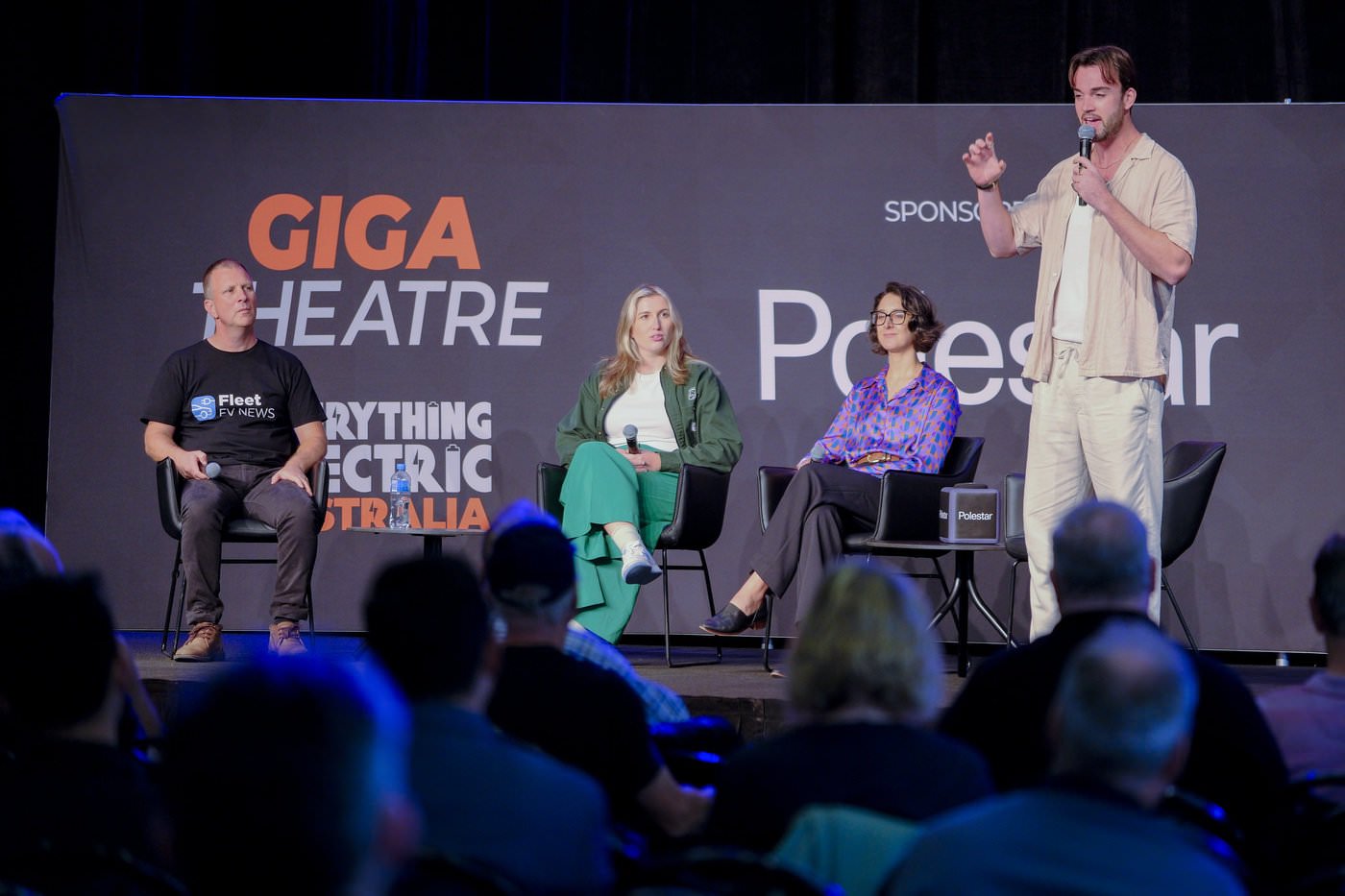
"Everything Electric Australia" in Sydney Olympic Park is an evolution of last year's [Fully Charged Live](/posts/fully-charged-live-sydney/) Darling Harbour show, continued its focus on battery electric vehicles (BEVs) as well as home energy technologies, now on a larger scale. The event, sponsored by companies like Polestar, NRMA, Origin Energy, the NSW Government and many others, featured about 80 exhibitors and aimed to encourage the adoption of cleaner technologies as well address psychological barriers to BEV adoption. Visitors could test-drive a variety of BEVs, including models from Polestar, Audi, Hyundai, BMW, and many others. It's a unique opportunity for Australians to compare and test-drive different models in one place.
Beyond mainstream automakers, the exhibition showcased BEV conversions of classic vehicles and light commercial vehicles. E-motorcycles were represented by local manufacturers like Savic Motorcycles and Zero Motorcycles, with a notable presence of e-bikes as well.
Charging infrastructure companies, solar race car displays, and electric (induction) cooking were also featured. The event included on-stage presentations (of varying quality) by industry experts, and YouTube personalities, covering various BEV-related topics, along with 50 live sessions discussing subjects like BEV myth-busting and reducing carbon emissions.
I went Friday (only) though had planned to maybe go for two of the three days, but to be honest, the panel disccussions were not that interesting (having a YT channel doesn't turn you into a battery chemistry scientist). It would be better to have two people on your panel discussion who actually know what they are talking about, than having another two present who waffle about and suck up all oxygen in the room.
I had seen most of the cars before. Except the electric Lotus (a Volvo cousin), and electric Polaris.
I test drove a BMW i4, just to compare against my Volvo, and that interior is just not for me. Also way too many buttons.
Like, a P button and a P lever? A stop/start button? And then those screen graphics. Meh.
What I did love was Peugeot's e-3008 instrument cluster layered graphics, that looked really neat and modern and not like a 90s video game on the BMW.
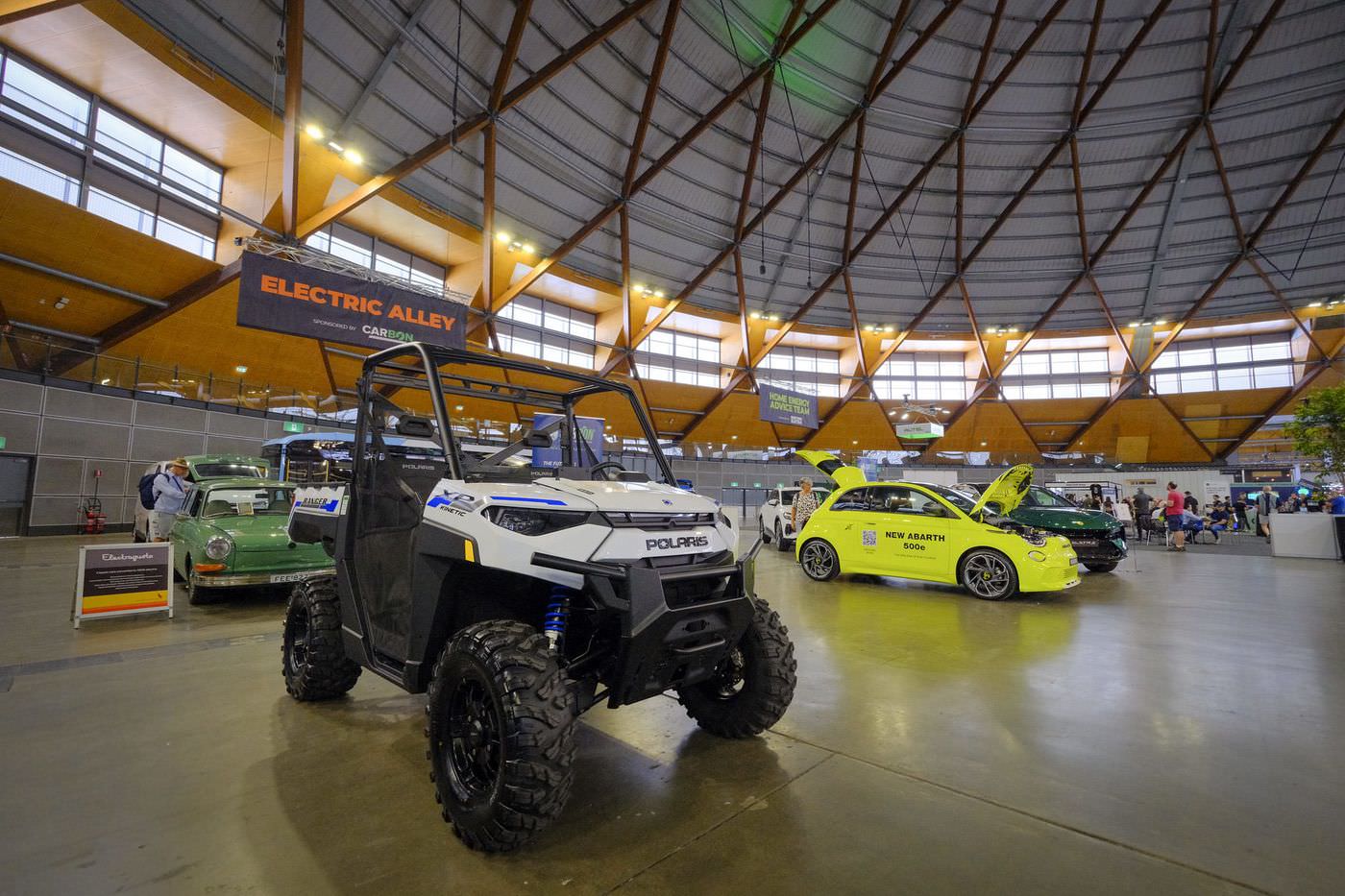
---
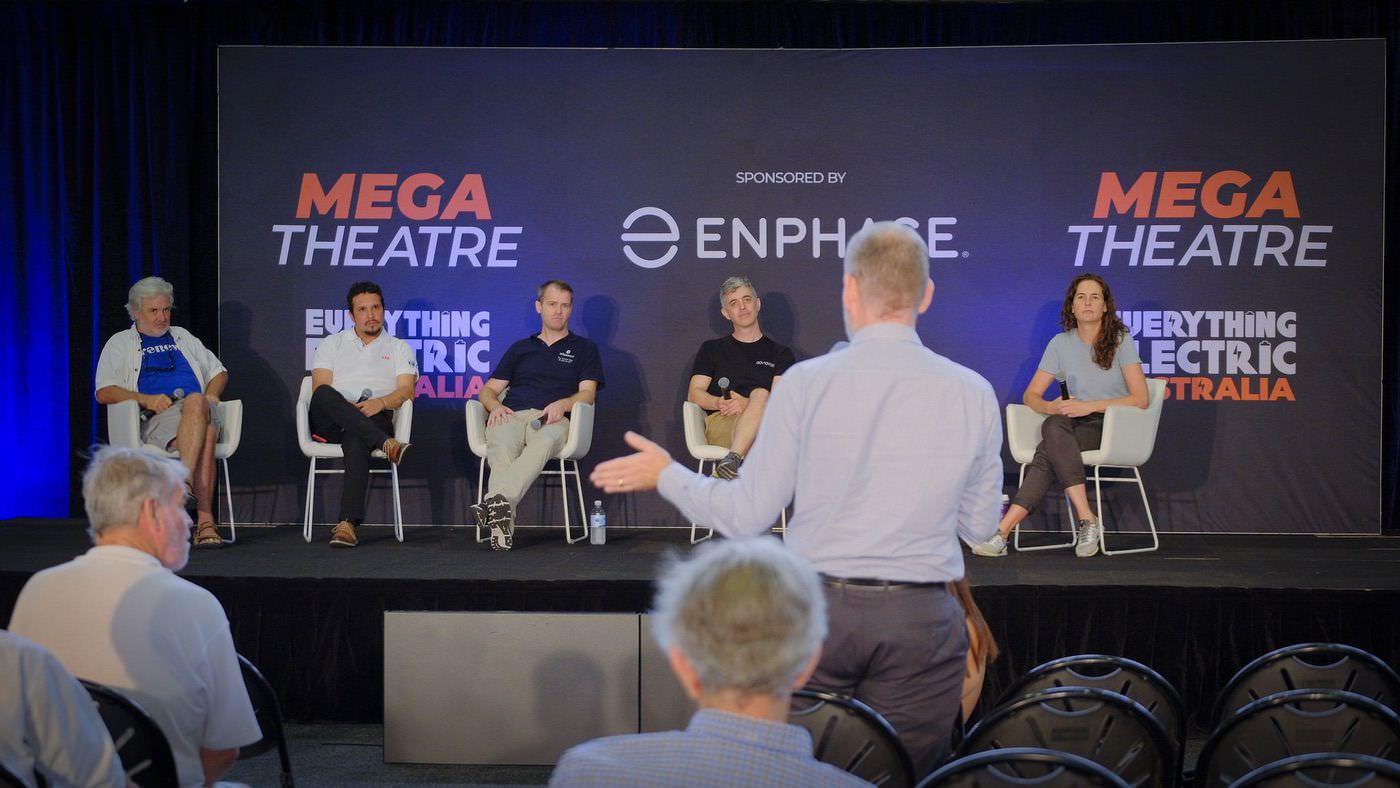
---
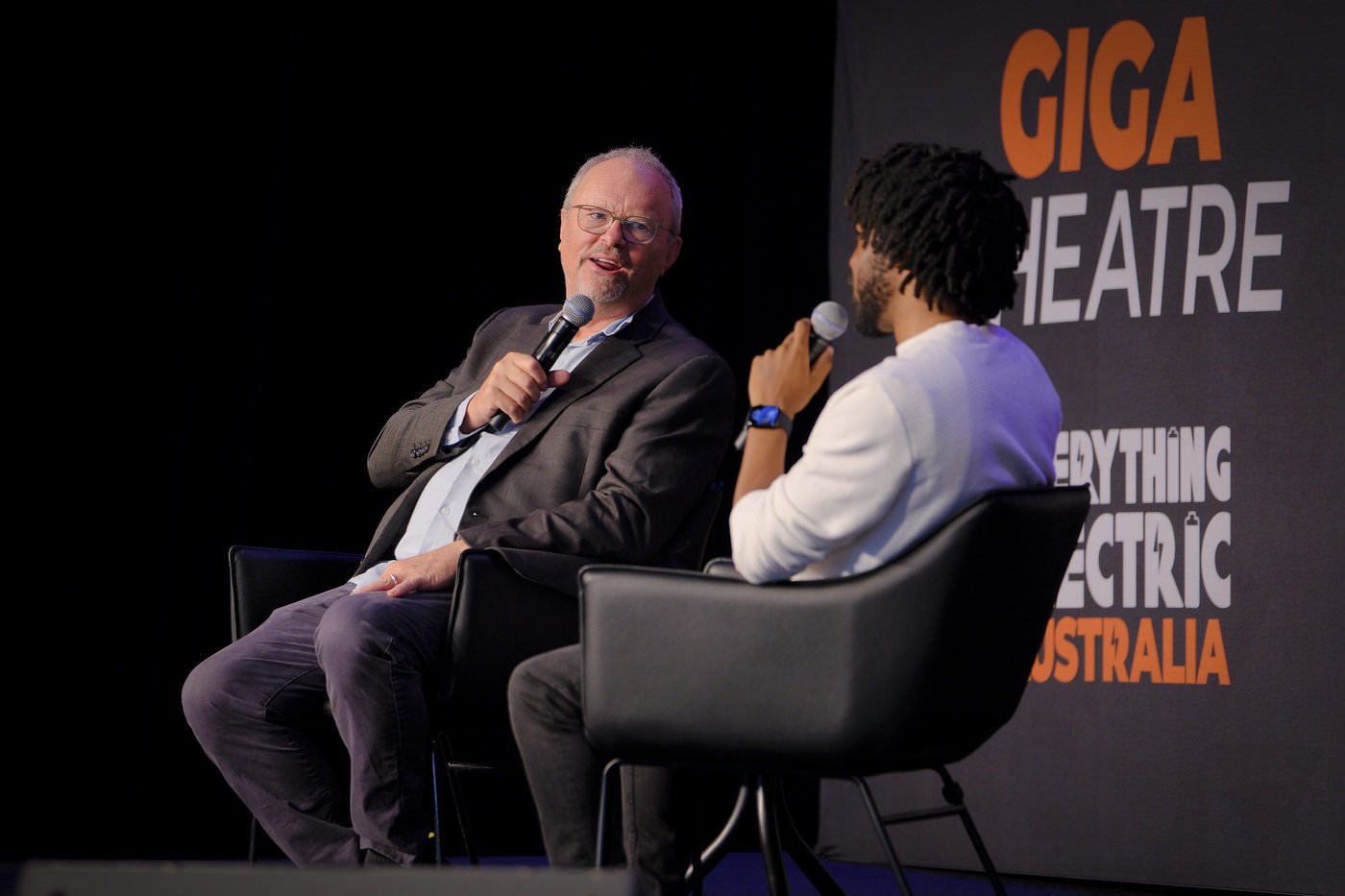
Check out the full [**Flickr album**](https://www.flickr.com/photos/halans/albums/72177720314695458).
[END OF CONTENT]
*************************************
## [POST TITLE]: January 2024
[POST LINK]: [https://electricvehicle.life/news/2024/2024-01-january/](https://electricvehicle.life/news/2024/2024-01-january/)
[POST DATE]: 2024-01-25
[START OF CONTENT]
[END OF CONTENT]
*************************************
## [POST TITLE]: December 2023
[POST LINK]: [https://electricvehicle.life/news/2023/2023-12-december/](https://electricvehicle.life/news/2023/2023-12-december/)
[POST DATE]: 2023-12-29
[START OF CONTENT]
[END OF CONTENT]
*************************************
## [POST TITLE]: Volvo XC40 Recharge Twin
[POST LINK]: [https://electricvehicle.life/posts/volvo-xc40-recharge-twin/](https://electricvehicle.life/posts/volvo-xc40-recharge-twin/)
[POST DATE]: 2023-12-15
[START OF CONTENT]
Decided to replace my [Tesla Model 3 SR+](/posts/adjo-tesla) and upgrade to a Volvo XC40 Recharge Twin Ultimate (aka EX40 for MY25).
This is a post where I collect my first impressions of the XC40 Recharge, and compare it to my previous Tesla M3.
# That new car smell
Traded in my MY21 Tesla Model 3 SR+ for a Volvo MY24 XC40 Recharge Twin Ultimate (ex-demo). The Tesla trade-in value was on the lower end of what I had hoped for though, I could have gotten more if I had gone private. But it’s just convenient to do a dealer trade-in.
## History
The Volvo XC40 model was introduced at the end of 2017 (the original Tesla Model 3 was also from 2017), and had a number of minor refreshes over the years. It has petrol, diesel and (plug-in) hybrid models, and since 2019, a battery electric model, both in front-wheel and all-wheel drive. The diesel engine got discontinued, as was the petrol AWD I believe. As you can see, the XC40 [started out as Volvo Concept 40.1](https://www.volvocars.com/au/v/cars/concept-models/concept-40) is not a purpose build BEV vehicle, but rather a transition vehicle. This same Compact Modular Architecture (CMA) platform though is also used for the C40 model (which is only available as EV) and by Polestar for its Polestar 2 model, which in fact started as the [Volvo Concept 40.2](https://www.volvocars.com/au/v/cars/concept-models/concept-40). Hence why the XC40 Recharge, C40 and Polestar 2 have a transmission tunnel, which is used to house batteries, missing out on a flat floor in the back.
([More about the design philosophy](https://autodesignmagazine.com/en/2018/01/volvo-xc40-personalita-inedita/))
2023 saw a refresh of the MY24 XC40 Recharge version with an updated front, a new, slightly larger NMC battery and faster charging, and a new motor layout, in single rear-wheel drive or Twin all-wheel drive with Asynchronous Induction motor (110kW) in the front (which is disengaged most of the time, improving efficiency), and Synchronous Permanent Magnet (190kW) in the back. The same changes were introduced in the C40 and Polestar 2. This may well be the last refresh for the XC40 model, as Volvo is phasing out ICE cars, and they introduced a new EV-only EX line of models with the EX90 and EX30 (deliveries starting second half of 2024). These are designed from the ground up to be electric only, with the added efficiency that comes with that (efficiency, interior space).
The 2019 XC40 Recharge is by many considered their first EV, but Volvo had a limited run of the [C30 battery electric vehicle](https://www.autoblog.com/2011/04/05/first-drive-volvo-c30-electric-lovely-except-sky-high-price/) in 2011, which I assume they learned a lot from. For reference, up to then, Tesla had only been manufacturing the Roadster, and debuted the Model S mid 2012.
By the way, XC stands for “Cross Country”, applying to their SUV and wagon models, having a higher stance (than their sedans).
I like the XC40’s blocky, muscular stance, broad shoulders, and its two-tone colour combo. I think the Bright Dusk and black roof is just a classy, fine looking car. Even after 6 years, with the slight tweaks on the headlights, the Thor’s hammer daylights and indicators, it still looks modern and sophisticated (I think). Most people wouldn’t notice this being an EV. The lack of grille at the front is the only giveaway. Lots of EVs, like Kias and Hyundais, BYDs, the MG4, they look too “futuristic” and they will look dated very soon.
I drove a C40 once on a NRMA EV day (for 10-15 minutes), as well as did a test drive of a 2022 Polestar 2 Performance (for 30 minutes). I rented a 2022 Single motor Polestar 2 for week (doing 761km) and a Cupra Born (as a replacement for Polestar 2) for a week (doing 2312km) while on holiday in Europe. The Polestar was a fine car, build like a tank (just like Volvo) and smooth, but the Cupra Born was a more enjoyable, fun drive. The software on the Polestar was far better than that on the Cupra Born though. And I’m not a fan of the Cupra’s looks, it’s not my thing.
## Pricing
The Volvo XC40 Recharge Single motor (Plus package) starts at about AU$85.000 driveaway (significantly more than a base Tesla M3/MY RWD), while the Twin motor (incl Ultimate package) is AU$94.500 driveaway. For comparison, a Tesla MY single motor is AU$70.800 driveaway, but twin motor Performance is AU$99.300 driveaway, with optional paint options, and Advanced AutoPilot and Full Self Drive options (which you can pay for, but can’t actually use in Australia at the time of writing…). The MYP is a lot faster (top speed) than the XC40 Twin, but you get the same Tesla (interior) finish as the base model, which at this pricepoint is staggering.
The pricing of a Polestar 2 is very similar to the Volvo pricing, but with a bunch of optional packs to choose from. The disadvantage for me of Polestar is the fact they don’t do trade-ins, and you can’t service a Polestar at all Volvo dealers (only ones that are licensed), so It meant that I had to get it serviced in Sydney or Newcastle, which is an inconvenience (like having the Tesla serviced in Chatswood only) being on the Central Coast. Not that EVs need much servicing, but I did get two Tesla (warranty) services in the 2+ years I had mine.
Talking about Servicing, the Volvo comes with 5 years or 150.000km of servicing included (new windscreen wipers, break fluid, safety checks…), 8 years or 150.000km on the high-voltage battery, 5 years roadside assistance, 5 year unlimited km warranty, 4 years Digital Services data subscription, and 8 years of Volvo On Call service (with Automatic Crash Notification, Stolen Vehicle Tracking,…)
(Tesla comes with 4 years warranty, and a limited roadside assistance, 8 years for the battery. You also pay AU$10 a month for Premium Connectivity data plan after the first year)
## Build
The car is build like a tank, just like any other Volvo. The doors give you a very satisfying thunk sound when closing. The dashboard is solid. The seats are comfortable, giving lots of support. The tailgate comes down reassuringly. You’re not skimping on anything just because it’s an EV.
It is day and night difference to my Tesla M3. Tesla’s efficiency comes at the cost of a solid, quality build. It is 500kg lighter, which means you get lighter, simpler seats, a frameless door, a very light A-pillar cover (which you can simply press in) for example, a single power strut which struggles to close the booth, a light paint job,… The XC40 on the other hand oozes quality. People tend to compare Tesla to other luxury brands like BMW, Audi, Volvo,…, but really they shouldn’t, you can’t.
## Drive
The drive is how you’d expect a Volvo to drive, I suppose. It’s lovely, relaxed, refined. Even more so as an EV. I missed the higher seating position of an SUV in the M3. Having a better view of traffic around you, makes you feel more relaxed. I didn’t know that was such a big deal (for me), until I got back into an SUV, vs a sedan driving position. It’s also easier, effortless to get in/out.
One pedal driving is as good as on the Tesla. Although during my testdrive, I didn’t think so. But maybe I didn’t set it up correctly then, or an OTA update changed that. Once you’re used to one pedal driving, you can’t go back. Regen is indicated on the right hand side of the instrument cluster.
The XC40 eats up any bumps and potholes it encounters. You glide across speedbumps. The M3 would pass on any bump straight up your spine. But the M3 is more fun cornering for sure, doing Old Pacific Highway, or Kangaroo Valley. I’ll be doing that slower in the XC40. But I’d also open up the sunroof and let in the sound of birds and cicadas. (Opening a window is not quite the same). Cornering is not the XC40’s forte, as you’d expect of a heavy SUV, but as you get out of the corner, and put the pedal down, it goes… Just like at traffic lights.
Efficiency though is far lower than the M3. The XC40 is a bit of a brick (Cx 0.32), vs the slick and slippery M3 (Cx 0.23). It’s also far heavier (nearly 500kg). My average after 2+ years was 13.4kWh/100km (or 7.4km/kWh) on the M3. After 5000km on the XC40, I’m at 18.0kWh/100km (or 5.55km/kWh). My fortnightly office trip from Central Coast to Darling Harbour is about 100km, and that’s 17.4kWh/100km (5.7km/kWh) at an 81km/h average (about half the trip is at 110km/h highway speed). This would give me 410km - 445km on the 78kWh XC40 battery. The bigger XC40 battery also means I can only trickle charge 20% overnight, vs 30% on the M3 54kWh battery. Not a big deal for me. But yes, a smaller battery and more efficiency made the M3 cheaper to run than the XC40. If only I had solar panels, it wouldn’t matter.
Ground clearance of the Recharge is 175mm, compared to 211mm of the XC40 petrol versions, or 140mm for the Tesla M3.
The XC40 Recharge has an official wading depth of 45cm, as documented by Volvo. Tesla M3 doesn’t have an official wading depth which didn’t stop people driving through water 60cm deep or more, probably voiding their warranty if anything went wrong.
There is no eco or sport mode. There is an offroad mode though, providing enhanced all-wheel drive, and hill descent control, available at up to 40km/h. Here’s a great [overview of it’s offroad capabilities](https://www.youtube.com/watch?v=5ADjqzkK9uY).
Side mirrors have boomerang blind spot indicators, and are auto-dimming. The XC40 has all the expected tech safety features, including Pilot Assist, and a 360 bird-eye view using four of its cameras. It’s not immune to ghost-breaking, just like on the M3, although it doesn’t break as hard as on the M3.
## Interior
I love the interior. It’s understated. They call it Swedish minimalism. Compared to Tesla’s minimalism, it isn’t. But compared to other European or Asian brands, sure is. I drove a BMW i4 recently, and compared to that, the XC40 is an oasis of calm and elegance .
Seats are comfortable, supportive, superior to the Tesla M3 seats. Plastics used are decent, solid. The steering wheel is chunky, with the right buttons at your fingertips. It has classic stalks, which feel solid to use (in contrast to both the Tesla M3's and even BMW i4's). I say classic, as it has all possible headlights and wiper settings right there on the stalks. No need to go through a menu to change the wiper speed.
The 9” center screen is responsive, and has a good resolution.
The wireless charging pad is a bit finicky (though it could be my iPhone case).
The glove box has, what the British call, a curry hook, to hang up your takeaway food bag.
You can remotely fold down the backseats' headrests to get a better view out the back.
The Ultimate edition has topography inspired, translucent back-lit inlays that create a soothing glow in the cabin, when the lights turn on. Love that, so different to anything else out there.
The car has these anchor points in the roof, which allows it to attach accessories, like a divider net, between the booth and backseat, or between the front seats and the back when backseats are folded down. Handy when taking the dog in the back.
## Software
The Volvo uses Android Automotive OS (AAOS), a variation of Google's Android operating system, tailored for its use in vehicle dashboards. Introduced in March 2017, the platform was developed by Google and Intel, together with car manufacturers such as Volvo and Audi. It comes with Google Maps for navigation, both on the 9” center screen and the instrument cluster. Google Maps will also tell you your expected SOC (state of charge) at the destination, just like with Tesla. And it is very accurate And a dedicated charging shortcut to show nearby chargers.
The instrument cluster shows speedometer on the left, and energy use/regen dial on the right, with a maps display in the middle. The instrument cluster graphics are elegant and minimal, in a calm blue colour palette.
You have access to the Google Play store where you can add AAOS designated apps, like Audible, or Prime Video to watch movies or TV series (when parked), just like in the Tesla, though on a smaller screen. The selection isn’t big for AAOS apps, but there’s Waze, YouTube, Spotify, PlugShare, games, and a full browser, where you can load ABC iView or SBSonDemand. Come to think of it, more apps than you can get on Tesla.
Currently, Volvo uses Singtel as their mobile provider. Not Optus, but its parent company, Singtel. So yes, it looks like your connected from Singapore, for example in the Prime app (“You on holiday?”, but it still streams). I was told by the dealer Volvo was looking into getting an actual local partner for their mobile connection. If you want to use Disney+ from the browser, you will need to hotspot from your phone as Disney+ blocks roaming.
On the center console, there’s a physical, backlit, homescreen button (where a 3 seconds press gives you cleaning mode, and 20 seconds restarts the system), that brings you to a focused home screen with four sections, with each section showing its last used app. There’s also a separate app overview screen like on a tablet.
Then there’s also the car functions screen which seems separate from AAOS. This is where you change audio settings, preferences etc.
It has a dedicated range app/screen, showing a maximum (hypermiling, turning everything off) and minimum (flooring it) expected range and current expected range. It’s good to know the absolute minimum range you still have. It also has an outdoor air quality app.
One of the AAOS 4 homescreen options is (wired) Apple CarPlay. You hook up your phone to the CarPlay designated USB-C port, the other port is for power only. I love the convenience of CarPlay, the familiarity. But only certain iOS apps work on CarPlay. It is perfect for a 9” screen though.
I wrote a bit more about CarPlay [here](/posts/carplay).
Overal, the software works well, it’s simple and familiar. To be honest, Polestar’s integration of AAOS is neater and more modern looking, true.
I believe I've had three OTA updates so far over the last three months, which is nice.
What is missing though is Android Auto support, pretty strange considering the AAOS basis this runs on. I’m sure there are more Android Auto apps available than AAOS apps.
## App
The car also has an app, for iOS and I assume for Android.
It allows you to remotely unlock/lock your car, turn on or schedule the air conditioning, and schedule charging. It shows the location of your car, SOC, temperature (outdoor only), the odometer and average energy consumption, car details (VIN) and car software version. It has shortcuts to get assistance, and shows your current subscriptions (connected services). I wish it allowed for battery preconditioning, would show lifetime charging stats, differentiated between home and public chargers. Tesla's app in far superior in comparison.
## Sunroof
I actually hated the M3 sunroof. As driver, you don’t get to enjoy the view. Sure it makes the interior lighter. It also burns the top of your skull in the Sydney sun. Even with the (optional) shade attached, you could still feel the sun on top of your head. The car parked at home would get 56C. The interior overheating protection is supposed to kick in at 40C, but if the M3 was in a deep sleep (not sure, but when parked for 24h?), that wouldn’t kick in.
The XC40 has a traditional moonroof (I didn’t know there was such a thing as moonroof vs sunroof), with a build in shade.
It can vent, or it can open up the front half. Not something you’d use in Sydney summer time (except to quickly vent hot air), but when Sydney winter time comes, I expect to open it up for sure. The operation is with capacitive swiping and tapping, and needs a bit of getting used to. C40 and Polestar 2’s roofs don’t open (as such, they’re sunroofs).
So far, the hottest it got inside parked at home was 42C.
# Conclusion
I love my XC40. It's practical, it's fast, it's comfortable, it's safe, it's efficient enough.
It's a Volvo. It's a keeper.
EDIT: I’ve been told that a moonroof is a sunroof with a glass panel, and a sunroof is a metal panel (which slide open)?
EDIT: Start of 2024, Volvo announced a namechange of the XC40 Recharge to just EX40, in line with the EX90 and EX30 EV only models, which lack the Recharge monniker. The petrol versions remain XC40.
EDIT: I called my Tesla, Thelma. My Volvo is called Greta.
[END OF CONTENT]
*************************************
## [POST TITLE]: Adjö, sayōnara, adiós, goodbye
[POST LINK]: [https://electricvehicle.life/posts/adjo-tesla/](https://electricvehicle.life/posts/adjo-tesla/)
[POST DATE]: 2023-12-14
[START OF CONTENT]
# Bye Bye Tesla
In late December 2023, I traded-in my 2021 Tesla Model 3 Standard Range+, which I had driven for nearly 28,000 km. Introduced in 2017, it was the most affordable option at the time (2021), priced just below $60,000 AUD. The car, featuring an LFP battery and manufactured in China, boasted a sleek design. Although the color options were limited, I chose a dark grey. Its performance was impressive, offering a smooth ride, minimalist interior, and it was the quickest vehicle I had ever owned, a result of its electric vehicle (EV) nature, not a specific aim. The car was also quite efficient, with an estimated range of about 420km, though I suspect the actual range was closer to 350km. It featured a spacious trunk with ample under-floor storage and a large 'frunk' (front trunk).
## Charging Network
The **Tesla Supercharging** network was a significant perk of owning the car, including some complimentary charging sessions, as was access to numerous Tesla destination chargers, often free of charge. The charging process was seamlessly integrated with the car's system; the vehicle's identification number was automatically recognized upon plugging in, and the cost of charging displayed on the center console. This seamless integration is a hallmark of the Tesla experience. It's puzzling why established car manufacturers haven't adopted this approach, considering their extensive network of dealerships could serve as potential charging hubs.
I started out at 426km of range, and ended at 402km, having used 3.732 kWh total energy. This resulted in an average consumption of 135 kWh/km (or 7.4 km/kWh), which is impressive considering I wasn't specifically trying to maximize efficiency. My vehicle was equipped with an LFP battery, allowing me to regularly charge it to 100% without concern. At home, I could conveniently slow charge overnight, adding about 40% (20 kWh) to the battery between 10 pm and 8 am, taking advantage of lower electricity rates. This practice ensured I always had access to the full driving range. This contrasts with other types of lithium-ion batteries, like NMC batteries used in the Long Range and Performance models, which prefer not to be fully charged to 100% to maintain battery health; typically, they are charged only up to 90%.
The Model 3 is a sedan with a low profile, which presents some challenges in getting in and out. Its low clearance became a notable issue for me, as I frequently scraped the bottom of the car on my driveway due to the angle of departure, a problem I hadn't foreseen when purchasing the car. Consequently, I had to adopt a specific angle when reversing out of the driveway. The Performance model of the car has an even lower clearance.
## Screen & software
I didn't encounter any issues with the **screen-based instrumentation and controls** in the car. Adapting to glancing sideways to check speed was easy, though a Heads-Up Display (HUD) would be a significant improvement for many users. Additionally, the interface could benefit from more vibrant colors as it felt a bit plain.
The **3D car display**, which shows nearby pedestrians and objects like traffic cones, initially seemed impressive. However, its practical value while driving is limited and it often occupies valuable screen space. Its animations can be erratic, especially at traffic lights. Over time, the charm of this feature fades, and it seems unnecessary since attention should be focused on the road, not the display.
The car's software includes some useful features like Valet mode for speed limitation, PIN code for driving, and speed restrictions for lending the car, especially to younger drivers. While I may have overlooked other minor features, there are also some less practical ones, like a whoopee cushion app or a fireplace display. The inclusion of streaming apps like Netflix and Disney+ is appealing for their use on the large screen, but they require separate subscriptions. Additionally, charging stops are typically too short to fully enjoy a show or movie, leading to a preference for home viewing instead. The car has an internet browser, but it doesn't support playing videos with sound, so streaming from third-party platforms like ABC iView isn't possible.
During my two years of use, I found the Netflix app, and to some extent the Disney+ app, became increasingly difficult to navigate due to an Intel Atom-based entertainment system and insufficient memory. This issue seemed to worsen with the growing size and number of images in their catalogs.
## Cameras
The **dashcam and Sentry Mode** features in the car are invaluable, though you might not realize their importance until you need them. It's surprising that other car manufacturers, despite having 360-degree cameras, haven't implemented similar features, particularly the dashcam aspect. However, it's important to note that Sentry Mode can consume up to 3% of the battery daily.
Regarding the **auto-wipers**, they are the most problematic I've ever experienced. The lack of control over the wiping frequency is a significant drawback. The system is either on auto-mode or not, often wiping too frequently or too quickly. In other vehicles, there are typically up to five auto settings available through a physical control, so the inability to adjust the wiping interval in the Tesla's software is puzzling. This issue is also linked to the vision system, where even a couple of raindrops can trigger the wipers, leading to a frustrating driving experience. Although there have been updates over the years to how and when the wiper selector appears on the screen, and the 2023 Holiday update reportedly made some changes in this area, I haven't been able to find specific details about these changes online.
The addition of the blind spot camera view in 2021 was a step in the right direction, seemingly inspired by features in vehicles like the Ioniq 5, which displayed it on the driver's instrument cluster—a more logical location. In contrast, Tesla's placement of this display on the center console is less than ideal, as it often requires drivers to look away from their intended direction. However, the 2023 Holiday update improved this by introducing an orange light indicator for objects in the blind spot, a feature that would have been beneficial from the start.
## Auto Pilot
The **Auto Pilot** feature, encompassing adaptive cruise control and lane assist, was a standout feature, particularly for highway driving, and has become a must-have for me in any future car. While I don't have a basis for comparison with other systems, its performance on highways is commendable. However, its use on secondary roads is less reliable, often resulting in unexpected braking for stationary objects or oncoming traffic, which can be hazardous for following vehicles. Many drivers are unaware that Auto Pilot is primarily designed for multi-lane highways, leading to frequent misunderstandings and potentially dangerous situations. Therefore, when driving behind a Tesla, it's wise to maintain extra distance to anticipate any sudden braking.
The design of the A-pillars in the vehicle also poses some visibility challenges due to their width, angle, and length. Extra caution is required when turning and checking for pedestrians or other cars. In my initial days of driving the Tesla, I experienced a near miss attributed to these obstructive pillars, though it's unclear if it was the car's automatic braking or my own reaction that averted a collision.
## Glass Roof
The **glass roof** in the car is an impressive feature at first glance, but as a driver, there's little opportunity to appreciate it. Moreover, its tendency to heat up significantly is a drawback, especially considering that Tesla designs its cars in sunny California. I've recorded interior temperatures reaching 56°C. The Cabin Overheating Protection feature is meant to activate at 40°C, but it fails to do so if the car is in "sleep" mode. Consequently, I often found myself manually turning on the air conditioning to cool the interior once the car was awake and monitoring the temperature. I purchased the Tesla roof shade, which provides some relief, but the sensation of the sun's heat on my head was still noticeable. Overall, I am not a fan of the full glass roof, especially since it doesn’t open.
## Mobile App
On the other hand, the Tesla mobile app is outstanding. It offers extensive car information and remote functionality, and it operates smoothly. The app effectively serves as the car key, enabling you to drive without needing anything else. It's a highlight of the Tesla experience, offering remarkable seamlessness.
Regarding the car's locking mechanism, the Model 3 locks itself quite rapidly, seemingly within about five seconds, though I haven't timed it precisely. It's responsive enough to unlock when I touch the door handle, indicating it knows I'm nearby, but the quick locking can be a minor annoyance. However, this feature does provide the assurance that the car is secure when walking away.
## Service
During my ownership, I submitted three **warranty service** requests. The first was for a squeaking sound in the driver's seat, which was quite bothersome. The second involved replacing the charging port following a warning message that prevented me from fast charging. The third was for replacing an o-ring in the trunk's power strut, which always seemed underpowered and struggled to function properly. The service experience was satisfactory, and I received a $60 Uber voucher (as far as I recall) for transportation to and from work (from Chatswood to CBD). However, I was disappointed not to be invited for a scheduled service after 24 months, especially since I hadn't reached the 30,000 km mark yet.
Additionally, there were persistent **squeaking noises** inside the car, particularly noticeable on highways with rough surfaces. These sounds were near my head on the passenger side and somewhere in the back, which was unexpected for a car just two years old. It was also challenging to describe these issues in a service request, especially when they didn't occur during city driving.
In summary, while the car had its merits, it wasn't exceptional. It's an influential vehicle, but not quite a luxury car (unlike perhaps the Model S). The overall build felt somewhat cheap and light, which is arguably efficient given its 1.7-ton weight. The interior finish, especially the A-pillar cover, felt inexpensive and misaligned, easily depressible with a finger. The seats were mediocre, lacking sufficient support during cornering or comfort for long journeys. The backseat had a cardboard-like feel. All these minor issues collectively detracted from the overall experience.
And then there are That Man's shenanigans, which I simply do not want to be associated with.
Bye bye Tesla.
(_sure, I will be using the Tesla Supercharger network on long drives, when I need to and can't avoid it_)
EDIT Feb 2024: I've since been able to have a look at the new 2024 Model 3 (Highland), and yes, the interior is slightly better quality, the A-pillar feel is more robust, and it now has a second trunk power strut which makes it sound more confident closing the trunk. But then that new interior mood lighting just ugly/tacky, and the removal of the stalks is, argh, no words,...
[END OF CONTENT]
*************************************
## [POST TITLE]: November 2023
[POST LINK]: [https://electricvehicle.life/news/2023/2023-11-november/](https://electricvehicle.life/news/2023/2023-11-november/)
[POST DATE]: 2023-11-29
[START OF CONTENT]
[END OF CONTENT]
*************************************
## [POST TITLE]: October 2023
[POST LINK]: [https://electricvehicle.life/news/2023/2023-10-october/](https://electricvehicle.life/news/2023/2023-10-october/)
[POST DATE]: 2023-10-29
[START OF CONTENT]
[END OF CONTENT]
*************************************
## [POST TITLE]: Electrifying Europe - 3 Week trip
[POST LINK]: [https://electricvehicle.life/posts/ev-europe-trip/](https://electricvehicle.life/posts/ev-europe-trip/)
[POST DATE]: 2023-09-29
[START OF CONTENT]
# Electrifying Europe: Three Weeks, Two EVs, One ICE
## European trip with EV rentals
Recently, I wrapped up a three-week journey across Europe, during which electric vehicles (EVs) were my primary mode of transport for two out of the three weeks.
## Polestar 2
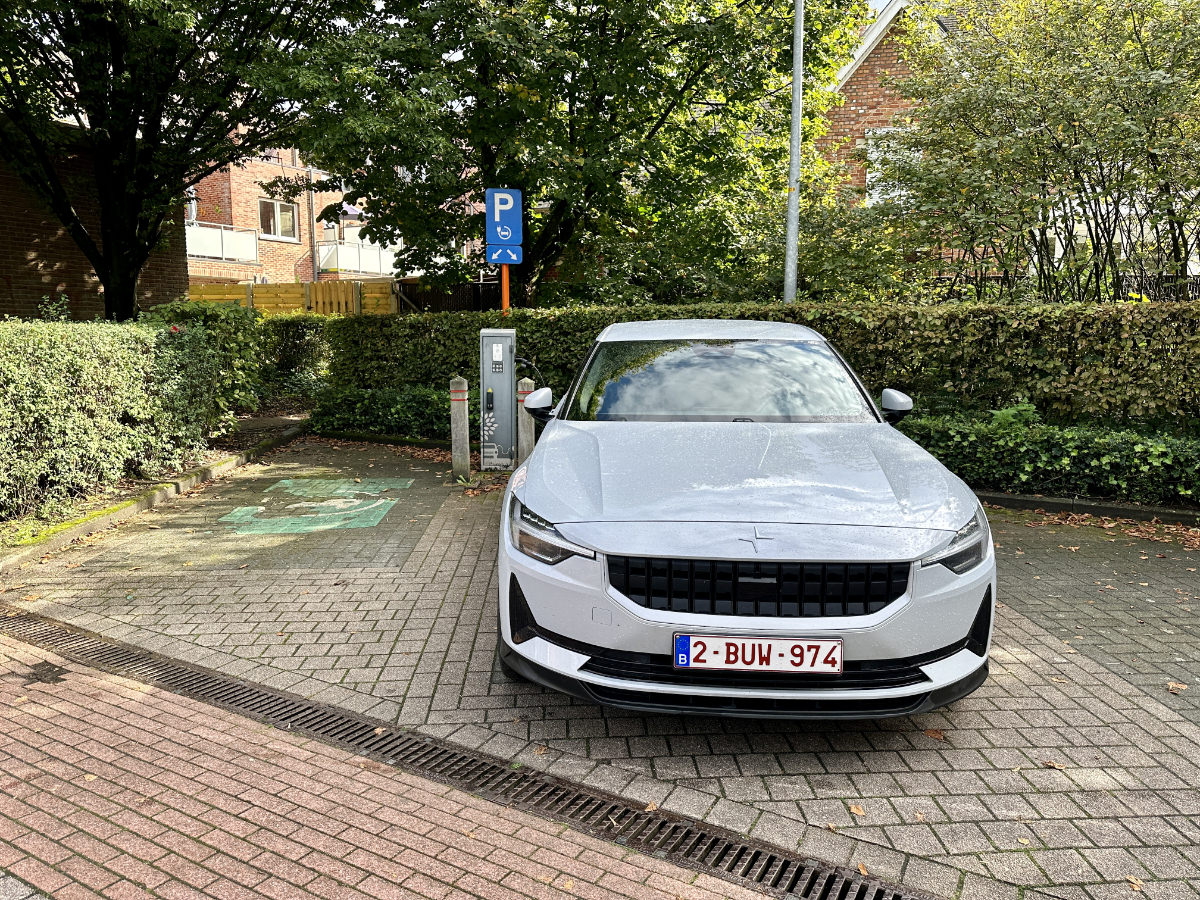
During the initial week, I opted for a Polestar 2 rental via Europcar. They graciously included a ShellRecharge card, designed for hassle-free EV charging. It was a disappointment, however, to discover that credit card payments via this card were exclusive to the UK. For other parts of Europe, including Belgium, they catered only to bank debits. Luckily, the many DC rapid charging networks across Europe do accommodate tap-to-pay credit card transactions. Still ShellRecharge might want to expand its CC horizons.
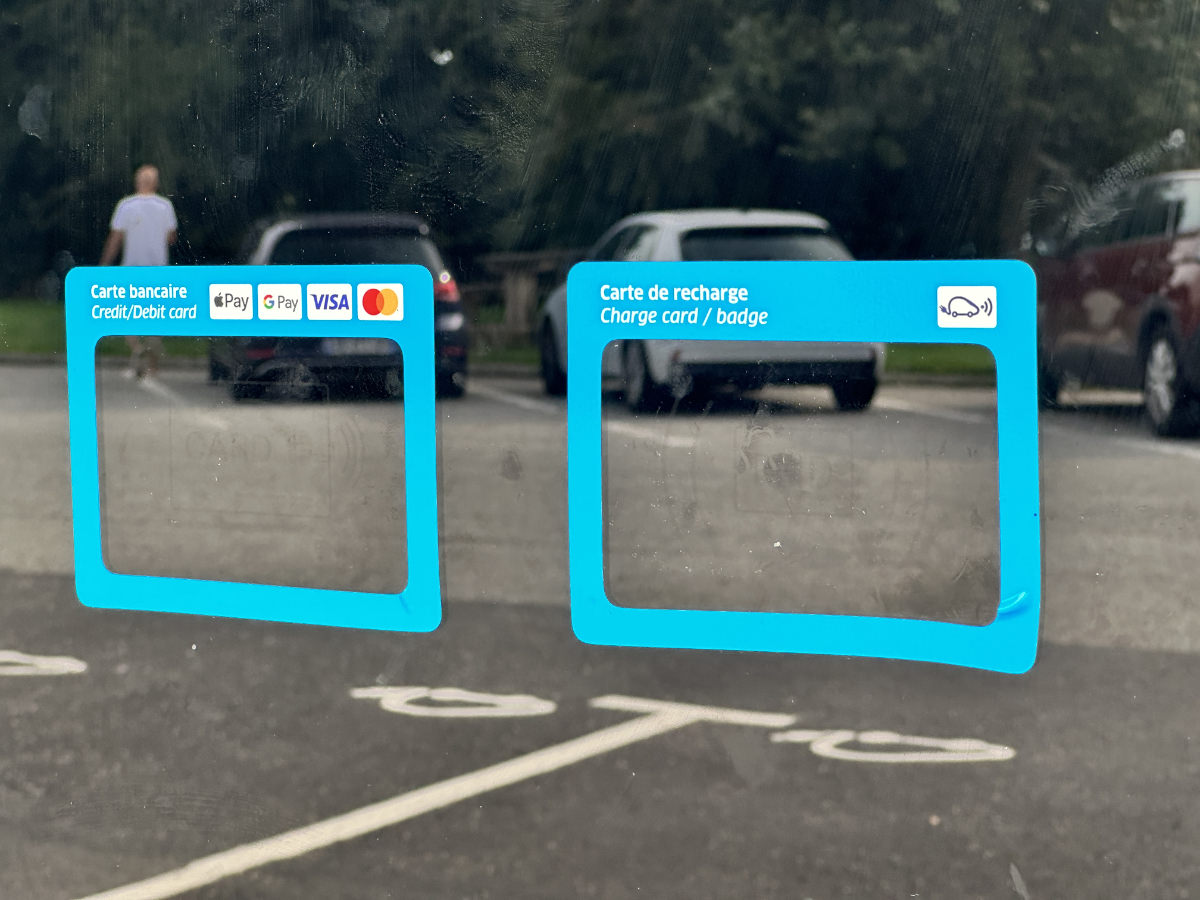
The majority of my charging in that first week took place in a quaint Flemish town, conveniently close to my family’s residence. I utilized a Smoov-Allego AC charger, which was credit card-friendly through its app. A snag I hit was that the app wasn't accessible from the Australian iOS AppStore, but thankfully, I had a backup Belgian AppStore account.
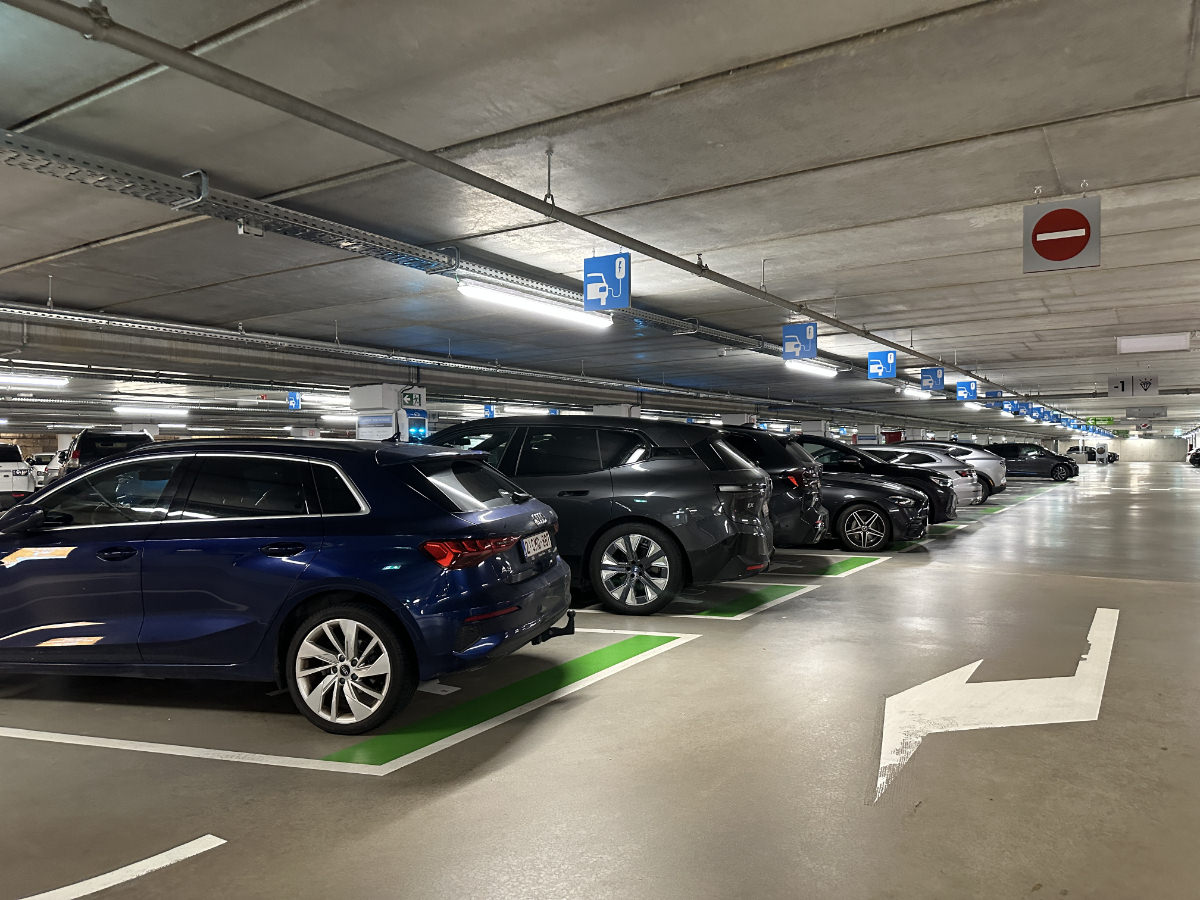
It's noteworthy to mention the impressive spread of AC and DC fast chargers in Belgium. They're omnipresent – from small towns to motorways. Although operated by different entities, these networks harmoniously interconnect. Having an account with one often means accessibility to all, although "roaming" fees do apply. I invested in a Plugsurfing tag for €10, which boasted access to the expansive European charging network (550K charging points). But like several apps, the Plugsurfing application remains elusive on the Australian AppStore. As a tourist, this limitation perplexes me, as it necessitates having a European address to set up an account.
On the subject of the base Polestar's range performance, it catered perfectly to my shorter rides. Its embedded Google Auto software and the compatibility with Apple CarPlay made for a smooth experience.
## Back to ICE
Transitioning to week two in Crete, I changed gears and went for an internal combustion engine car (well, there was no EV option). I had set my sights on a Volvo XC60 via Avis but was handed the keys to a Mercedes GLB 200 instead. While both are luxury brands, the latter didn't seem to match up to the Volvo's class. Crete's winding and often narrow pathways presented a driving challenge, compounded by the unique driving habits of locals, including some audacious overtaking maneuvers.
The Mercedes, though sturdy, was marred by its temperamental Apple CarPlay integration. It often left me directionless due to inconsistent connectivity.
## Cupra Born
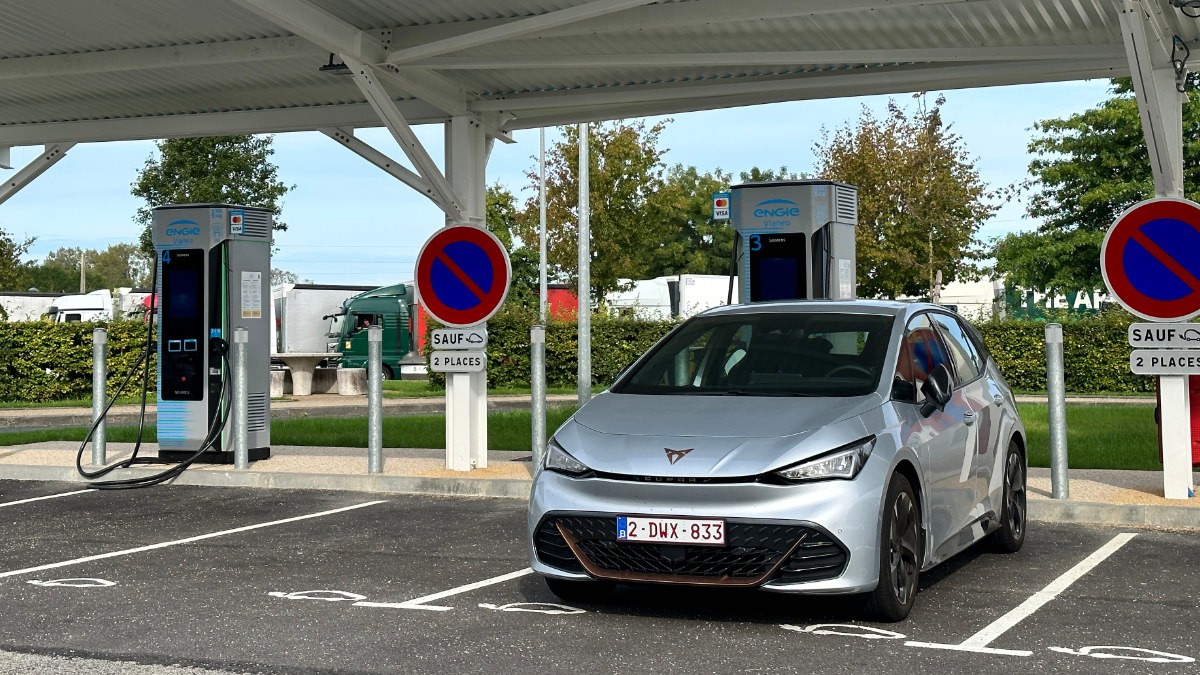
Upon returning to Belgium for the third week, a surprise awaited: instead of the expected Polestar 2, I found myself behind the wheel of a Cupra Born. This switch was bittersweet. I wouldn't have picked the Born myself, but it proved more exhilarating to drive than the base Polestar 2, though its software interface lacked intuitive flair. Armed with my Plugsurfing RFID tag, I effortlessly hopped between various charging networks in France.
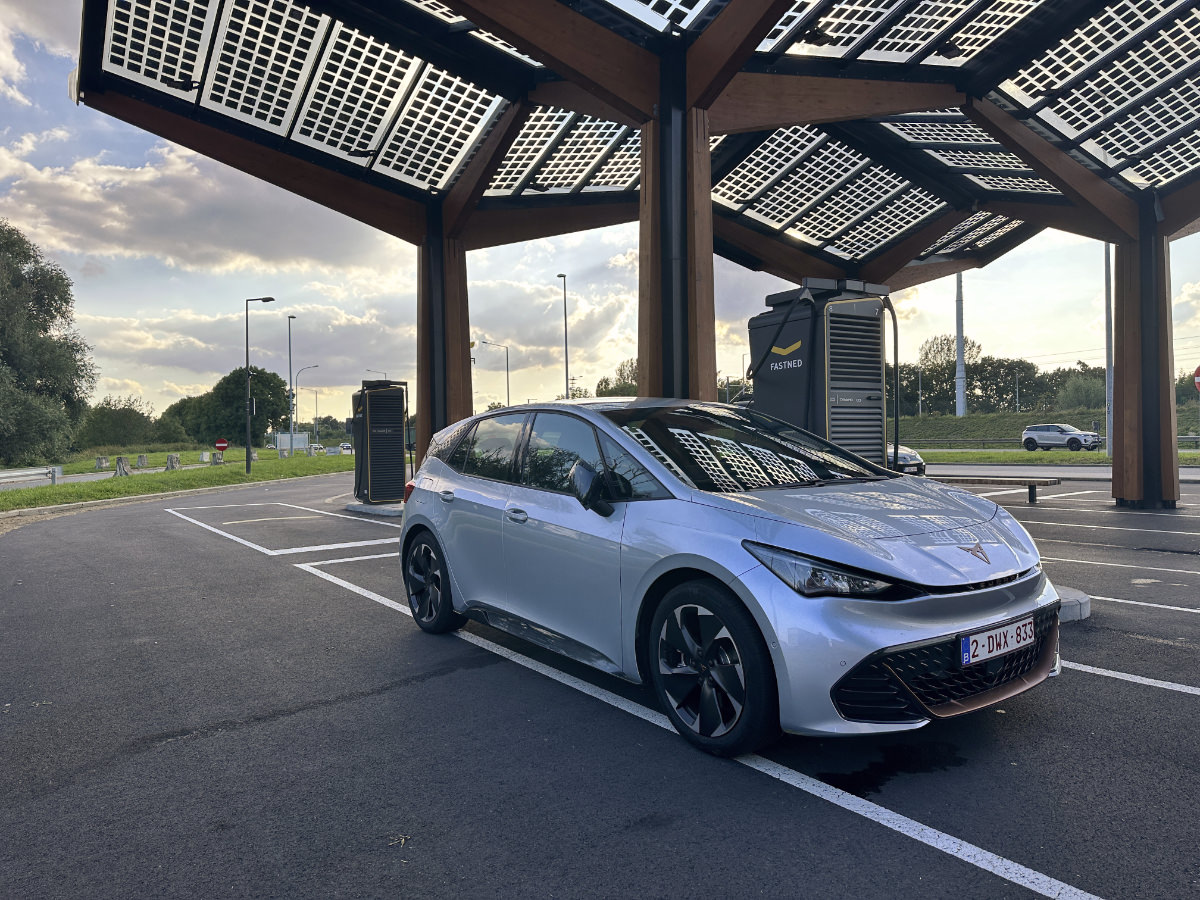
A notable lowpoint was Deauville, where I had my first charging problem. Some of their DC charging points where offline. One was showing a communication error (which I assume applied to the others too).
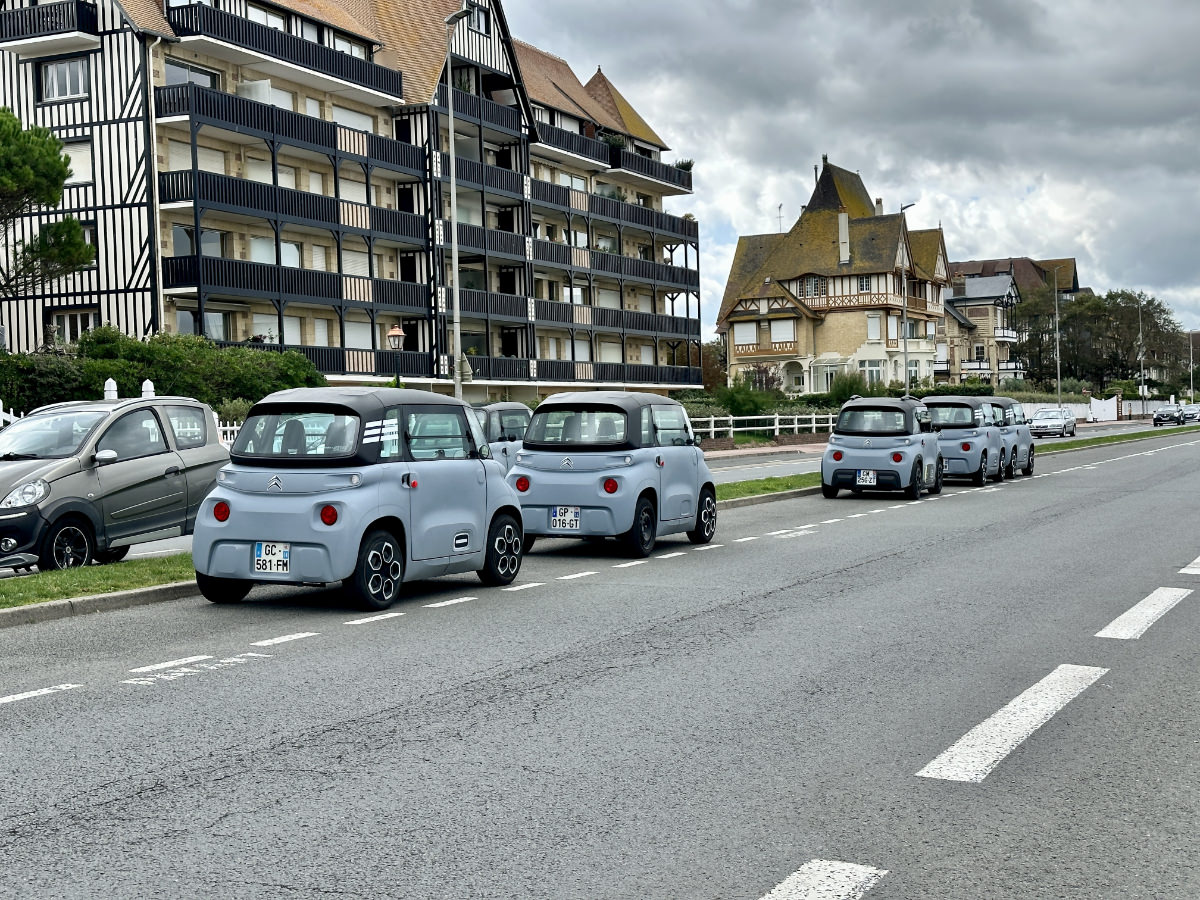
Deauville was also home to a unique Citroen Ami rental service at €29/day, with a collection of Amis parked on the street.
## Conclusion
Throughout my road escapade, my DC fast-charging expenses tallied up to €142 for 226 kWh, translating to an average of €0.65 per kWh. More rural AC charging stations set me back €107 for 231 kWh, coming out to €0.46 per kWh.
In retrospection, while the Cupra Born offered a delightful ride, my heart still leans towards my 2021 Tesla Model 3 SR+ for its unparalleled efficiency and streamlined software. Yet, when it comes to sheer comfort and craftsmanship, both the Polestar 2 and Cupra Born stand a cut above. It's just that the Tesla brand starts to have a bad smell about it, and I'm not sure I want to be associated with it anymore.
[END OF CONTENT]
*************************************
## [POST TITLE]: September 2023
[POST LINK]: [https://electricvehicle.life/news/2023/2023-09-september/](https://electricvehicle.life/news/2023/2023-09-september/)
[POST DATE]: 2023-09-29
[START OF CONTENT]
[END OF CONTENT]
*************************************
## [POST TITLE]: August 2023
[POST LINK]: [https://electricvehicle.life/news/2023/2023-08-august/](https://electricvehicle.life/news/2023/2023-08-august/)
[POST DATE]: 2023-08-29
[START OF CONTENT]
[END OF CONTENT]
*************************************
## [POST TITLE]: Central Coast New Chargers
[POST LINK]: [https://electricvehicle.life/posts/central-coast-new-chargers/](https://electricvehicle.life/posts/central-coast-new-chargers/)
[POST DATE]: 2023-08-09
[START OF CONTENT]
# Planned new chargers on the NSW lower Central Coast
Surprised/excited to see new chargers showing up on Plugshare. On closer inspection though, they are marked as "Coming Soon" though...
They are part of the [NSW ELECTRIC VEHICLE FAST CHARGING INFRASTRUCTURE MASTER PLAN](https://nswmaps.evenergi.com).
- New Tesla Superchargers at 5 Charlton St, Woy Woy NSW 2256. This would be the second Supercharger on the Central Coast, between Sydney and Newcastle. But while the Tuggerah one may be limited to Tesla owners, this one would be open to all as it received NSW subsidies. "_Each charging bay will have a rated output of at least 250kW, with 2+ bays having a rated output of 350kW._"
- bp pulse chargers at 481 Pacific Hwy, Wyoming NSW 2250. "_This site will have one 360kW charging unit to service two bays and one 150kW charging unit to service two bays._"
- Ampol chargers at M1 North Bound Freeway, Wyong NSW, 2259. "_One 335kW charger will service every two bays at this station._"
- Ampol chargers at Bateau Bay Square, 12 Bay Village Rd, Bateau Bay NSW 2261. "_One 335kW charger will service every two bays at this station._"
Additionally, there's an Ampol Foodery charger in West Gosford,
~~under construction since June~~ now.
Still need plenty more...

_new chargers in yellow, Tesla SC in red, other existing chargers in blue_
EDIT 2025: Early Q2 of 2025 (!), these planned chargers are now live, and the Woy Woy Supercharger moved to Gosford (makes more sense), open to all EVs, not just Tesla. The Wyoming bp charger is also live, but the Ampol Bateau Bay and M1 ones are still missing in action.
[END OF CONTENT]
*************************************
## [POST TITLE]: July 2023
[POST LINK]: [https://electricvehicle.life/news/2023/2023-07-july/](https://electricvehicle.life/news/2023/2023-07-july/)
[POST DATE]: 2023-07-29
[START OF CONTENT]
[END OF CONTENT]
*************************************
## [POST TITLE]: June 2023
[POST LINK]: [https://electricvehicle.life/news/2023/2023-06-june/](https://electricvehicle.life/news/2023/2023-06-june/)
[POST DATE]: 2023-06-29
[START OF CONTENT]
[END OF CONTENT]
*************************************
## [POST TITLE]: Countering LCA FUD in renewable energy and EVs
[POST LINK]: [https://electricvehicle.life/posts/lca-fud/](https://electricvehicle.life/posts/lca-fud/)
[POST DATE]: 2023-06-23
[START OF CONTENT]
# Countering FUD
FUD stands for "Fear, Uncertainty and Doubt". It is a communication tactic used to spread negative or misleading information about a product, service, or idea with the intention of creating fear, uncertainty, and doubt among consumers or the target audience. The purpose of using FUD is to undermine the credibility or reputation of a competitor or an alternative solution and to sway opinions in favor of the FUD promoter.
Key characteristics of FUD include:
1. Fear: FUD aims to instill fear in the minds of consumers by highlighting potential risks or negative consequences associated with a competing product or idea. It may exaggerate or overstate the risks to create a sense of alarm. (Exploding batteries)
2. Uncertainty: FUD exploits uncertainties or lack of clarity around a product's features, capabilities, or performance. By casting doubt on the reliability or effectiveness of the competition, FUD seeks to make consumers hesitant about choosing alternatives. (Range anxiety)
3. Doubt: FUD sows doubt in the minds of consumers by questioning the legitimacy, safety, or value of a competitor's offering. It may raise hypothetical concerns without providing concrete evidence.
4. Misinformation: FUD may involve spreading false or misleading information to create negative perceptions about a rival product or concept.
5. Competitive Strategy: FUD is often used as a competitive strategy by companies or individuals seeking to gain an advantage in the marketplace or promote their own products by undermining the competition.
6. Emotional Manipulation: FUD appeals to emotions and biases to influence decision-making, playing on consumers' anxieties and concerns.
7. Rebuttal Challenges: Responding to FUD can be challenging for the target, as it often involves dispelling misconceptions, providing evidence, and addressing emotional responses.
FUD can be encountered in various industries, including technology, politics, finance, and marketing. As consumers, it's essential to critically evaluate information and seek credible sources before making decisions based on fear, uncertainty, or doubt.
For (automotive) companies, adopting transparent and evidence-based communication (like [LCA](/posts/life-cycle-assessment/)'s) can help counteract the effects of FUD and build trust with customers.
## Greenwashing
The other side if FUD is of course _Greenwashing_, which is a deceptive marketing or communication practice used by companies to portray themselves or their products as environmentally friendly or sustainable when, in reality, they may not be. To avoid falling victim to greenwashing, consumers should look for credible certifications, conduct research, and support companies with transparent and genuine sustainability practices. Being informed and critical about environmental claims can help ensure that consumers contribute to positive environmental change rather than inadvertently supporting misleading practices.
[Environmental and sustainability claims](https://www.accc.gov.au/system/files/Environmental%20and%20sustainability%20claims%20-%20draft%20guidance%20for%20business_web.pdf) under the Australian Consumer Law.
## Greenhushing
When a business intentionally hides information about its sustainability practices to evade scrutiny and criticism, that's called _Greenhushing_. Companies may refrain from openly discussing the positive steps they are taking towards sustainability, fearing that any imperfections could be misinterpreted. As a consequence, consumers and stakeholders are left uninformed, uneducated and uninspirated about the actual progress being made.
## Bullshit Asymmetry Principle
The Bullshit Asymmetry Principle, commonly known as Brandolini's Law, is a succinct observation regarding the nature of discussions and debates, particularly in the context of information, misinformation, and the effort required to counteract false or misleading claims. The principle was coined by Alberto Brandolini, an Italian programmer and consultant.
The principle essentially states:
>"The amount of energy needed to refute bullshit is an order of magnitude bigger than to produce it."
In other words, false or misleading information can be generated and spread relatively easily, often without rigorous research or evidence. However, debunking or refuting such false claims requires significantly more effort, time, and resources. This principle highlights the inherent asymmetry between creating baseless or misleading content and the resources needed to provide accurate information that corrects or counters these claims.
The Bullshit Asymmetry Principle is a reminder of the challenges faced by those who aim to counter misinformation and promote accurate understanding in various contexts, including debates, social media, news, and public discourse. It emphasizes the importance of critical thinking, fact-checking, and responsible communication to combat the spread of misinformation and ensure well-informed discussions.
## The Underestimated Potential of Battery Electric Vehicles to Reduce Emissions
[The Underestimated Potential of Battery Electric Vehicles to Reduce Emissions](https://www.sciencedirect.com/science/article/pii/S2542435119302715) (Hoestra/Eindhoven University of Technology) ([Gruene Bundestag - German](https://www.gruene-bundestag.de/fileadmin/media/gruenebundestag_de/themen_az/mobilitaet/pdf/200831-Studie_EAuto_versus_Verbrenner_CO2.pdf))
[Comparing the lifetime green house gas emissions of electric cars with the emissions of cars using gasoline or diesel](https://research.tue.nl/en/publications/comparing-the-lifetime-green-house-gas-emissions-of-electric-cars)
The TU/e researchers identified six methodological weaknesses that unfairly portrayed electric cars in a negative light. Initially, the estimated CO2 emissions from battery production were too high at 175 kg per kWh. However, with more efficient production and improved life cycle assessment, the realistic figure now stands at 75 kg per kWh.
Previous studies assumed a battery service life of 150,000 km, but the TU/e accepts 250,000 km, which can be even higher, as this Tesla Model S hit [the 1 million kilometer mark](https://thedriven.io/2019/11/29/tesla-model-s-busts-ev-myths-with-historic-1-million-kilometres-driven/) in 2019, and [the 1 million miles mark](https://cleantechnica.com/2022/06/18/1-million-miles-in-a-tesla/) in 2022, on the same battery (but going through multiple motors though).
Furthermore, studies mistakenly assumed a constant share of renewable energies in electricity production over the years, not taking into account additional RE coming online.
To determine the fuel consumption of combustion engines, the Eindhoven team relied on realworld measurements, as opposed to the WLTP standard.
And diesel and gasoline _production emissions_ were underestimated too, contributing to a 24% and 30% increase in CO2 emissions for the ICE cars, respectively.
The sixth issue lies in the lack of projection. While all aspects of electric car production and operation are expected to improve, the same progress cannot be expected for combustion engines, which may remain stagnant in terms of efficiency and emissions.
## A global comparison of the life cycle greenhouse gas emissions of combustion engine and electric passenger cars
This study is a life cycle assessment (LCA) of the GHG emissions of passenger cars in China, Europe, India, and the United States, four markets that are home to the majority of global new passenger car sales and reflect much of the variety in the global vehicle market. The study also analyzed the development of the average blend of biofuels and biogas in fossil diesel, gasoline, and natural gas based on current policies and projected supply.
[A global comparison of the life cycle greenhouse gas emissions of combustion engine and electric passenger cars - PDF](https://www.team-bhp.com/forum/attachments/electric-cars/2310712d1653112667-things-consider-when-buying-electric-car-global-lca-passenger-cars-jul2021-0.pdf) ([ICCT](https://theicct.org))
## When, where and how can the electrification of passenger cars reduce greenhouse gas emissions?
[Paul Scherrer Institute](https://www.psi.ch/en)'s (part of [Swiss Competence Center for Energy Research](https://sccer-mobility.ch)) _[Carculator](https://www.carculator.psi.ch/start)_ is an open-source, comprehensive and transparent life cycle assessment tool for passenger cars. It allows for an economic and environmental evaluation of different types of cars under several driving and energy supply scenarios. Results partly rely on the background inventory data of ecoinvent v3.6, and the implementation of impact assessment methods therein.
https://www.carculator.psi.ch/display_quick_results/AU
Based on [this research](https://www.sciencedirect.com/science/article/pii/S136403212200380X?via%3Dihub).
[EPA - Greenhouse Gases Equivalencies Calculator](https://www.epa.gov/energy/greenhouse-gases-equivalencies-calculator-calculations-and-references)
[IEA - Comparative life-cycle greenhouse gas emisions of a mid-sized BEV and ICE veicle](https://www.iea.org/data-and-statistics/charts/comparative-life-cycle-greenhouse-gas-emissions-of-a-mid-size-bev-and-ice-vehicle) (IEA - Argonne National Laboratory)
## The Role of Critical Minerals in Clean Energy Transitions
The transition to a clean energy system is expected to significantly raise the demand for minerals, making the energy sector a prominent player in mineral markets. Historically, the energy sector accounted for a small portion of total mineral demand until the mid-2010s. But with the rapid progress of energy transitions, clean energy technologies are now driving the fastest-growing segment of mineral demand.
[The Role of Critical Minerals in Clean Energy Transitions](https://www.iea.org/reports/the-role-of-critical-minerals-in-clean-energy-transitions)
and [executive summary](https://www.iea.org/reports/the-role-of-critical-minerals-in-clean-energy-transitions/executive-summary) (IEA).
## Global carbon intensity of crude oil production
Producing, transporting, and refining crude oil into fuels such as gasoline and diesel accounts for ~15 to ~40% of the “well-to-wheels” life cycle greenhouse gas (GHG) emissions of transport fuels.
[Global carbon intensity of crude oil production](https://www.researchgate.net/publication/327328315_Global_carbon_intensity_of_crude_oil_production) (Stanford University)
[Assessing Global Oil production](https://oci.carnegieendowment.org) (Carnegie Endowment)
## CO2 Emisions by Fuel Type (and Capita)
A look at the breakdown of CO2 emissions by fuel type, looking at the largest emitters of the past; the largest emitters today; and how these compare when we look at per capita adjustments.
[CO2 emissions by fuel](https://ourworldindata.org/emissions-by-fuel) (Our World in Data)
[END OF CONTENT]
*************************************
## [POST TITLE]: May 2023
[POST LINK]: [https://electricvehicle.life/news/2023/2023-05-may/](https://electricvehicle.life/news/2023/2023-05-may/)
[POST DATE]: 2023-05-29
[START OF CONTENT]
[END OF CONTENT]
*************************************
## [POST TITLE]: Car Manufacturing LCA, passenger road vehicles are a significant source of CO2 emissions
[POST LINK]: [https://electricvehicle.life/posts/car-manufacturing--life-cycle-assessment/](https://electricvehicle.life/posts/car-manufacturing--life-cycle-assessment/)
[POST DATE]: 2023-05-22
[START OF CONTENT]
# Where do CO2 emitions come from?
Transportation is a major contributor to global CO2 emissions, accounting for approximately 25% of the total emissions worldwide. Within the transportation sector, passenger road vehicles are a significant source of CO2 emissions, responsible for about 45% of the sector's total emissions.
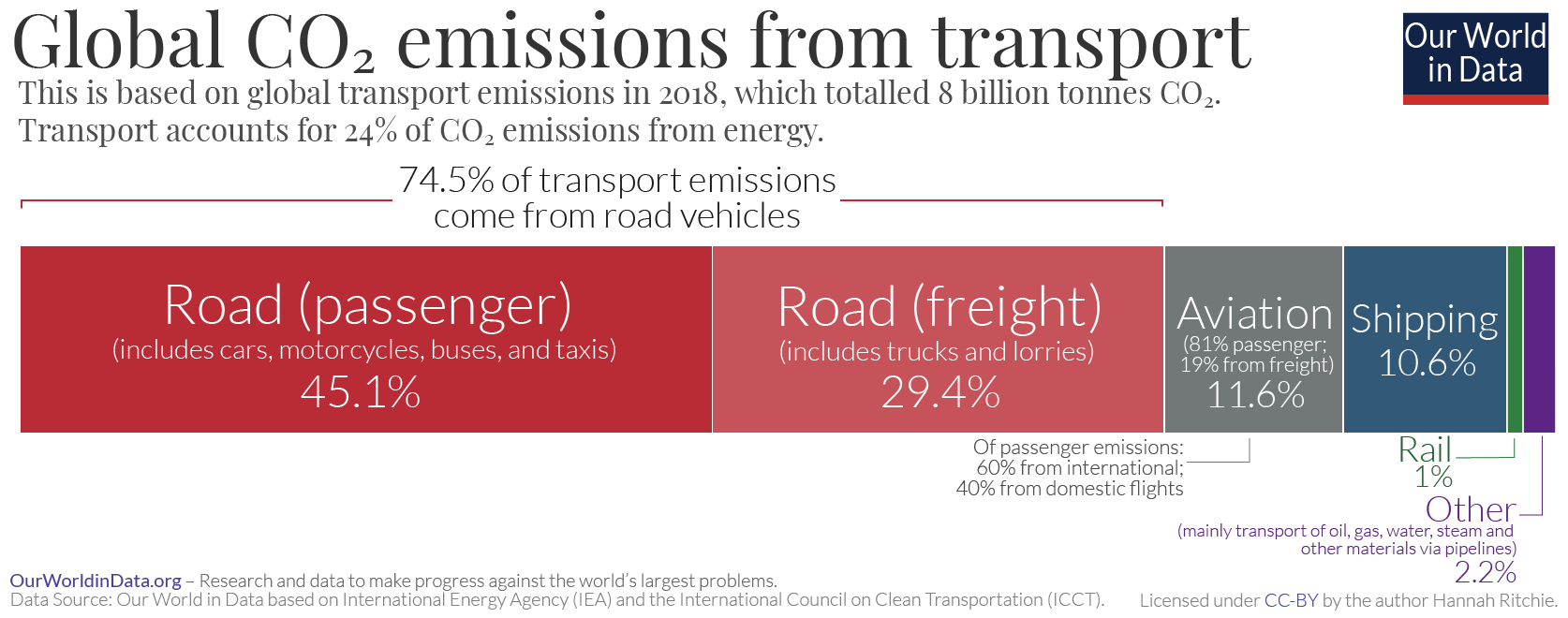
[Our World In Data](https://ourworldindata.org/co2-emissions-from-transport)
[IEA](https://www.iea.org/data-and-statistics/?country=WORLD&fuel=CO2%20emissions&indicator=TotCO2)
# Car Manufacturing Life Cycle Assessment
By integrating [LCA](/posts/life-cycle-assessment/) into their practices, big automotive brands aim to enhance the environmental performance of their vehicles, meet regulatory requirements, and respond to consumer demands for more sustainable and eco-friendly transportation options. It also helps them demonstrate their commitment to environmental responsibility and contribute to the broader goal of mitigating climate change and promoting sustainable mobility.
## Audi
By 2025, production at all Audi locations is to become carbon-neutral, while plants in Brussels and Győr already successfully converted.
[Life cycle Analysis](https://www.audi-mediacenter.com/en/lifecycle-analysis-14683)
[Production at Audi's Brussels site has been completely CO₂-neutral since early 2018.](https://www.audi.com/en/company/sustainability/core-topics/value-creation-and-production/brussels.html)
[Audi on the road toward CO2-neutral production sites](https://www.audi-mediacenter.com/en/press-releases/audi-on-the-road-toward-co2-neutral-production-sites-13356)
[Life cycle assessment: the entire life of a car in view](https://www.audi.com/en/company/sustainability/life-cycle-assessment.html)
## Fisker
>Fisker starts with the full LCA in mind, seeking methods to onnovate and improve the environmental impact of their vehicles. The LCA works as a microscope, providing clear vision into the details of the production cycle.
[Fisker Ocean Has the Lowest Published Carbon Footprint of Any Electric SUV](https://investors.fiskerinc.com/news/news-details/2023/Fisker-Publishes-Life-Cycle-Assessment-Report-LCA-and-Announces-the-Fisker-Ocean-Has-the-Lowest-Published-Carbon-Footprint-of-Any-Electric-SUV/default.aspx)
[Fisker Ocean LCA 2023](https://img.fiskerinc.com/image/upload/v1688083640/web%203.0/CMS%20content/PDF/Life_Cycle_Assessment_Report_2023_oyuzvt.pdf)
## Polestar
>All the Polestar 2 (2020) variants have a lower cradle-to-grave carbon footprint, compared to Volvo XC40 ICE.
[Carbon footprint of Polsetar 2 variants](https://www.polestar.com/global/news/lca-report-polestar-2-versions/)([PDF](https://www.polestar.com/dato-assets/11286/1630409045-polestarlcarapportprintkorr11210831.pdf))
>_Three tonnes in three years. That’s Polestar 2's total carbon weight loss (MY2024). In case you're wondering how we ended up with that number – and why you should care about a brand's sustainability calculations – you're in the right place._
[LCA reports 2023: Like I'm five](https://www.polestar.com/hk/news/lca-reports-like-i-m-five/)
[Sustainability Glossary](https://www.polestar.cn/global/sustainability/glossary/)
## Renault: Zoe vs Clio (2012)
Renault created an LCA back in 2012 when first introducing the Zoe, with a lifespan of 10 years and 150.000km.
[2012 Renault Zoe LCA report](https://gronamobilister.se/wp-content/uploads/2019/09/Renault_ZOE_LCA_Report_2012.pdf)
[2020 Univarsal Registration Document](https://www.renaultgroup.com/en/2020-Universal-Registration-Document/150/)
[Climate Report 2021](https://renaultgroup.publispeak.com/climate-report-2021/article/1/)
## Tesla 2021 Impact report
>Tesla’s purpose is to accelerate the world’s transition to sustainable energy and have a positive impact on the world.
[Tesla 2021 Impact report](https://www.tesla.com/ns_videos/2021-tesla-impact-report.pdf)
## Volvo
This report covers the Carbon Footprints of the fully electric XC40 Recharge and an XC40 with an internal combustion engine (ICE) for comparison, performed according to ISO 14044:2006 standards.
[Battery electric XC40 Recharge and the XC40 ICE](https://www.volvocars.com/images/v/-/media/applications/pdpspecificationpage/my24/xc40-electric/pdp/volvo-cars-LCA-report-xc40.pdf)
>The C40 Recharge has approximately 5 per cent lower total carbon footprint than XC40 Recharge ... which is mainly because of better aerodynamic properties.
[Volvo C40 Recharge](https://www.volvocars.com/images/v/-/media/Market-Assets/INTL/Applications/DotCom/PDF/C40/Volvo-C40-Recharge-LCA-report.pdf)
>The all-electric Volvo EX30 is designed to have the lowest carbon footprint of any Volvo car to date
A car is not just driven, it is also [designed, developed, built and transported](https://www.volvocars.com/mt/news/sustainability/the-all-electric-Volvo-EX30/).
## GreenNCAP
>Green NCAP is an independent initiative which promotes the development of cars which are clean, energy efficient and cause as little harm to the environment as possible.
Green NCAP is hosted and supported by the European New Car Assessment Programme (Euro NCAP), the leading authority on car safety in Europe. Euro NCAP has been testing and rating cars for over 20 years and has helped to save over 78,000 lives. Green NCAP is a natural extension of Euro NCAP’s work and is a logical next step in the development of consumer information.
>Green NCAP uses a broad range of tests to address the flaws in approval tests and, through consumer information, rewards those manufacturers whose vehicles go beyond the minimum requirements and offer excellent, robust, real-world performance. Regulatory testing is a good starting point. Green NCAP’s tests are an addition and complementary to these legislative requirements.
https://www.greenncap.com
## Life cycle assessment of long life lithium electrode for electric vehicle batteries
This report contains a comparative life cycle assessment of several different lithium batteries (only). It is a very detailed report, but it does not include the manufacturing of the car itself.
[Leaf, Tesla and Volvo bus batteries - PDF](https://www.diva-portal.org/smash/get/diva2:1131667/FULLTEXT01.pdf)
## Life cycle-based sustainability standards and guidelines
An overview of the best-known standards and guidelines for the product level, the organization level, or both.
> ISO 14040 describes the "principles and framework for LCA", while the ISO 14044 "specifies requirements and provides guidelines" for LCA. ISO 14067 "specifies principles, requirements and guidelines for the quantification and reporting of the carbon footprint of a product" — that is, its impact on climate change
[ISO 140XX](https://pre-sustainability.com/articles/lca-standards-and-guidelines)
>The Product Life Cycle Accounting and Reporting Standard can be used to understand the full life cycle emissions of a product and focus efforts on the greatest GHG reduction opportunities.
[Product Life Cycle Accounting and Reporting Standard](https://ghgprotocol.org/product-standard)
## Are electric vehicles definitely better for the climate than gas-powered cars?
>It's difficult to find a comparison in which EVs fare worse than internal combustion.
[Yes](https://climate.mit.edu/ask-mit/are-electric-vehicles-definitely-better-climate-gas-powered-cars) (MIT)
## How much CO2 is emitted by manufacturing batteries?
>When it comes to clean technologies like electric cars and solar power, even the dirtiest batteries emit less CO2 than using no battery at all
[15T of CO2 per 1T of mined lithium](https://climate.mit.edu/ask-mit/how-much-co2-emitted-manufacturing-batteries#:~:text=Particularly%20in%20hard%20rock%20mining,are%20emitted%20into%20the%20air.) (MIT)
EPA - The greenhouse gas emissions associated with an electric vehicle over its lifetime are typically lower than those from an average gasoline-powered vehicle, [even when accounting for manufacturing](https://www.epa.gov/greenvehicles/electric-vehicle-myths#Myth2) based of GREET 2 2021 (Argonne National Laboratory).
[END OF CONTENT]
*************************************
## [POST TITLE]: April 2023
[POST LINK]: [https://electricvehicle.life/news/2023/2023-04-april/](https://electricvehicle.life/news/2023/2023-04-april/)
[POST DATE]: 2023-04-29
[START OF CONTENT]
[END OF CONTENT]
*************************************
## [POST TITLE]: LCA Life Cycle Assessment to promote sustainable practices and foster eco-friendly decision-making
[POST LINK]: [https://electricvehicle.life/posts/life-cycle-assessment/](https://electricvehicle.life/posts/life-cycle-assessment/)
[POST DATE]: 2023-04-21
[START OF CONTENT]
# Life Cycle Assessment
"Life Cycle Assessment" is a comprehensive methodology used to assess the environmental impacts associated with a product, process, or activity throughout its entire life cycle, from raw material extraction, production, and use, to its disposal or recycling. The purpose of conducting an LCA is to quantify and evaluate the environmental burdens and potential sustainability improvements of a particular system, enabling informed decision-making to minimize environmental impacts and optimize resource use.
Life Cycle Assessment considers various aspects such as energy consumption, greenhouse gas emissions, water usage, air pollution, waste generation, and resource depletion. It provides valuable insights into the environmental performance of different products or processes, helping businesses and policymakers identify areas for improvement and make more environmentally sustainable choices.
LCA is widely used in industries, environmental impact assessments, and sustainability evaluations to promote sustainable practices and foster eco-friendly decision-making.
## Life Cycle Assessment Methodology
Many big automotive brands have integrated Life Cycle Assessment (LCA) into their sustainability strategies and product development processes. The LCA methodology used by these brands typically follows a systematic approach to evaluate the environmental impacts of their vehicles throughout their entire life cycle. Here is an overview of how big automotive brands typically use LCA:
1. Scope Definition: Automotive brands define the scope of the assessment, specifying the vehicle model, its components, and the specific life cycle stages to be considered, from raw material extraction to end-of-life disposal or recycling.
2. Goal and Scope Definition: Clear goals are set for the LCA study, such as assessing the vehicle's carbon footprint, water usage, and other environmental impacts. The scope includes functional units, e.g., distance driven, which serves as a reference for comparing different vehicle models.
3. Data Collection: Data is collected from various sources, including suppliers, manufacturing facilities, and third-party databases. Information on material inputs, energy consumption, emissions, and waste generation is gathered for each life cycle stage.
4. Life Cycle Inventory (LCI): All collected data is organized and compiled into a Life Cycle Inventory, providing a detailed account of the inputs and outputs for each stage of the vehicle's life cycle.
5. Impact Assessment: This stage involves evaluating the potential environmental impacts of the vehicle based on the LCI data. Impact categories may include greenhouse gas emissions, acidification, eutrophication, human toxicity, and others.
6. Interpretation: The results of the impact assessment are interpreted, providing insights into the hotspots or stages with the most significant environmental impacts. Brands identify areas for improvement and potential strategies to reduce overall environmental burdens.
7. Improvements and Optimization: Based on the LCA findings, automotive brands implement design and process improvements to minimize the environmental impacts of their vehicles. This may include using more sustainable materials, increasing vehicle recyclability, and reducing energy consumption during manufacturing.
8. Communication and Reporting: Transparent communication of LCA results is essential for building consumer trust and showcasing the brand's commitment to sustainability. Brands often publish environmental reports that highlight the LCA findings and progress toward sustainability goals.
9. Continuous Monitoring: Automotive brands may perform regular updates and re-evaluations of the LCA to ensure that their sustainability efforts are on track and to identify new areas for improvement as technology and supply chain evolve.
By integrating LCA into their practices, big automotive brands aim to enhance the environmental performance of their vehicles, meet regulatory requirements, and respond to consumer demands for more sustainable and eco-friendly transportation options. It also helps them demonstrate their commitment to environmental responsibility and contribute to the broader goal of mitigating climate change and promoting sustainable mobility.
## LCA Types
Life Cycle Assessment (LCA) can take various forms, depending on the specific focus and objectives of the assessment. Some of the different types of LCA include:
1. Attributional LCA: This is the most common type of LCA and focuses on assessing the environmental impacts of a product or system as it is currently produced and used. It provides a snapshot of the current situation and is often used for comparison and decision-making.
2. Consequential LCA: Unlike attributional LCA, consequential LCA takes into account the potential changes in the system under study and the associated impacts. It considers the broader effects of decisions and actions, such as changes in consumer behavior or market dynamics.
3. Comparative LCA: This type of LCA involves comparing two or more alternative products, processes, or technologies with the same functional unit. It helps identify the option with the least environmental impact.
4. Cradle-to-Gate LCA: This LCA type focuses on evaluating the environmental impacts of a product or system from raw material extraction (cradle) to the point of leaving the factory gate (gate). It does not consider the product's use and end-of-life phases.
5. Cradle-to-Grave LCA: In contrast to Cradle-to-Gate, Cradle-to-Grave LCA examines the entire life cycle of a product, including its use phase and end-of-life treatment, such as recycling or disposal.
6. Well-to-Wheel LCA: A specialized methodology used to evaluate the total environmental impacts associated with a specific energy source or fuel throughout its entire life cycle, from its production (well) to its end-use in vehicles (wheel).
7. Input-Output LCA (IO-LCA): IO-LCA assesses the environmental impacts of an economy or sector by analyzing the interrelations between different industries and sectors. It evaluates the upstream and downstream impacts of a product or service across the entire economy.
8. Sectoral LCA: This type of LCA focuses on assessing the environmental performance of a specific industrial sector or group of related products. It helps identify areas of improvement within a particular industry.
9. Social LCA (SLCA): SLCA complements environmental LCA by evaluating the social and socioeconomic impacts of a product or system. It considers factors such as human rights, labor conditions, and community well-being.
10 . Hybrid LCA: Hybrid LCA combines elements of both attributional and consequential LCA. It accounts for the existing system's impacts (attributional) while considering potential changes and interventions (consequential).
Each type of LCA has its strengths and limitations, and the choice of LCA type depends on the specific objectives, available data, and the context in which the assessment is conducted. By selecting the appropriate LCA type, decision-makers can gain valuable insights to promote more sustainable practices and products.
## Well-to-wheel
Well-to-Wheel (WTW) Life Cycle Assessment (LCA) is a specialized methodology used to evaluate the total environmental impacts associated with a specific energy source or fuel throughout its entire life cycle, from its production (well) to its end-use in vehicles (wheel). It is commonly applied to assess the environmental performance of different transportation fuels, including fossil fuels and alternative energy sources, considering all stages of their life cycles.
Key aspects of Well-to-Wheel LCA include:
1. Comprehensive Scope: WTW LCA encompasses all stages of the fuel's life cycle, starting from the extraction or production of the primary energy source (e.g., crude oil, natural gas, biomass) to the point of consumption in vehicles.
2. Energy Input and Emissions: The assessment considers energy inputs, greenhouse gas emissions, and other pollutants associated with each stage of the fuel's life cycle, including extraction, refining, transportation, distribution, and combustion.
3. System Boundary: WTW LCA typically defines a clear system boundary that includes all relevant stages from well (production) to wheel (end-use), ensuring a comprehensive evaluation of the fuel's environmental impacts.
4. Specific Vehicle Technologies: The assessment takes into account the specific energy efficiency and emissions characteristics of different vehicle technologies that use the fuel, such as internal combustion engines, hybrid vehicles, and electric vehicles.
5. Comparing Different Fuels: WTW LCA enables the comparison of various transportation fuels, allowing policymakers, researchers, and industry stakeholders to make informed decisions about the most environmentally friendly and sustainable options.
6. Consideration of Regional Differences: WTW LCA acknowledges that the environmental impacts of a fuel can vary based on regional factors, such as energy sources used for electricity generation and transportation infrastructure.
7. Policy Implications: WTW LCA results provide valuable insights for policymakers in shaping regulations, incentives, and strategies to promote cleaner and more sustainable transportation options.
8. Technological Advances: As technologies and energy sources evolve, WTW LCA can be updated to reflect these changes and provide up-to-date information on the environmental performance of different fuels and vehicle technologies.
WTW LCA is a crucial tool for understanding the overall environmental impacts of transportation fuels and supporting efforts to reduce the carbon footprint of the transportation sector. By providing a comprehensive picture of the entire life cycle, WTW LCA helps drive the development and adoption of more sustainable and efficient transportation systems.
## LCA different tiers of analysis
Life Cycle Assessment (LCA) typically involves different tiers of analysis, each with varying levels of detail and data accuracy:
### Tier 1:
- Characteristics: Tier 1 is a screening-level assessment that uses simplified and generic data to estimate environmental impacts. It provides a broad overview of a product or system's life cycle.
- Data: Generic or average data is used for material inputs, energy consumption, and emissions.
- Scope: It covers the entire life cycle, but the level of detail is limited.
- Speed: Tier 1 is relatively quick and cost-effective to perform.
- Accuracy: The results are less accurate due to the use of generic data and assumptions.
- Use: Tier 1 is useful for initial screenings, identifying hotspots, and making quick decisions.
### Tier 2:
- Characteristics: Tier 2 is a more detailed assessment than Tier 1, using more specific data and assumptions.
- Data: Specific data from various sources, including industry databases and expert knowledge, is utilized.
- Scope: It covers the entire life cycle, with more detailed information for each stage.
- Speed: Tier 2 requires more time and resources than Tier 1 but is still more efficient than Tier 3.
- Accuracy: The results are more accurate than Tier 1 due to better data quality and specificity.
- Use: Tier 2 is used to refine results from Tier 1, perform sensitivity analysis, and support decision-making.
### Tier 3:
- Characteristics: Tier 3 is a comprehensive and detailed assessment, often considered the most accurate and exhaustive level of analysis in LCA.
- Data: Specific, site-specific, and process-specific data is collected, involving extensive data gathering efforts.
- Scope: It covers the entire life cycle with highly detailed information for each process and component.
- Speed: Tier 3 is time-consuming and resource-intensive, requiring substantial efforts for data collection and analysis.
- Accuracy: The results are the most accurate among all tiers due to precise and detailed data inputs.
- Use: Tier 3 is used for in-depth analysis, complex decision-making, and to support certification or regulatory compliance.
In summary, Tier 1 is a quick and simple screening-level assessment, Tier 2 adds more detail and specificity, and Tier 3 involves the most comprehensive and accurate analysis. Each tier serves a specific purpose in LCA, allowing for a step-by-step approach to understand and evaluate the environmental impacts of products or systems at increasing levels of detail and accuracy.
## Boundary critique within systems thinking
The boundary critique is a fundamental concept within systems thinking and is particularly relevant in the context of Life Cycle Assessment (LCA). It challenges the notion of fixed boundaries in analyzing complex systems and encourages a more holistic and context-specific understanding of the system being studied.
In relation to LCA, the boundary critique can be understood as follows:
1. Fixed Boundaries in LCA: Traditional LCA often defines fixed system boundaries that encompass all life cycle stages of a product or process, from cradle to grave (Cradle-to-Grave LCA) or from raw material extraction to the factory gate (Cradle-to-Gate LCA). These boundaries are necessary to limit the scope of analysis and make the assessment feasible.
2. Overlooking Interconnections: The fixed boundaries in LCA might overlook important interconnections and feedback loops between the system being studied and its surrounding environment. This can lead to unintended consequences or missed opportunities for environmental improvements.
3. Incomplete Picture: By having fixed boundaries, LCA may fail to consider all relevant aspects and stakeholders involved in a product's life cycle, leading to an incomplete picture of its true environmental impacts.
4. Context Matters: Different products and systems have unique characteristics and interactions with their surrounding environment. The boundary critique emphasizes that context matters, and the boundaries should be flexible, context-specific, and adapt to the specific goals and requirements of the assessment.
5. Systemic Effects: The boundary critique highlights that the impacts of a product or process extend beyond the defined boundaries and can have systemic effects on other systems, both upstream and downstream in the supply chain.
6. Scalability and Modularity: The boundary critique suggests that LCA can be more effective by adopting a scalable and modular approach, where the boundaries can be expanded or contracted depending on the scope and objectives of the assessment.
7. Stakeholder Involvement: Embracing the boundary critique encourages involving relevant stakeholders in the decision-making process of defining system boundaries. This helps ensure a more inclusive and comprehensive analysis.
The boundary critique challenges the traditional fixed boundaries in LCA and emphasizes the importance of adopting a more flexible, context-specific, and holistic approach to systems thinking. By considering a broader and interconnected view, LCA can provide more meaningful insights and support sustainable decision-making that accounts for the complex relationships between products, processes, and their environmental impacts.
## ISO Standards
There are several ISO standards related to Life Cycle Assessment (LCA). Each standard addresses specific aspects of LCA, providing guidelines, requirements, and methodologies to ensure consistency, transparency, and accuracy in LCA studies. Here are some key ISO standards related to LCA:
1. ISO 14040:2006 - Environmental management - Life cycle assessment - Principles and framework:
This standard establishes the principles and framework for conducting LCA studies. It outlines the four main phases of LCA: goal and scope definition, life cycle inventory analysis (LCI), life cycle impact assessment (LCIA), and interpretation. ISO 14040 provides general guidance on the application of LCA and emphasizes the importance of transparency, data quality, and critical review.
2. ISO 14044:2006 - Environmental management - Life cycle assessment - Requirements and guidelines:
Building on ISO 14040, this standard provides more detailed requirements and guidelines for the technical implementation of LCA studies. It covers data collection, data quality assurance, data allocation, and reporting. ISO 14044 ensures the consistency and reliability of LCA results by specifying best practices for conducting the various phases of LCA.
3. ISO/TS 14048:2002 - Environmental management - Life cycle assessment - Data documentation format:
This technical specification addresses the format and content of documentation for data used in LCA studies. It provides guidelines for reporting data in a consistent and standardized manner to enhance the transparency and reproducibility of LCA results.
4. ISO 14046:2014 - Environmental management - Water footprint - Principles, requirements, and guidelines:
While not specific to LCA, ISO 14046 complements LCA by providing principles and guidelines for assessing and reporting the water footprint of products, processes, and organizations. It considers the impacts of water use throughout the entire life cycle.
5. ISO 14047:2019 - Environmental management - Life cycle assessment - Illustrative examples on how to apply ISO 14044 to goal and scope definition and inventory analysis:
This standard provides illustrative examples of how to apply the principles and requirements of ISO 14044 to specific aspects of LCA, such as goal and scope definition and life cycle inventory analysis. It serves as a practical guide for LCA practitioners.
6. ISO/TR 14049:2012 - Environmental management - Life cycle assessment - Illustrative examples on how to apply ISO 14044 to impact assessment and interpretation:
Similar to ISO 14047, this standard offers illustrative examples of applying ISO 14044 to impact assessment and interpretation phases of LCA, helping users better understand and implement these stages.
These ISO standards collectively support the application of Life Cycle Assessment in various industries and sectors. They promote transparency, data quality, and consistent methodologies, making LCA a valuable tool for evaluating the environmental impacts of products, processes, and systems and supporting informed decision-making towards sustainability.
https://en.wikipedia.org/wiki/Life-cycle_assessment
[END OF CONTENT]
*************************************
## [POST TITLE]: March 2023
[POST LINK]: [https://electricvehicle.life/news/2023/2023-03-march/](https://electricvehicle.life/news/2023/2023-03-march/)
[POST DATE]: 2023-03-29
[START OF CONTENT]
[END OF CONTENT]
*************************************
## [POST TITLE]: Fully Charged Live Sydney
[POST LINK]: [https://electricvehicle.life/posts/fully-charged-live-sydney/](https://electricvehicle.life/posts/fully-charged-live-sydney/)
[POST DATE]: 2023-03-11
[START OF CONTENT]
# Event Photography
I contacted the crew and I voluntered for the Fully Charged Live Sydney show, on this weekend.
Met Robert and Jack, working along the rest of the crew.
They took a chance on me, and I'm grateful for the opportunity.
They were pretty happy with the results, which seemed to have exceeded their expectations :-)
Check out the [**Flickr album**](https://www.flickr.com/photos/halans/albums/72177720306683388).
{{/* < video library="1" sre="EverythingElectricAU.mp4" controls="yes" > */}}
[END OF CONTENT]
*************************************
## [POST TITLE]: February 2023
[POST LINK]: [https://electricvehicle.life/news/2023/2023-02-february/](https://electricvehicle.life/news/2023/2023-02-february/)
[POST DATE]: 2023-02-28
[START OF CONTENT]
[END OF CONTENT]
*************************************
## [POST TITLE]: AI EV FAQs
[POST LINK]: [https://electricvehicle.life/posts/ai-ev-faqs/](https://electricvehicle.life/posts/ai-ev-faqs/)
[POST DATE]: 2023-02-25
[START OF CONTENT]
After updating [Social Recommendator](https://ai.socialrecommendator.com) with the OpenAI API, it was too easy not apply this to some more use cases.
Introducing [Ask AI About EVs](https://ai.electricvehicle.life), get quick answers to your EV questions with AI.
Things you never knew AI knew, about EVs.
With Disclaimer.
>Surprises and mistakes are possible.
So check the facts, yes?
[END OF CONTENT]
*************************************
## [POST TITLE]: The Early History of the EVs
[POST LINK]: [https://electricvehicle.life/posts/ev-early-history/](https://electricvehicle.life/posts/ev-early-history/)
[POST DATE]: 2023-02-22
[START OF CONTENT]
# The Early History of the Electric Vehicle: A Journey from 1832 to 1899
The electric vehicle (EV), often seen as a contemporary innovation, actually boasts a rich history that intertwines with the very roots of automotive engineering. This narrative stretches back to the early 19th century, a period characterized by groundbreaking discoveries and the birth of what would become a major technological force in the modern era.
## The Dawn of the Electric Car Era
**1832: Robert Anderson's Crude Electric Carriage**
In 1832, Scottish inventor [Robert Anderson](https://web.archive.org/web/20120621030141/https://www.gm.ca/inm/gmcanada/english/about/OverviewHist/hist_auto.html) embarked on a revolutionary project: creating a carriage powered by electricity. Although primitive by today's standards, Anderson's creation represented a significant leap in transportation technology. His electric carriage, which used non-rechargeable power cells, was the first known instance of an electric vehicle. This innovation set the stage for future developments in electric transportation, highlighting the potential of this new form of mobility.
**1842: Practical Electric Road Vehicle**
A decade after Anderson's attempt, another milestone was achieved in 1842 with the introduction of a more practical electric road vehicle. This design incorporated the era's newly-invented, non-rechargeable electric cells. This development represented a crucial step towards making electric vehicles more practical and user-friendly, showcasing the potential for electrically powered transportation on public roads.
**1859: The Lead Acid Battery**
The evolution of EVs received a significant boost with the invention of the lead-acid battery in 1859 by French physicist [Gaston Planté](https://www.britannica.com/biography/Gaston-Plante). This was the first rechargeable battery, offering a more sustainable and long-lasting power source for electric vehicles. The lead-acid battery's durability and rechargeability solved one of the significant challenges facing early EVs, enabling longer travel distances and more reliable performance.
## Innovation & Commercialization
**1884: Thomas Parker's Practical Production Electric Car**
In 1884, a significant breakthrough came with [Thomas Parker](https://madeupinbritain.uk/Electric_Car), who constructed the first practical production electric car. [Parker](https://fullcharger.com/thomas-parker/who-is-thomas-parker), motivated by a desire to improve fuel efficiency, utilized the newly developed rechargeable batteries in his design. His electric car was not just a prototype but a practical vehicle that could be used daily. Parker's work demonstrated the commercial feasibility of electric vehicles and opened the door for mass production.
**1897: New York City's Commercial EV Fleet of Taxis**
The commercial potential of electric vehicles took center stage in 1897 when New York City introduced its first commercial [EV fleet of taxis](https://blog.upsbatterycenter.com/arrival-of-electric-taxis-new-york-1897/). This marked a pivotal moment in the history of electric vehicles, showcasing their utility in an urban environment. The electric taxis offered a quieter, cleaner alternative to the petrol-powered vehicles of the time, gaining popularity among city dwellers and setting a precedent for future urban transportation solutions.
**1899: La Jamais Contente's Land Speed Record**
The performance capabilities of electric vehicles were dramatically highlighted in 1899 when "[La Jamais Contente](https://en.wikipedia.org/wiki/La_Jamais_Contente)," a Belgian-built electric racing car, broke the land speed record by reaching 106 Km/h. This event was monumental in changing public perceptions of electric vehicles. Far from being slow and cumbersome, "La Jamais Contente" demonstrated that electric vehicles could achieve speeds comparable to, if not surpassing, their gasoline counterparts.
## Foundation
The early history of the electric vehicle is a tapestry of innovation, vision, and groundbreaking achievements. From Anderson's pioneering electric carriage to the record-breaking speed of "La Jamais Contente," these early developments laid a solid foundation for today's EVs. As we advance towards a future dominated by sustainable transportation, it's essential to acknowledge and appreciate these early milestones that shaped the journey of the electric vehicle, steering us towards a cleaner, more efficient future.
## Sydney Powerhouse Museum
Detroit Electric car: brougham body, 80 volt, 10 hp, metal, upholstery, glass
Anderson Electric Car Co, Detroit, Michigan, United States of America, 1917
Used by Arthur and Denis Allen, Australia, 1917-47
Gift of Mr Denis Allen 1947. Powerhouse Object No. B1057-1
---
## References
https://en.wikipedia.org/wiki/History_of_the_electric_vehicle
https://www.energy.gov/articles/history-electric-car
https://edisontechcenter.org/ElectricCars.html
https://www.macklinmotors.co.uk/ev-timeline/#:~:text=1832%2D1839,used%20to%20generate%20the%20electricity
https://www.theguardian.com/technology/2021/aug/03/lost-history-electric-car-future-transport
[END OF CONTENT]
*************************************
## [POST TITLE]: January 2023
[POST LINK]: [https://electricvehicle.life/news/2023/2023-01-january/](https://electricvehicle.life/news/2023/2023-01-january/)
[POST DATE]: 2023-01-29
[START OF CONTENT]
[END OF CONTENT]
*************************************
## [POST TITLE]: December 2022
[POST LINK]: [https://electricvehicle.life/news/2022/2022-12-december/](https://electricvehicle.life/news/2022/2022-12-december/)
[POST DATE]: 2022-12-29
[START OF CONTENT]
[END OF CONTENT]
*************************************
## [POST TITLE]: Pole EV Charger
[POST LINK]: [https://electricvehicle.life/posts/evx-power-pole-charger/](https://electricvehicle.life/posts/evx-power-pole-charger/)
[POST DATE]: 2022-12-26
[START OF CONTENT]
# Powerpole charging
Last week [Ausgrid](https://www.ausgrid.com.au/About-Us/News/Pole-mounted-EV-charger), EVX and the Newcastle city council opened up their first power pole mounted 11kWh EV charger at Dixon Park beach, with an
aim to deliver up to 30.000 pole mounted EV chargers across the Ausgrid network by 2029.
(which means Ausgrid would be installing 13 chargers each day for the next 6 years...)
> These pole-mounted chargers will help to address EV accessibility by providing
> chargers for people without home systems, and those traveling outside of their local areas.
> Ausgrid CEO, Richard Gross.
Dixon Park beach is a great first location, and I'd love to see each beach side community get some of these (wink wink Bateau Bay, Long Jetty, The Entrance, Central Coast).
You do need to download EVX app to activate the charger.
Charging costs $0.50 per kWh flat rate.
### Thoughts :zap:
Can the community have a say in where we'd like to see these pole mounted chargers? > YES
Submit here: https://evx.tech/polecharger-request-form/
Potential trip hazard with cables laying around the ground?
$0.50 per kWh is a lot for a slow 11kWh charge. Will there be different tiers, time-of-day pricing with cheaper options? Cheaper overnight charging for locals, premium daytime charging for visitors? Cheaper prepaid plans?
No mention of any idle fees.
Yet another app. Often these apps forget about your payment details everytime an app update happens. Then you open the app, and you can't charge as you need to provide your CC details again. Let us just pay with contactless, just tap and be done with like at the petrol station.
[END OF CONTENT]
*************************************
## [POST TITLE]: bp pulse
[POST LINK]: [https://electricvehicle.life/posts/bp-pulse/](https://electricvehicle.life/posts/bp-pulse/)
[POST DATE]: 2022-12-19
[START OF CONTENT]
### A single bp pulse charger at the local bp station opened earlier this month
Surprised by the bp (British ~~Petroleum~~/Power) email newsletter listing a bp pulse EV charger at bp Tumbi Umbi on the Central Coast.
One of three bp pulse chargers in NSW at this time!
It has a single CCS2 and a single CHAdeMO plug (75kW), available 24/7.
There's a McDonalds and Hungry Jacks across the road, as well as an Oporto at a Shell station.
It's good to finally see some non-Tesla options available on the Central Coast.
Still need plenty more...
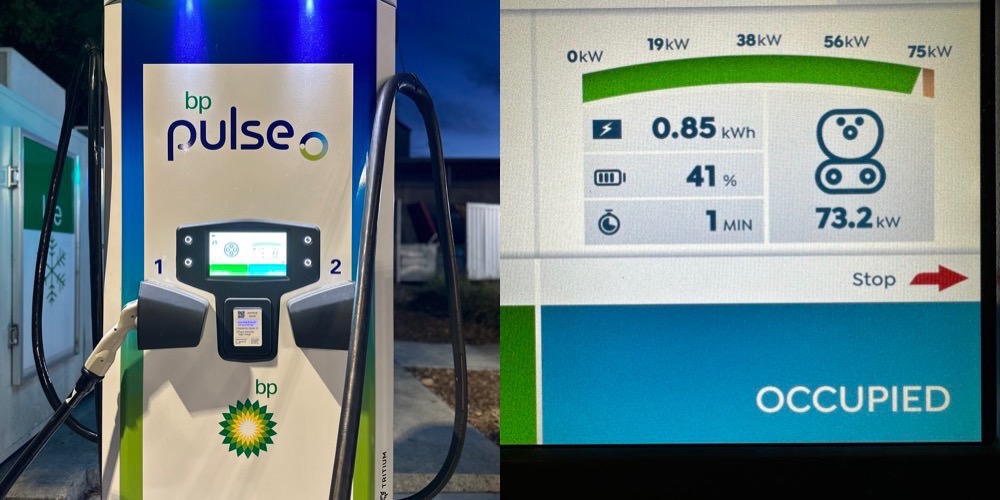
**EDIT 2025**: A new bp pulse charging station at 481 Pacific Hwy, Wyoming NSW 2250 (next to Aldi!), with one 300kW charging unit to service two bays and two 150kW charging units to service four more bays."
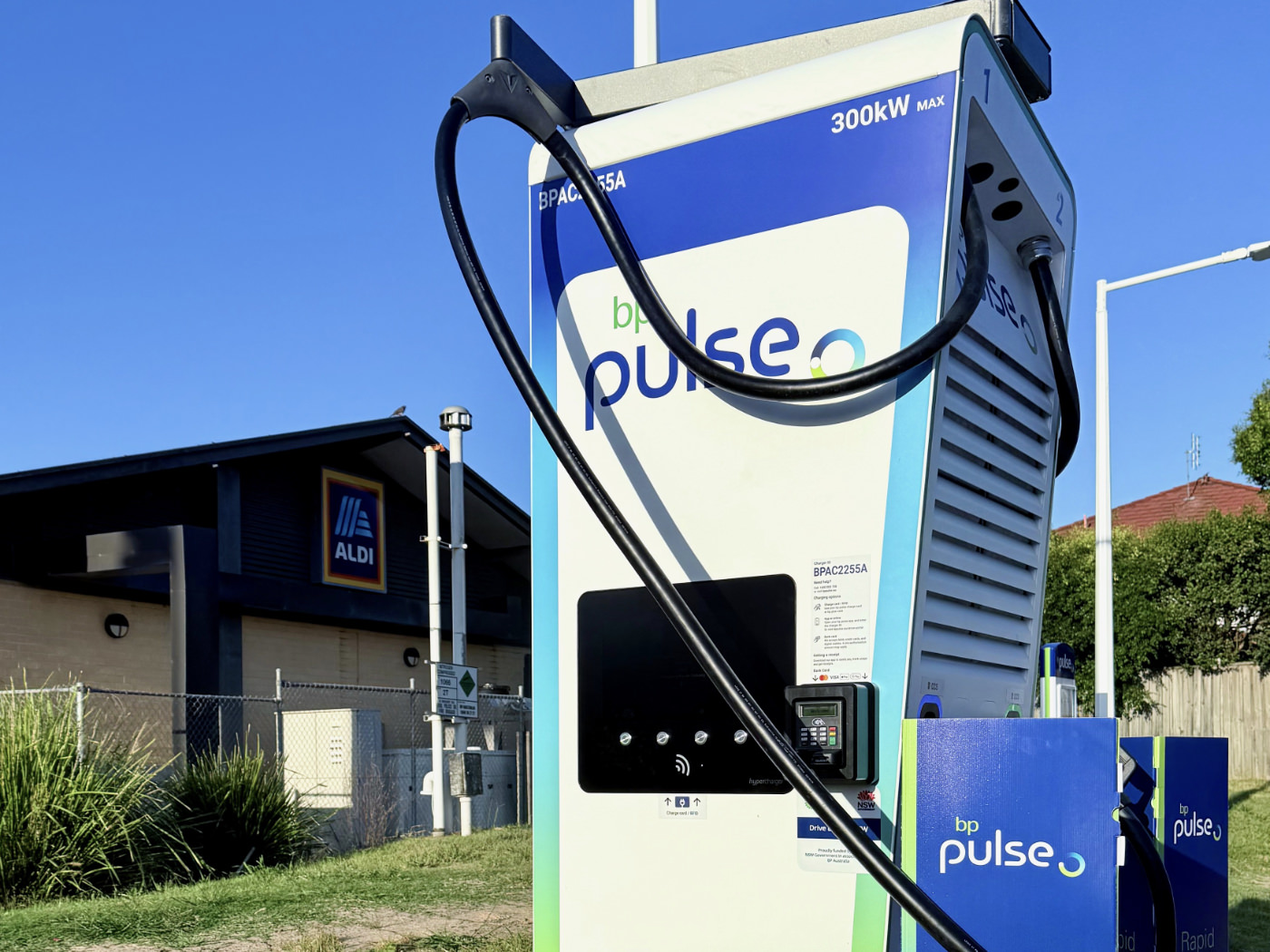
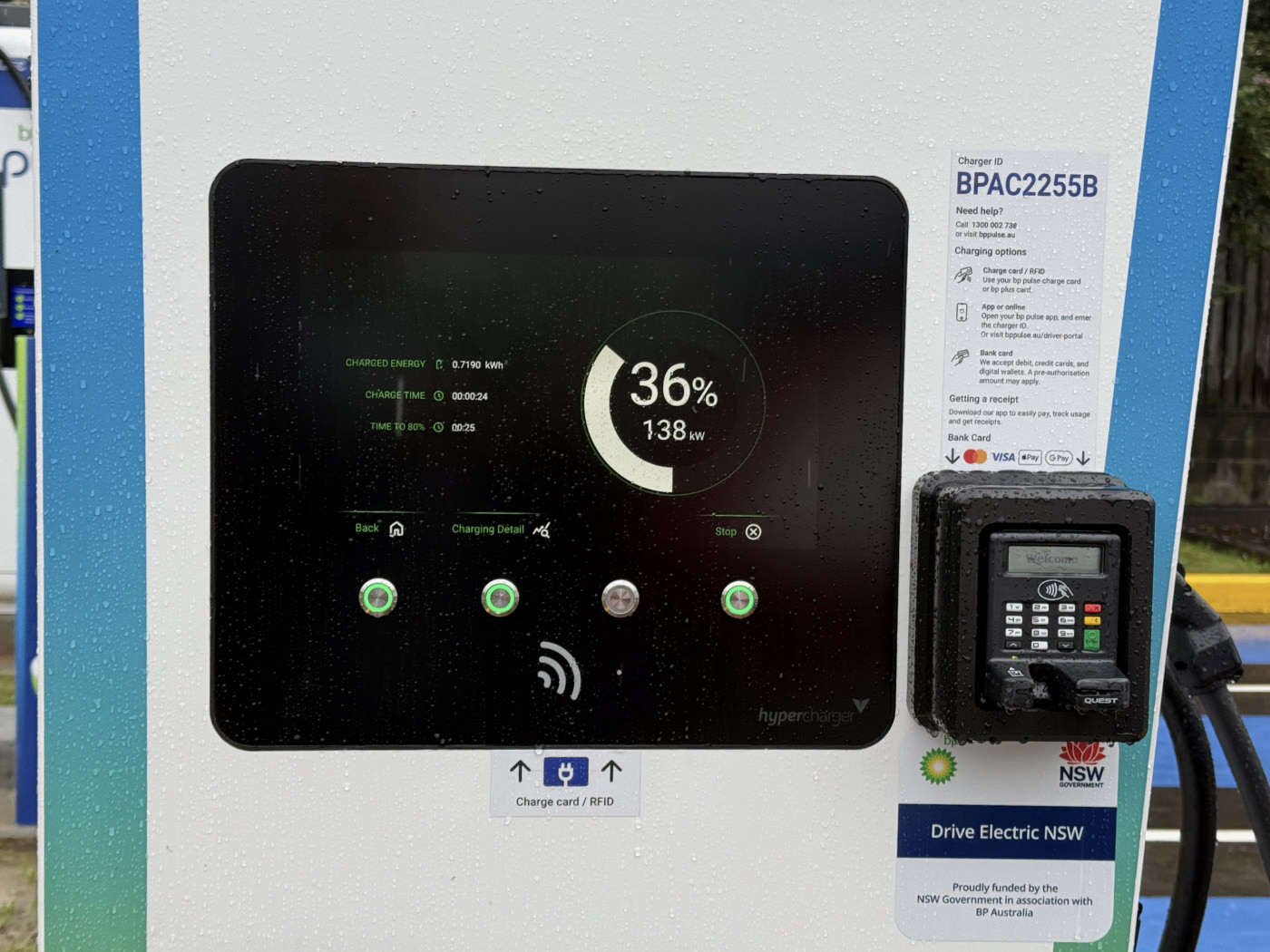
Tap and Pay!
[END OF CONTENT]
*************************************
## [POST TITLE]: November 2022
[POST LINK]: [https://electricvehicle.life/news/2022/2022-11-november/](https://electricvehicle.life/news/2022/2022-11-november/)
[POST DATE]: 2022-11-29
[START OF CONTENT]
[END OF CONTENT]
*************************************
## [POST TITLE]: October 2022
[POST LINK]: [https://electricvehicle.life/news/2022/2022-10-october/](https://electricvehicle.life/news/2022/2022-10-october/)
[POST DATE]: 2022-10-29
[START OF CONTENT]
[END OF CONTENT]
*************************************
## [POST TITLE]: September 2022
[POST LINK]: [https://electricvehicle.life/news/2022/2022-09-september/](https://electricvehicle.life/news/2022/2022-09-september/)
[POST DATE]: 2022-09-29
[START OF CONTENT]
[END OF CONTENT]
*************************************
## [POST TITLE]: August 2022
[POST LINK]: [https://electricvehicle.life/news/2022/2022-08-august/](https://electricvehicle.life/news/2022/2022-08-august/)
[POST DATE]: 2022-08-29
[START OF CONTENT]
[END OF CONTENT]
*************************************
## [POST TITLE]: July 2022
[POST LINK]: [https://electricvehicle.life/news/2022/2022-07-july/](https://electricvehicle.life/news/2022/2022-07-july/)
[POST DATE]: 2022-07-29
[START OF CONTENT]
[END OF CONTENT]
*************************************
## [POST TITLE]: June 2022
[POST LINK]: [https://electricvehicle.life/news/2022/2022-06-june/](https://electricvehicle.life/news/2022/2022-06-june/)
[POST DATE]: 2022-06-29
[START OF CONTENT]
[END OF CONTENT]
*************************************
## [POST TITLE]: May 2022
[POST LINK]: [https://electricvehicle.life/news/2022/2022-05-may/](https://electricvehicle.life/news/2022/2022-05-may/)
[POST DATE]: 2022-05-29
[START OF CONTENT]
[END OF CONTENT]
*************************************
## [POST TITLE]: April 2022
[POST LINK]: [https://electricvehicle.life/news/2022/2022-04-april/](https://electricvehicle.life/news/2022/2022-04-april/)
[POST DATE]: 2022-04-29
[START OF CONTENT]
[END OF CONTENT]
*************************************
## [POST TITLE]: Apparel
[POST LINK]: [https://electricvehicle.life/posts/apparel-store/](https://electricvehicle.life/posts/apparel-store/)
[POST DATE]: 2022-04-12
[START OF CONTENT]
# Electrifying Apparel
Grab an electrifying t-shirt from [Threadless](https://electrify.threadless.com).
A small sample of the t-shirts available:

Always be charging!
[END OF CONTENT]
*************************************
## [POST TITLE]: March 2022
[POST LINK]: [https://electricvehicle.life/news/2022/2022-03-march/](https://electricvehicle.life/news/2022/2022-03-march/)
[POST DATE]: 2022-03-28
[START OF CONTENT]
[END OF CONTENT]
*************************************
## [POST TITLE]: February 2022
[POST LINK]: [https://electricvehicle.life/news/2022/2022-02-february/](https://electricvehicle.life/news/2022/2022-02-february/)
[POST DATE]: 2022-02-28
[START OF CONTENT]
[END OF CONTENT]
*************************************
## [POST TITLE]: NSW Fast Chargers
[POST LINK]: [https://electricvehicle.life/posts/hosting-a-fast-charger-in-nsw/](https://electricvehicle.life/posts/hosting-a-fast-charger-in-nsw/)
[POST DATE]: 2022-02-02
[START OF CONTENT]
# Charge Point Operators
NSW Government is currently looking for land owners and lease holders that might be interested in hosting EV charging stations, so that they may provide a list of possible sites to potential developers (Charge Point Operators). Grab the [prospectus](https://www.energysaver.nsw.gov.au/sites/default/files/2021-11/GOVP1587_DPIE_NSW_CHARGING_HOST_SITE_PROSPECTUS_FA_ACCESSIBLE_FINAL.pdf).
[Expressions of interest](https://www.energysaver.nsw.gov.au/reducing-emissions-nsw/electric-vehicles/hosting-electric-vehicle-fast-charging-sites) for site hosts are open from 10 November 2021 to Friday 25 February 2022.
[END OF CONTENT]
*************************************
## [POST TITLE]: Apps
[POST LINK]: [https://electricvehicle.life/posts/soo-many-apps/](https://electricvehicle.life/posts/soo-many-apps/)
[POST DATE]: 2022-01-29
[START OF CONTENT]
# Every EV charging service comes with its own charging app.
Trying to keep track of all the EV charging apps, and/or RFID cards:
- Chargefox
- Everty
- Evie
- Jolt
- eoApp
- GET Electric
- Exploren
- AmpCharge
- bp pulse
- EVX
- Tesla Superchargers
_(updating whenever I find a new one)_
Often, when these apps update, you're logged out, or sometimes it even loses your account details alltogether (while it really shouldn't),
and you need to log in or set up your account again, while all you want to do is just plug in. Frustrating. I'd rather tap-to-pay.
I like to grab an RFID card and link it to the account, so next time I don't need to use the app, and can just tap the RFID card to start charging, more quickly.
[END OF CONTENT]
*************************************
## [POST TITLE]: Central Coast, NSW
[POST LINK]: [https://electricvehicle.life/posts/opportunities-on-the-central-coast/](https://electricvehicle.life/posts/opportunities-on-the-central-coast/)
[POST DATE]: 2022-01-29
[START OF CONTENT]
# Central Coast
I live on the Central Coast, and recenlty (4 months ago) took delivery of a Tesla M3 SR+.
I guess I'm lucky that we have a Tesla Supercharger in Tuggerah, but I do feel there's a serious lack of public chargers on the Central Coast (of NSW). Most are Tesla destination chargers at motels and Airbnbs. There's a Tesla destination charger at Erina Fair which is great for Tesla drivers (like me), but not so much for anyone else.
Not sure how Lake Macquarie did it, but they as a council have a bunch of Hyundai Ioniq EVs (the original ones) and a solar covered charging plaza. Swansea Library has an Everty public charger that I on occasion use when passing through.
The Hunter Valley has a fabulous NRMA double fast charger, which is still free to use.
How can we get Central Coast to follow suite?
Gosfort as a commercial centre could use a fast charger. The Entrance as a holiday destination could use one.
I've send some emails to some shopping centres around here, but mosty don't get any response back.
How can we as a community get this [moving forward]? The NSW Government is looking for locations and published this [prospective](https://www.energysaver.nsw.gov.au/sites/default/files/2021-11/GOVP1587_DPIE_NSW_CHARGING_HOST_SITE_PROSPECTUS_FA_ACCESSIBLE_FINAL.pdf)? That's why I created some sort of a template to use, which you can find [here](https://revolution.guide/#emailTemplate), that you can use as a basis to nudge your local council, shopping centre, library, … to look at installing an EV charger.
[END OF CONTENT]
*************************************
## [POST TITLE]: January 2022
[POST LINK]: [https://electricvehicle.life/news/2022/2022-01-january/](https://electricvehicle.life/news/2022/2022-01-january/)
[POST DATE]: 2022-01-29
[START OF CONTENT]
[END OF CONTENT]
*************************************
## [POST TITLE]: EV on TV
[POST LINK]: [https://electricvehicle.life/posts/ev-on-tv/](https://electricvehicle.life/posts/ev-on-tv/)
[POST DATE]: 2022-01-03
[START OF CONTENT]
# EV on TV
Join me in skeeting movies and TV series which feature, prominently or in passing, EVs!
Check out #EVonTV on [BlueSky](https://bsky.app/hashtag/EVonTV).
[END OF CONTENT]
*************************************
## [POST TITLE]: December 2021
[POST LINK]: [https://electricvehicle.life/news/2021/2021-12-december/](https://electricvehicle.life/news/2021/2021-12-december/)
[POST DATE]: 2021-12-29
[START OF CONTENT]
[END OF CONTENT]
*************************************
## [POST TITLE]: November 2021
[POST LINK]: [https://electricvehicle.life/news/2021/2021-11-november/](https://electricvehicle.life/news/2021/2021-11-november/)
[POST DATE]: 2021-11-29
[START OF CONTENT]
[END OF CONTENT]
*************************************
## [POST TITLE]: October 2021
[POST LINK]: [https://electricvehicle.life/news/2021/2021-10-october/](https://electricvehicle.life/news/2021/2021-10-october/)
[POST DATE]: 2021-10-29
[START OF CONTENT]
[END OF CONTENT]
*************************************
## [POST TITLE]: September 2021
[POST LINK]: [https://electricvehicle.life/news/2021/2021-09-september/](https://electricvehicle.life/news/2021/2021-09-september/)
[POST DATE]: 2021-09-29
[START OF CONTENT]
[END OF CONTENT]
*************************************
## [POST TITLE]: August 2021
[POST LINK]: [https://electricvehicle.life/news/2021/2021-08-august/](https://electricvehicle.life/news/2021/2021-08-august/)
[POST DATE]: 2021-08-29
[START OF CONTENT]
[END OF CONTENT]
*************************************
## [POST TITLE]: rEVolution Guide
[POST LINK]: [https://electricvehicle.life/posts/revolution-guide/](https://electricvehicle.life/posts/revolution-guide/)
[POST DATE]: 2021-08-08
[START OF CONTENT]
# Electric Vehicles
We moved to Sydney 15 years ago. First couple of years, living on the lower north shore, we didn’t have a car. Then in 2010 bought a Mini Diesel (which was quite frugal), and upgraded to a Land Rover Discovery (this one though not so frugal) in 2015. Was used to diesel in Belgium, which is what most company cars would be. I love my Discovery, you can take it places (like, err, Ikea :). But we certainly don’t use it to its fullest. It’s quite nimble for such a big car. But if you floor it, you leave behind a big, black, stinking cloud. And you feel bad, it’s just not right.
So, yes things need to change. So I’m now looking at an EV. Been looking for nearly two years now, really. When the Jaguar i-Pace came out, I wanted one. But that’s really out of my price range. Started watching Fully Charged, subscribe to a bunch of newsletters, trying to get informed on all things EV. It’s while doing this, I set up a newsletter myself a couple of months ago: [rEVolution Guide](https://revolution.guide). Because it is a revolution, it is a big change. And I hope I can guide others in their journey to personal electrification.
And finally, from September onwards, for the first 25000 new EVs, NSW is providing a $3000 rebate and stamp duty waiver, for EVs under $68750. For this I set up some sort of comparison site that lists al relevant Australian car models: [https://nswevrebate.revolution.guide](https://nswevrebate.revolution.guide)
[END OF CONTENT]
*************************************
## [POST TITLE]: About This Blog
[POST LINK]: [https://electricvehicle.life/about/](https://electricvehicle.life/about/)
[POST DATE]: 0001-01-01
[START OF CONTENT]
🅴🆅 Life ⚡
> Driving an electric car is not just about saving money on fuel and maintenance;
> it's about reducing our dependence on fossil fuels and combating climate change.
I'll be occasionally covering a wide range of topics related to EVs, including the latest technological developments, (NSW/Australian) policy updates, and real-world experiences of EV owners, as I collect a [news articles archive](/news/).
From battery-electric cars and trucks and other micro mobility, I'll be exploring the various types of electric vehicles on the market today. I'll also be discussing the various charging options available, as well as the benefits and challenges of going electric.
So join me as I dive into the fascinating world of electric vehicles and learn more about this exciting and important technology. Whether you're interested in saving money on fuel, reducing your carbon footprint, or simply want to be at the forefront of the latest developments in transportation, I hope you'll find something of value here.
All images on the site are my own (Halans Photography), available under [CC BY-NC 4.0](https://creativecommons.org/licenses/by-nc/4.0/) through [Flickr](https://www.flickr.com/photos/halans/albums/72157719777707518/).
PS: _I started out with a 2021 [Tesla M3 SR+](/posts/adjo-tesla), which at the end of 2023 I traded in for a MY24 Volvo XC40 Recharge Twin. This is a M*sk-free zone_
[END OF CONTENT]
*************************************
